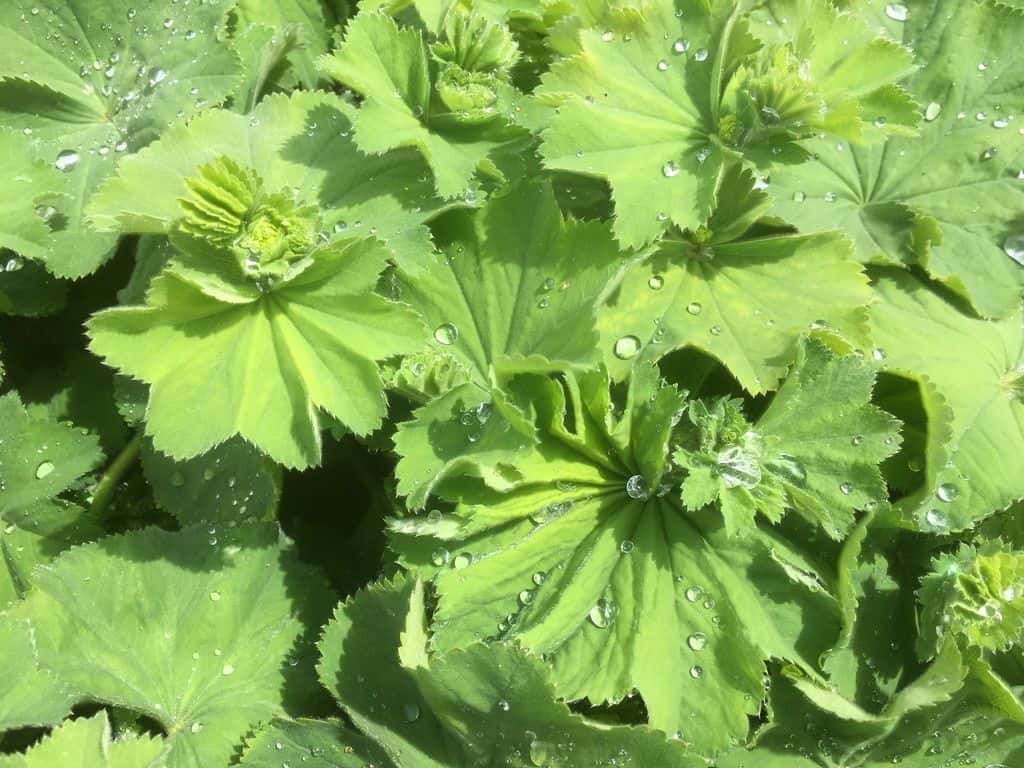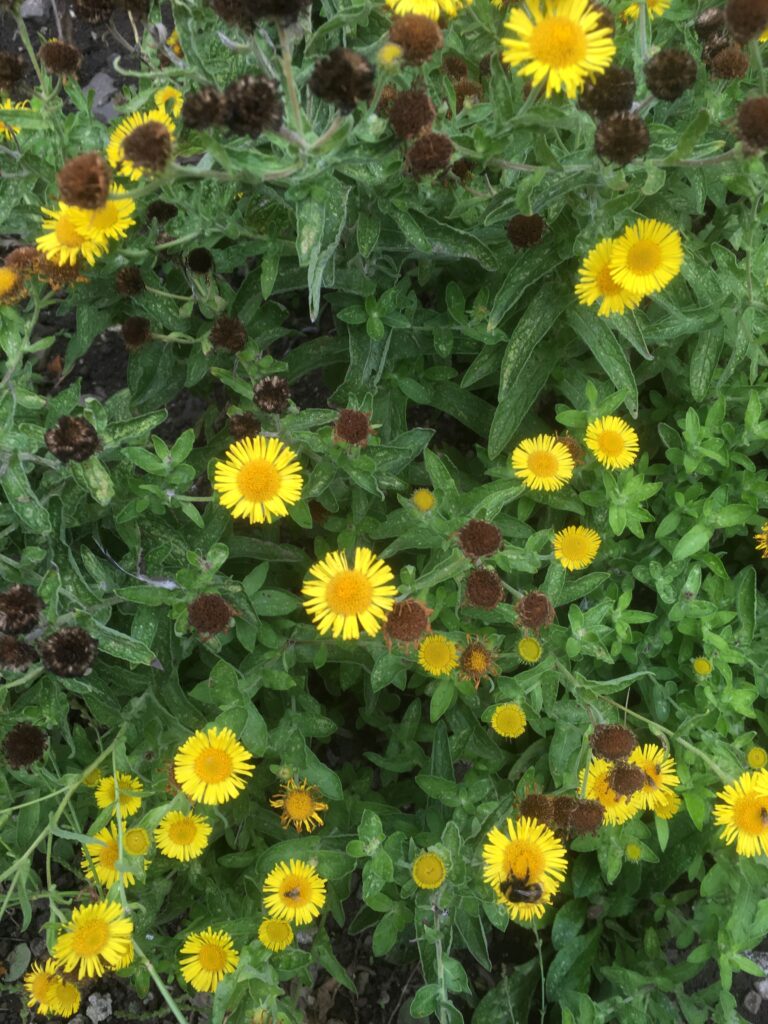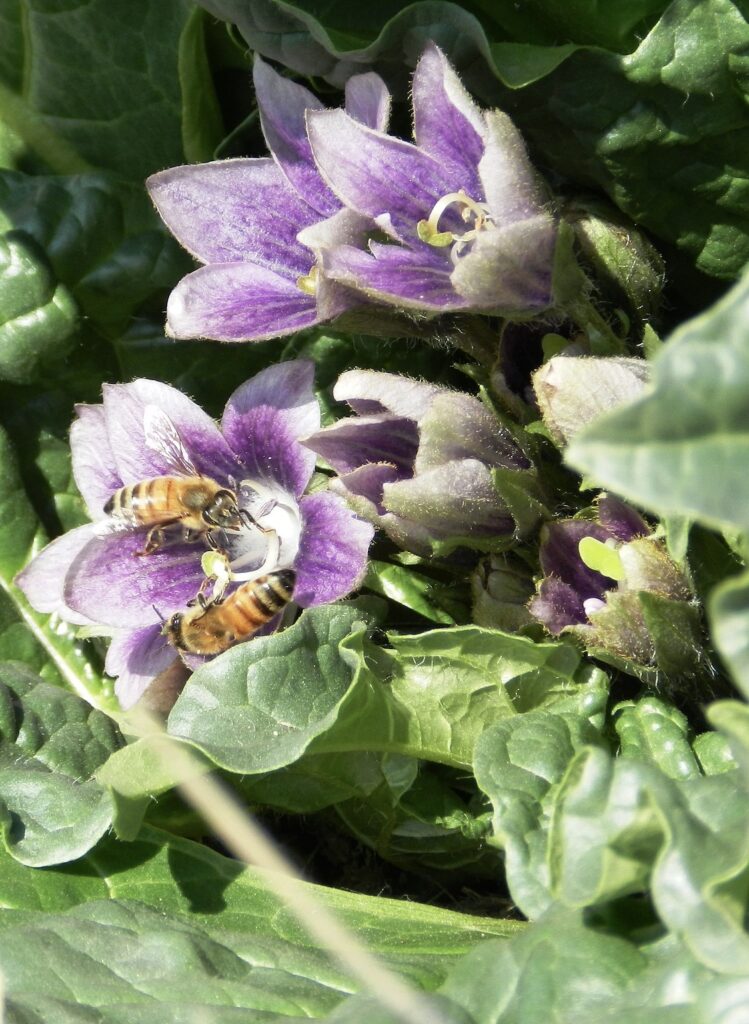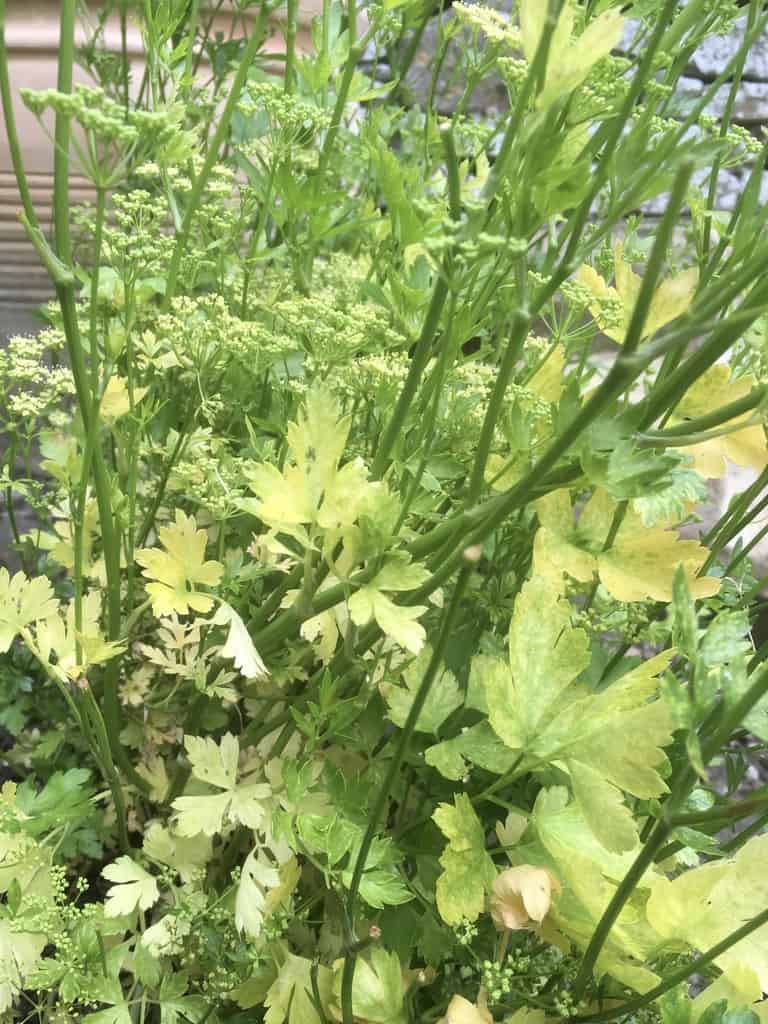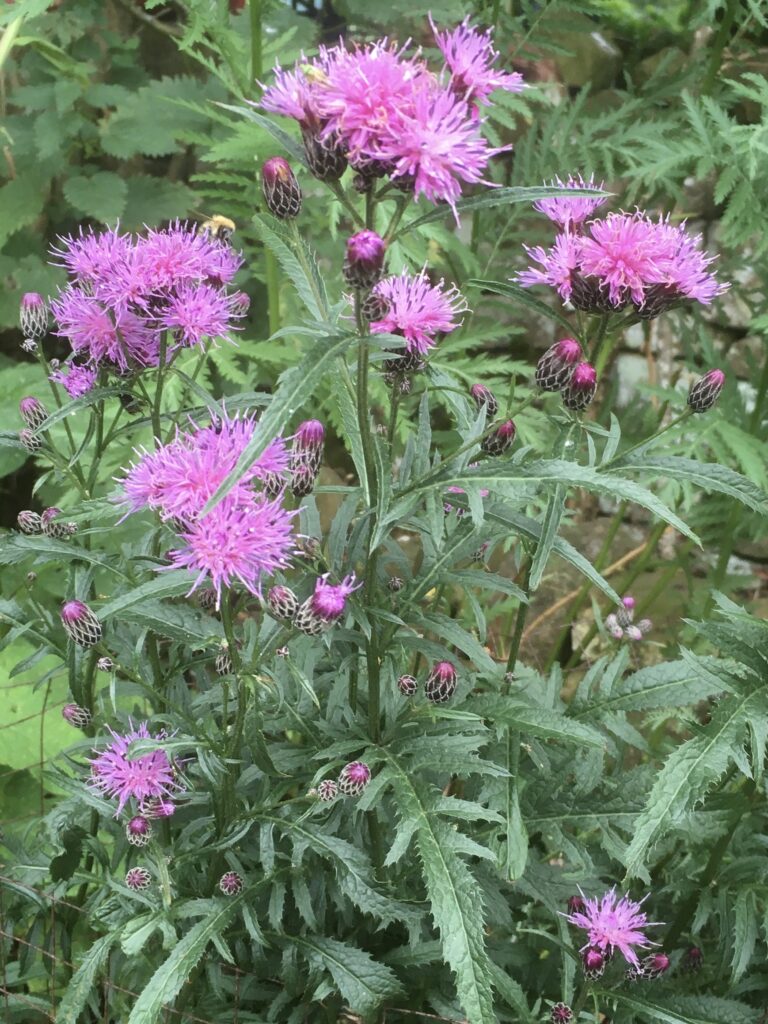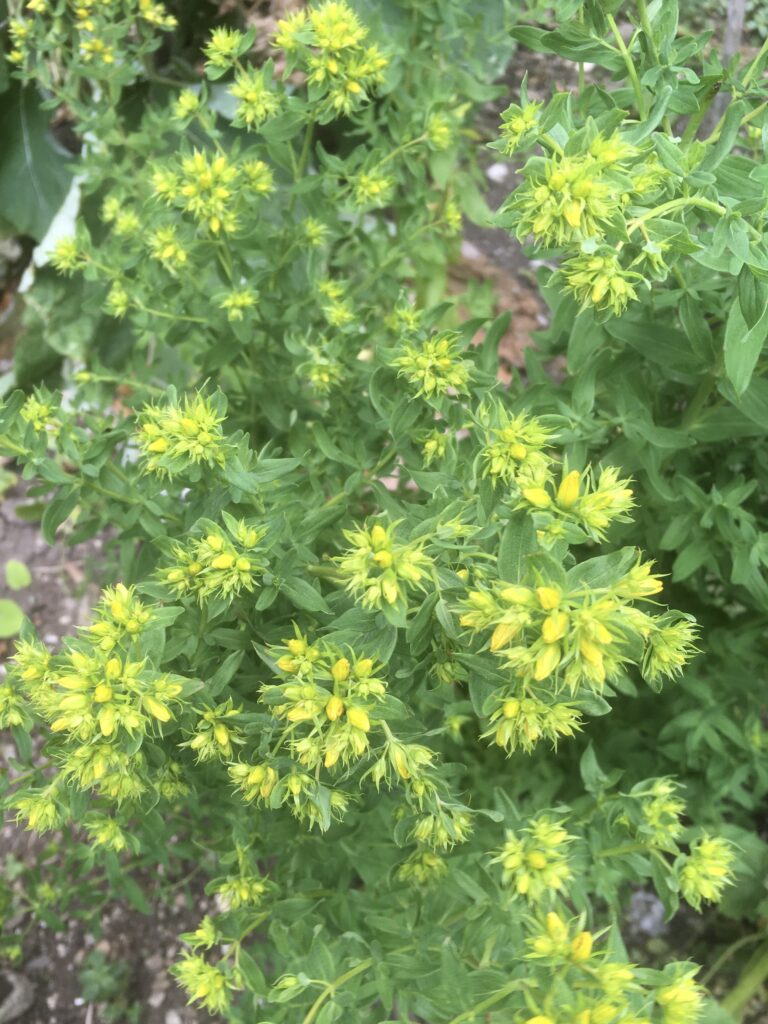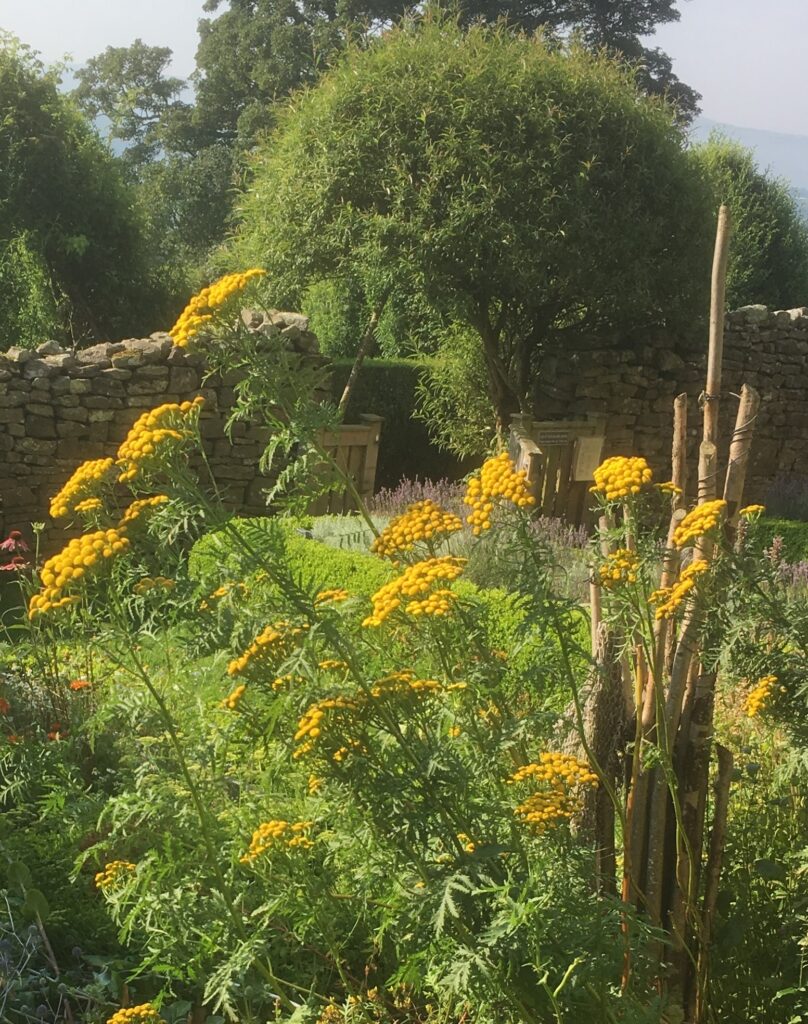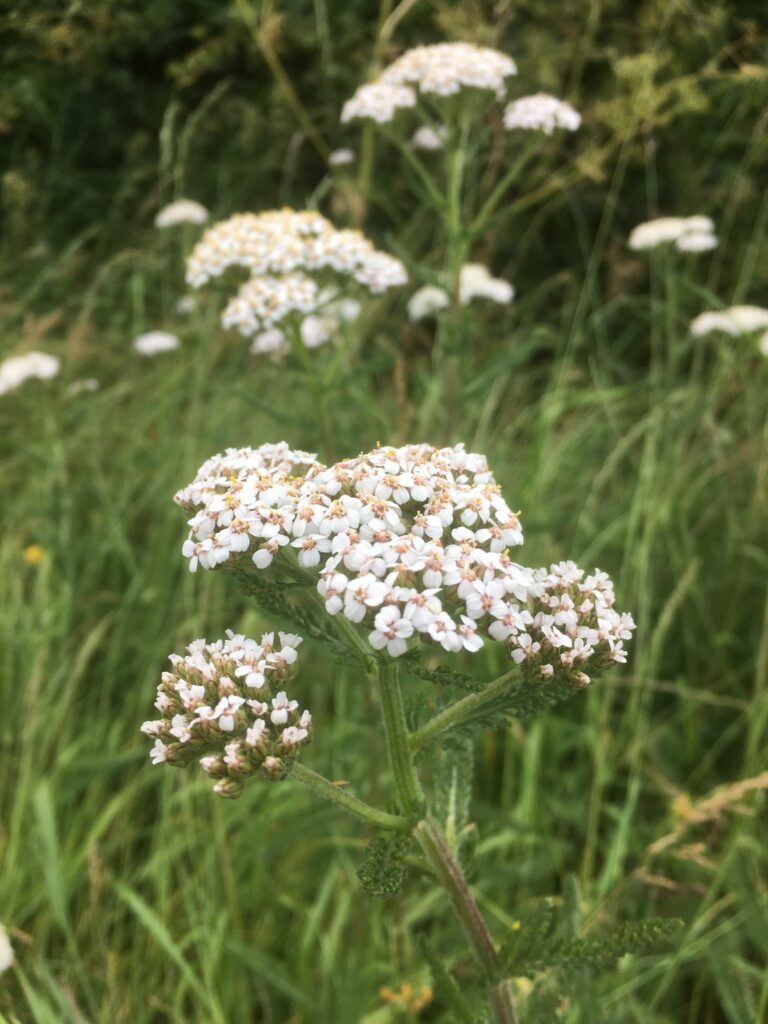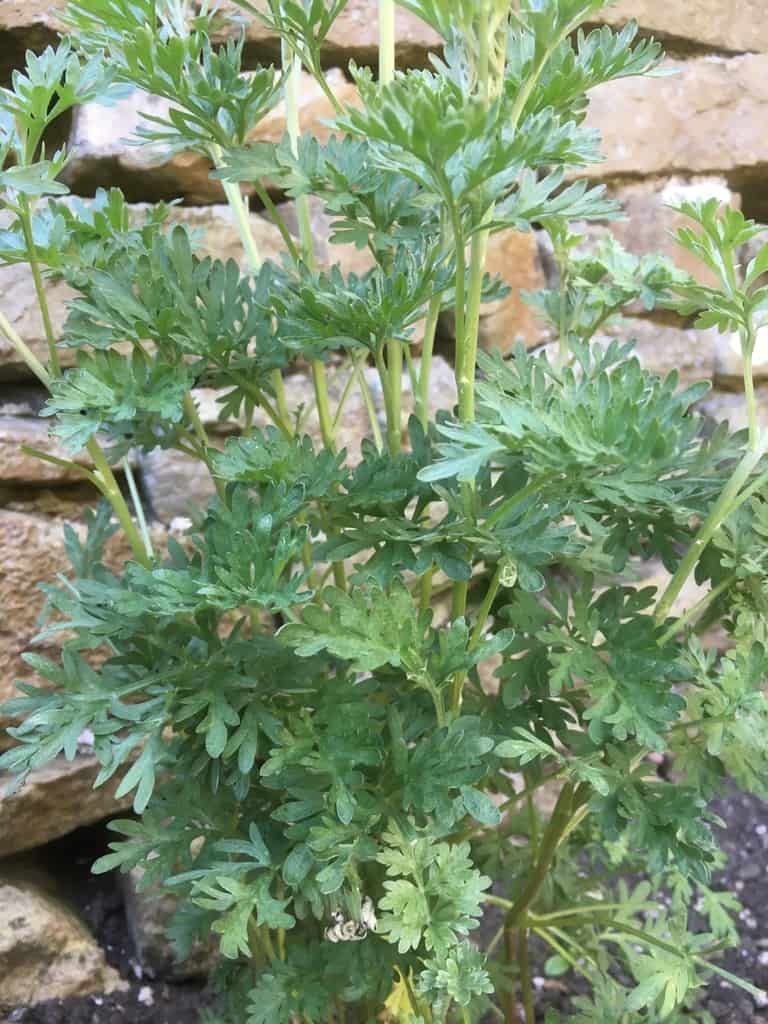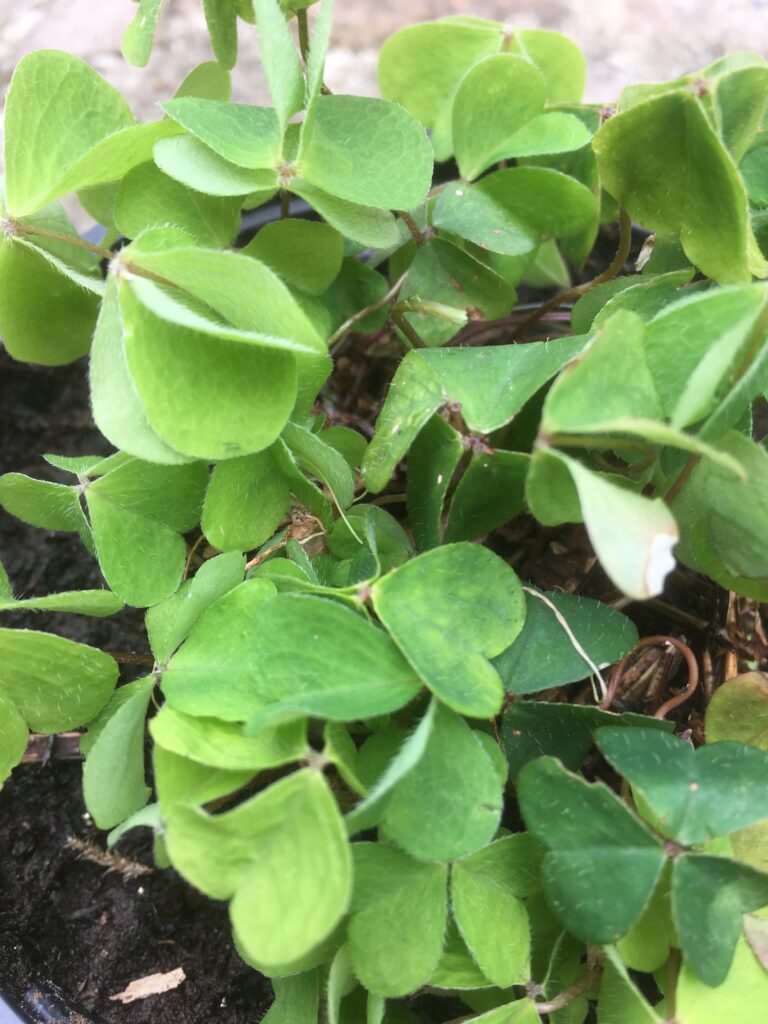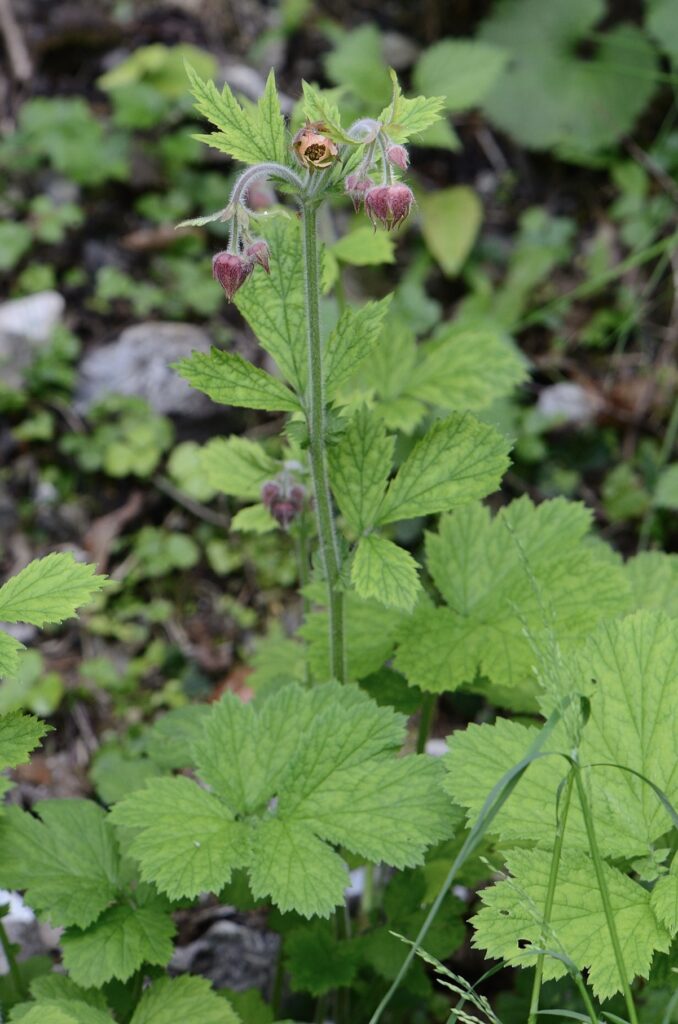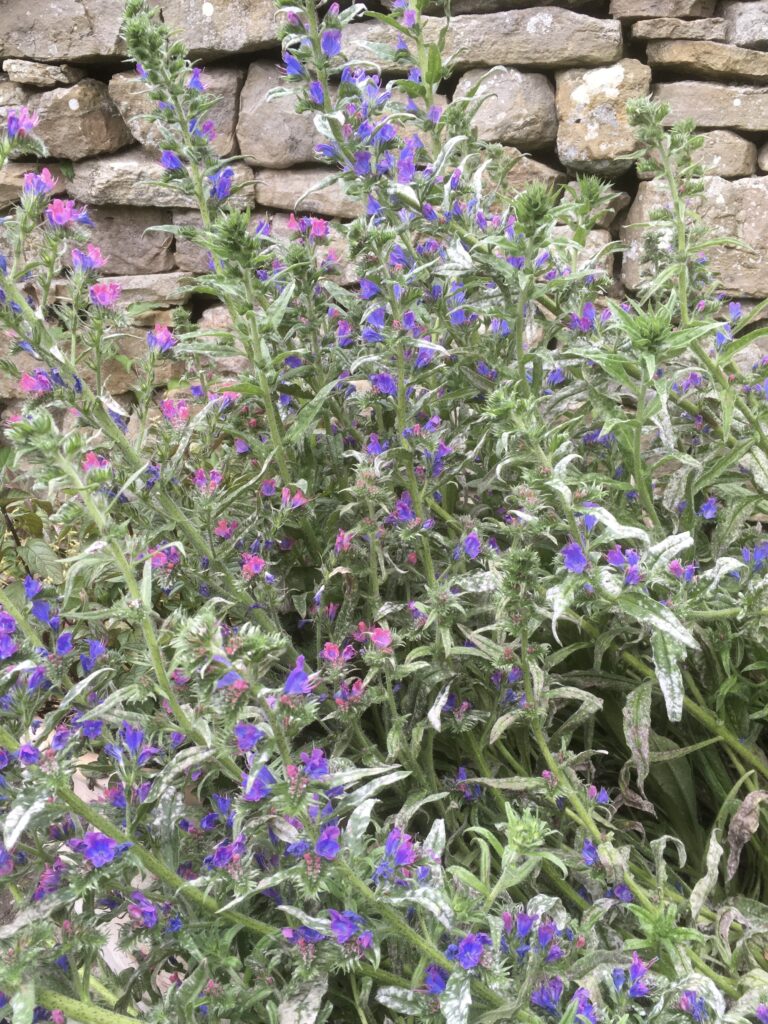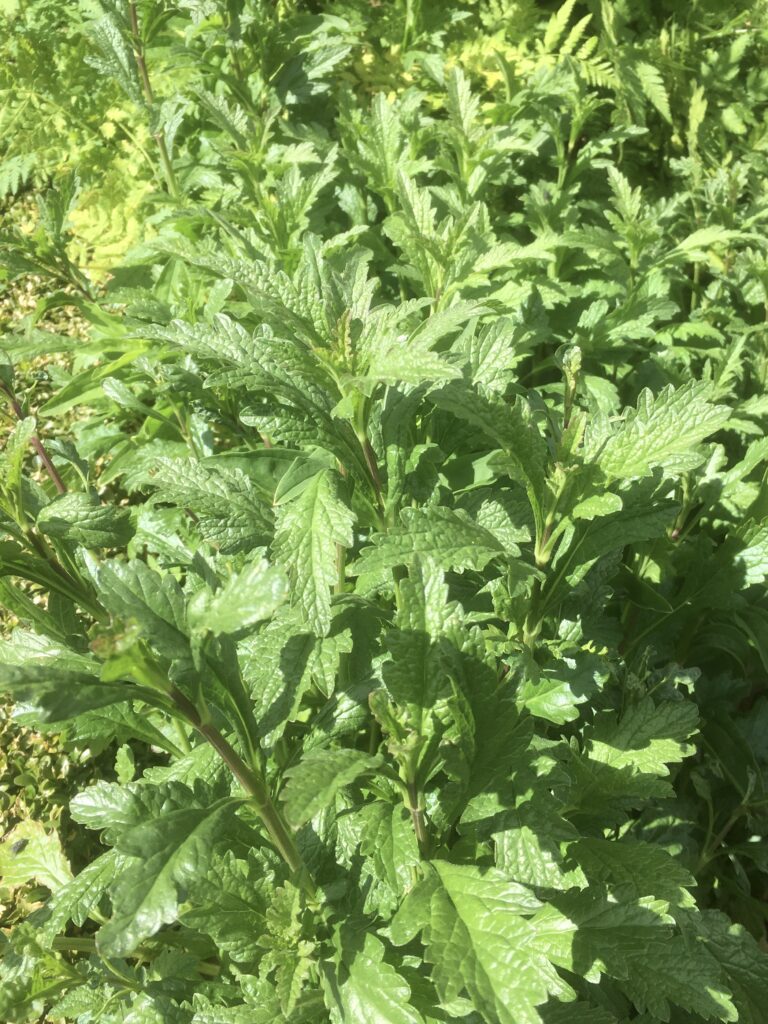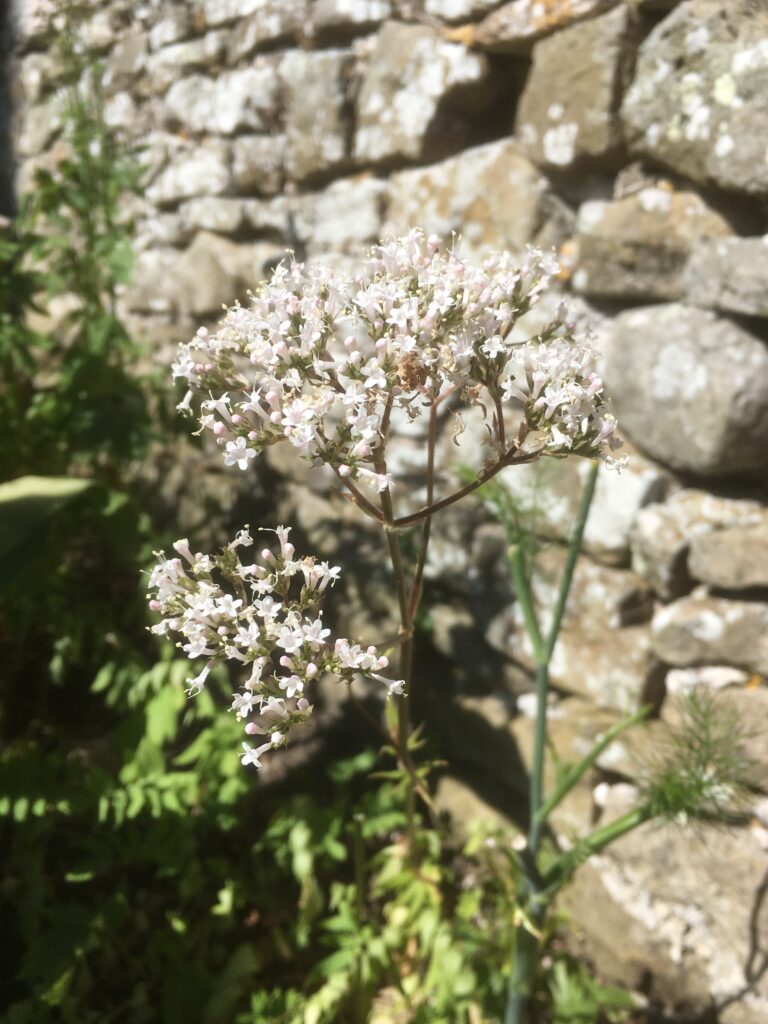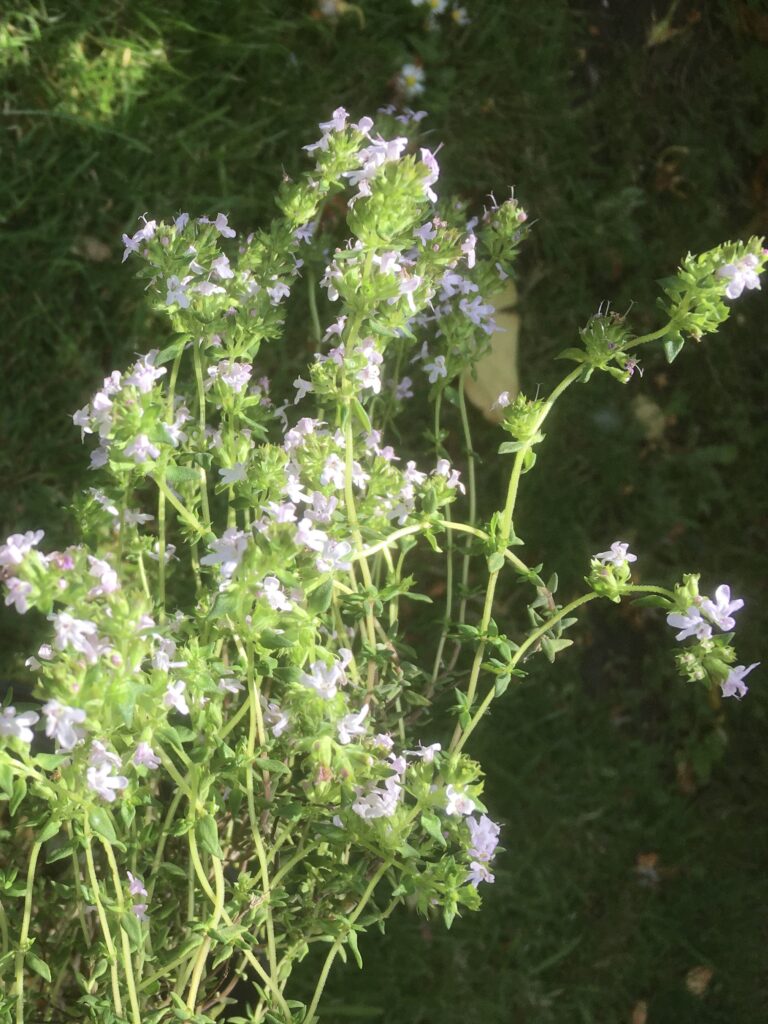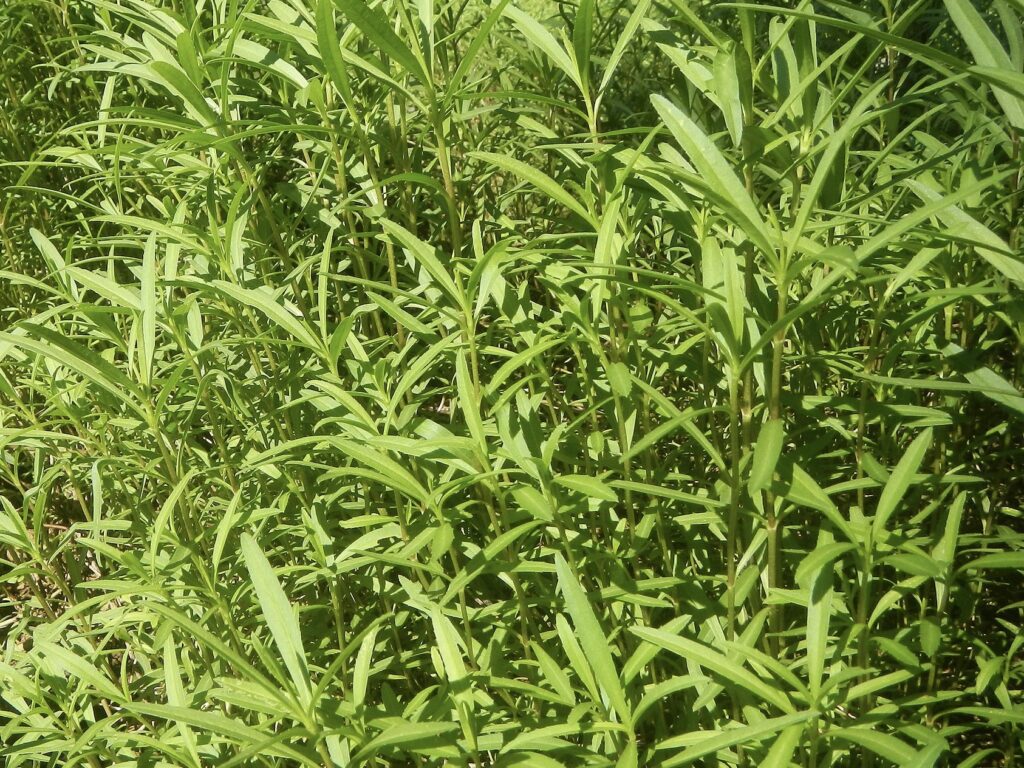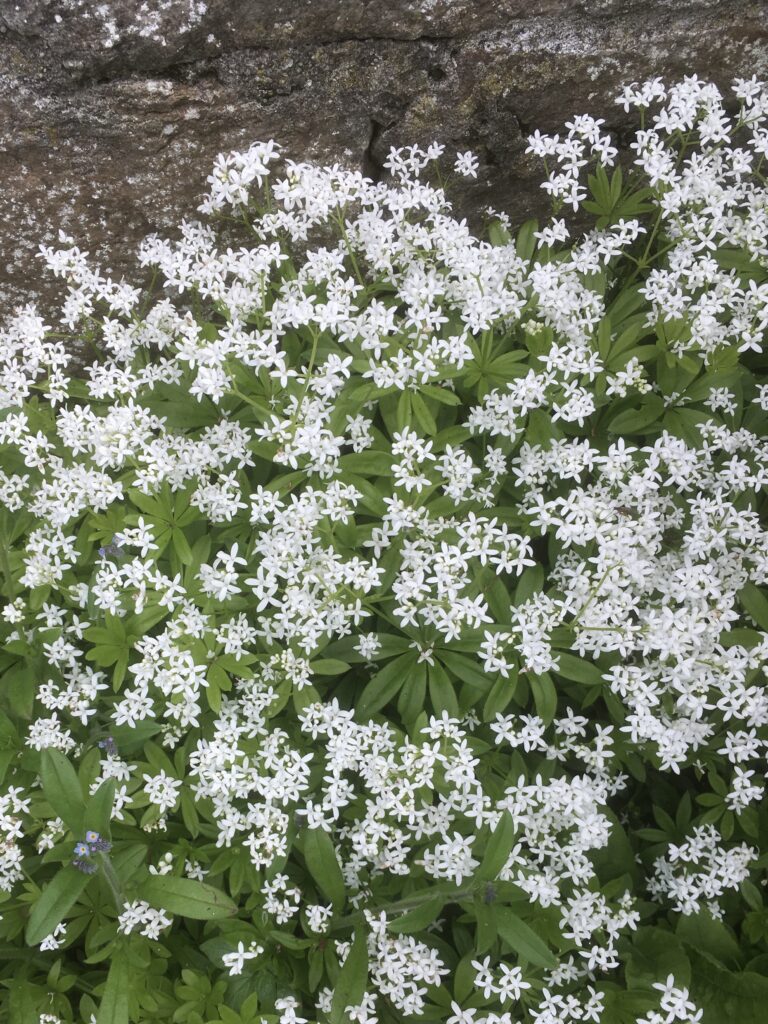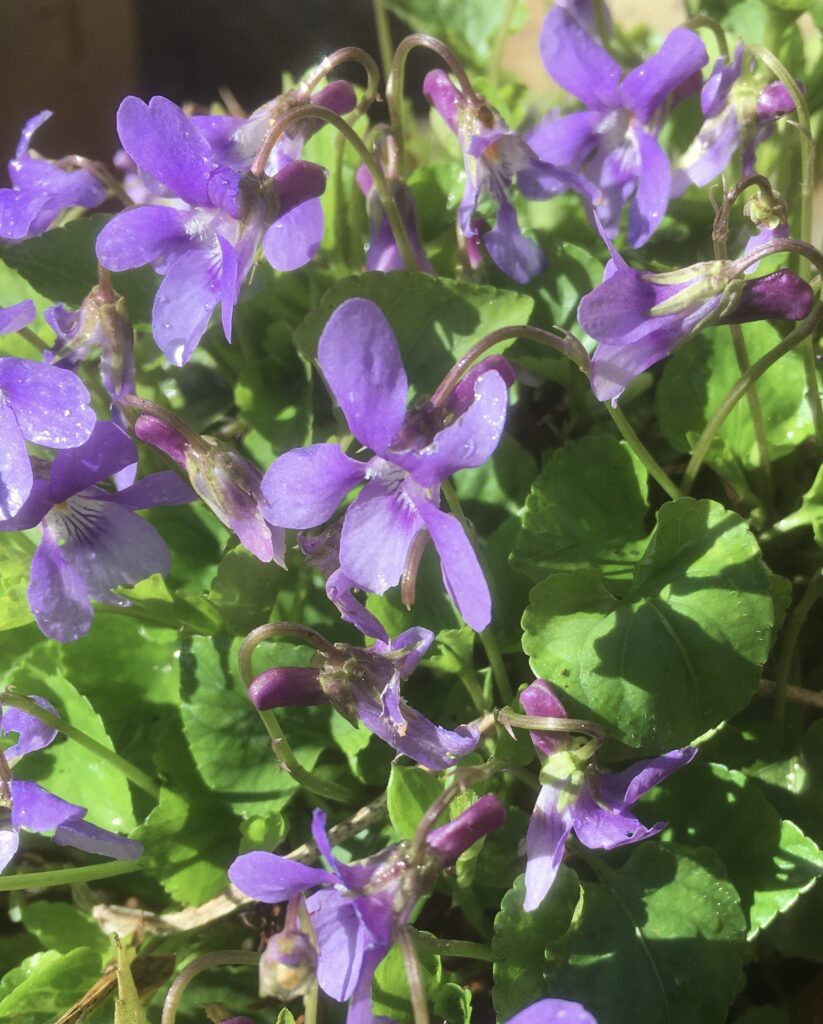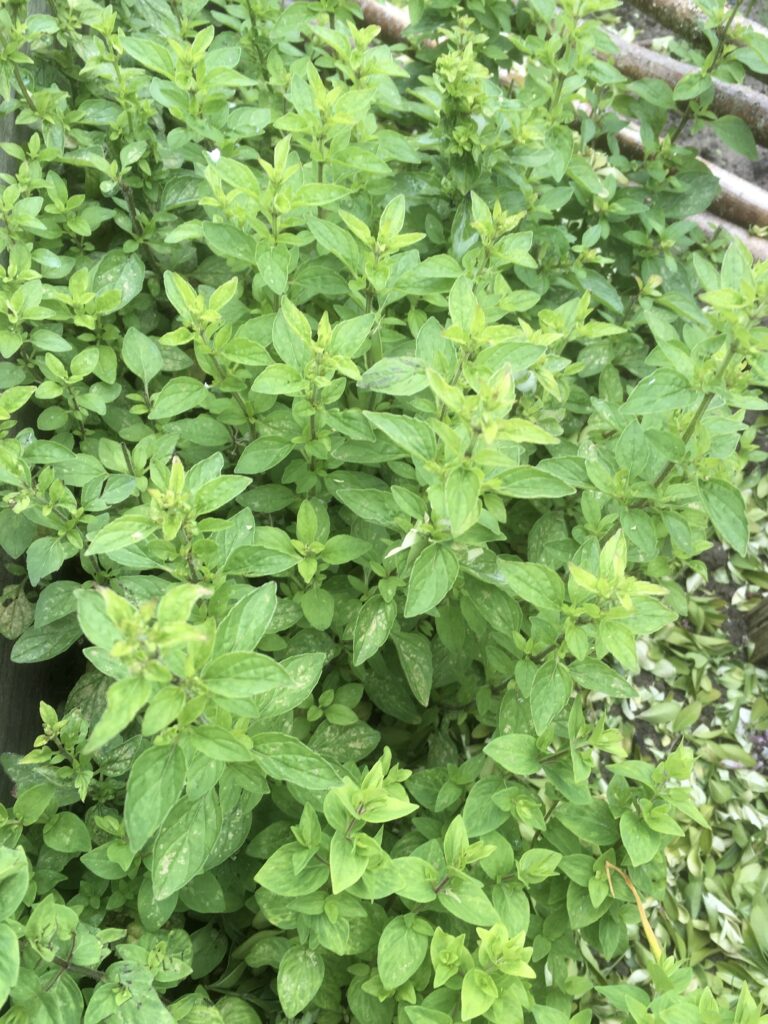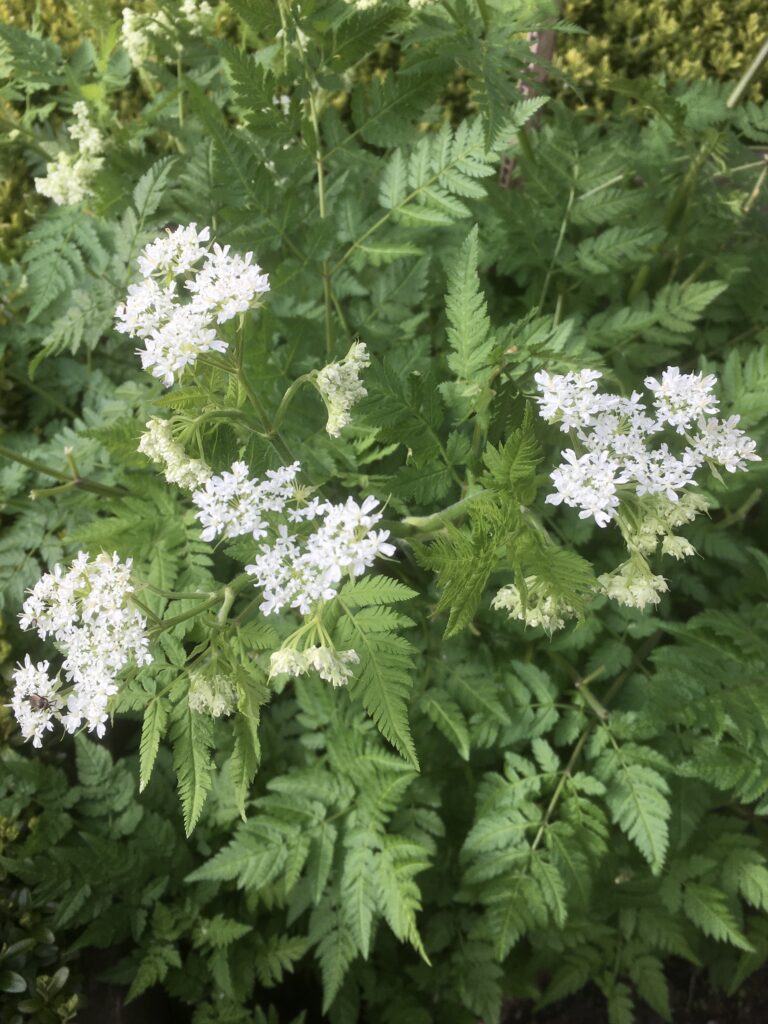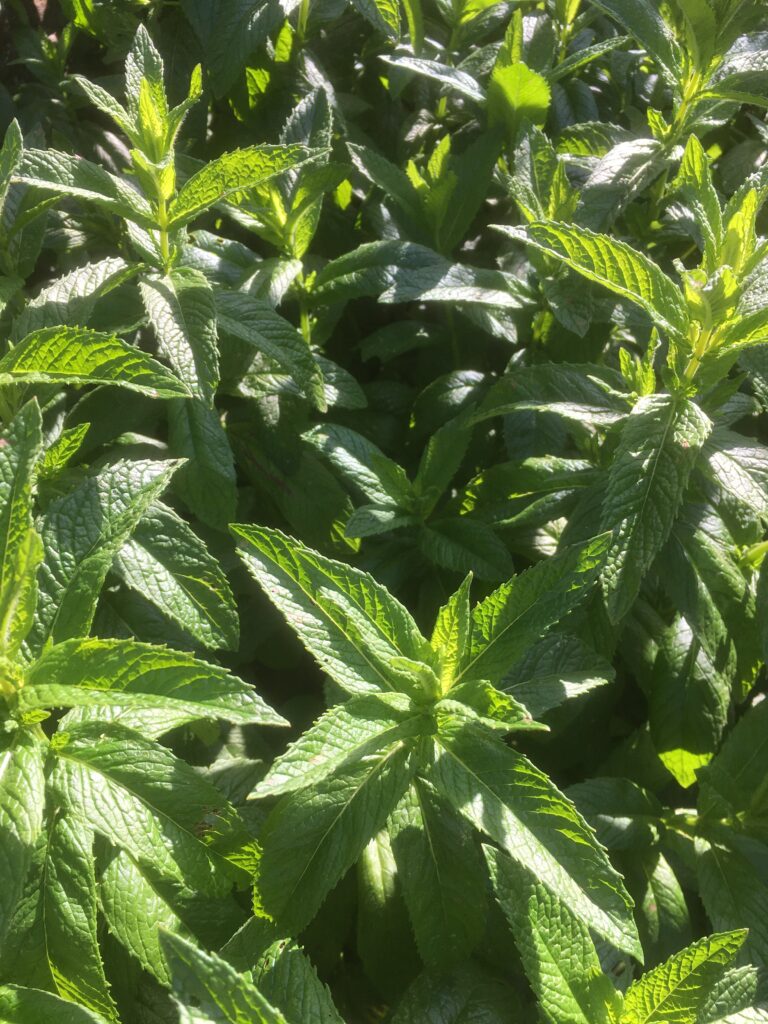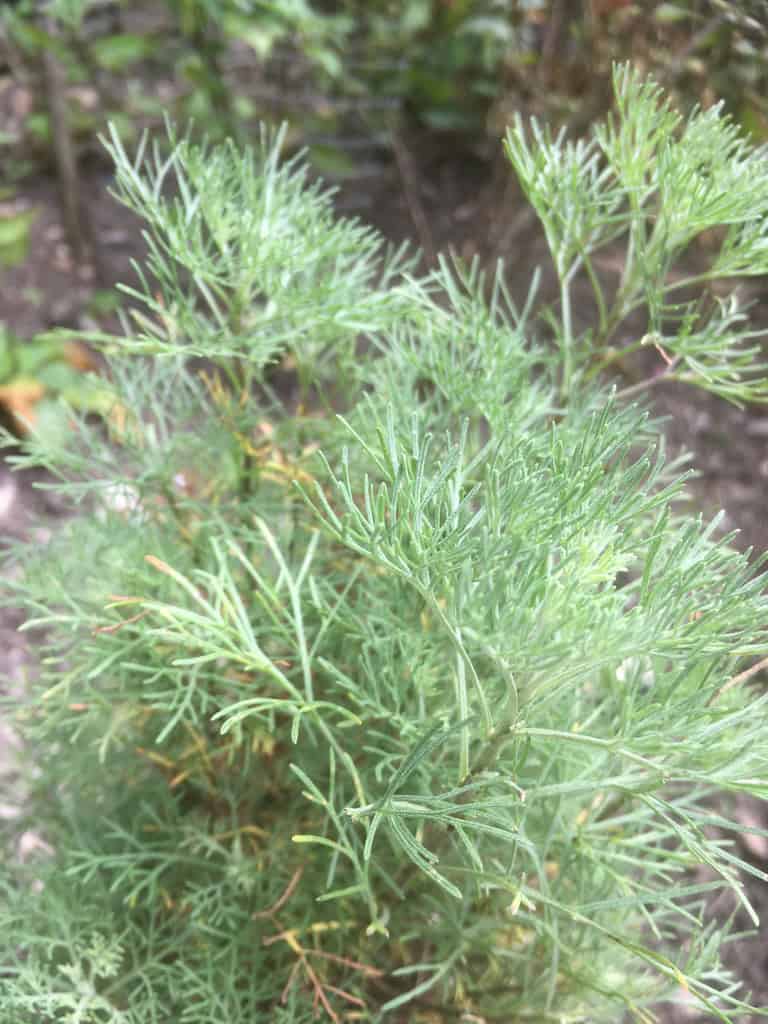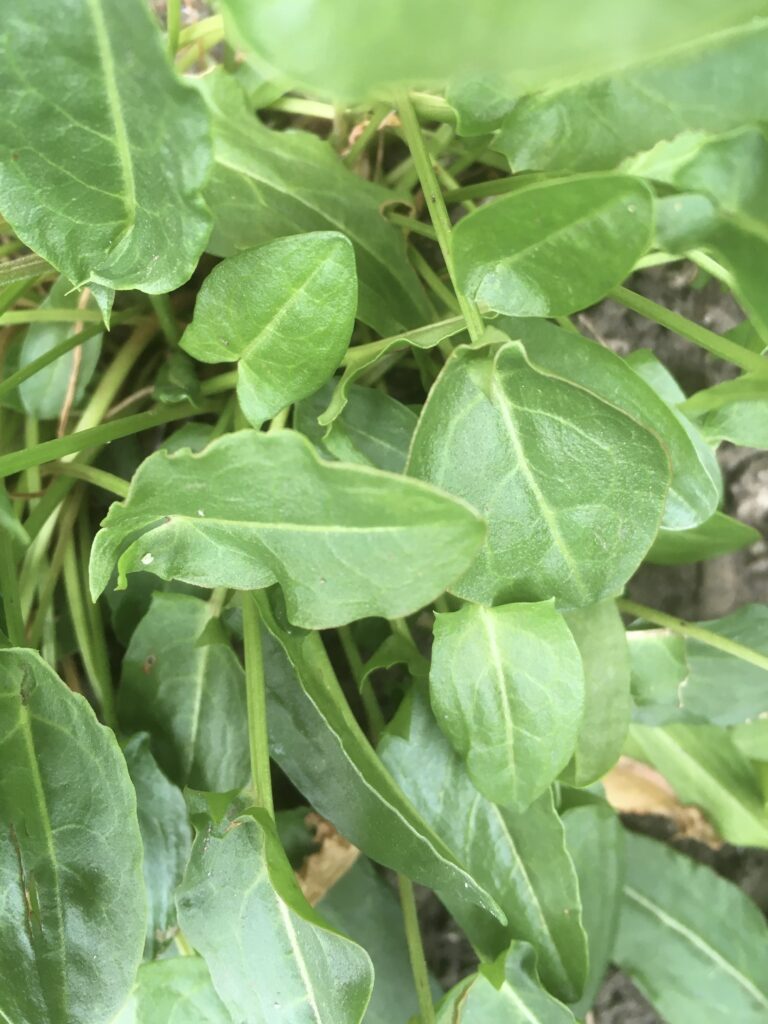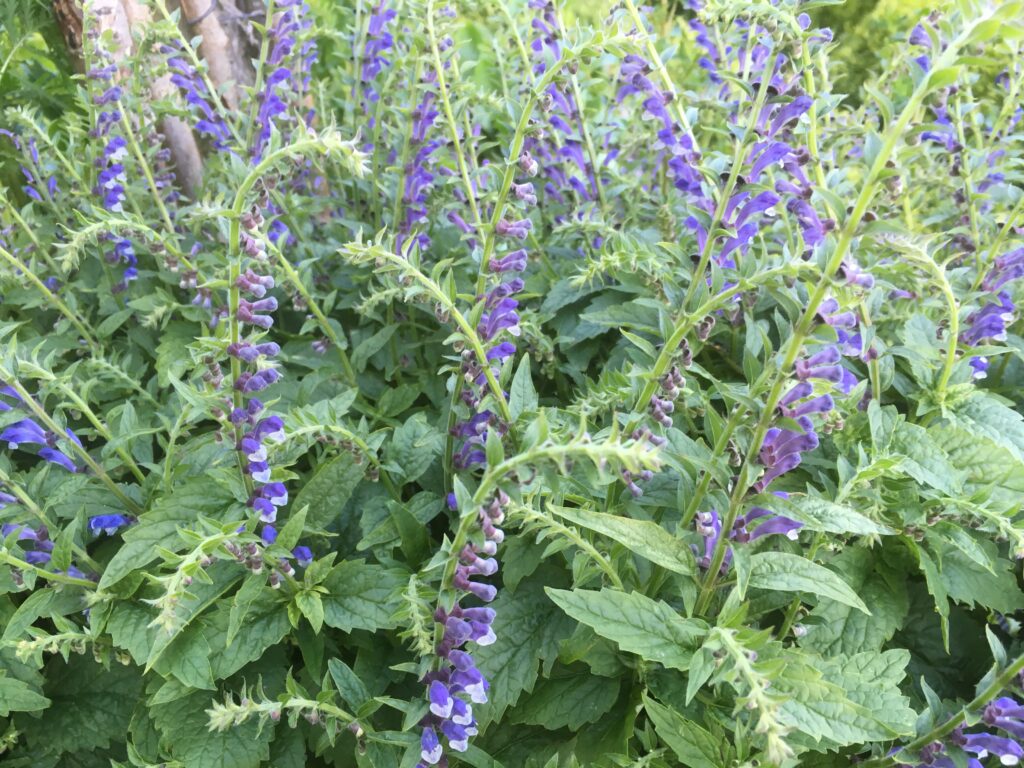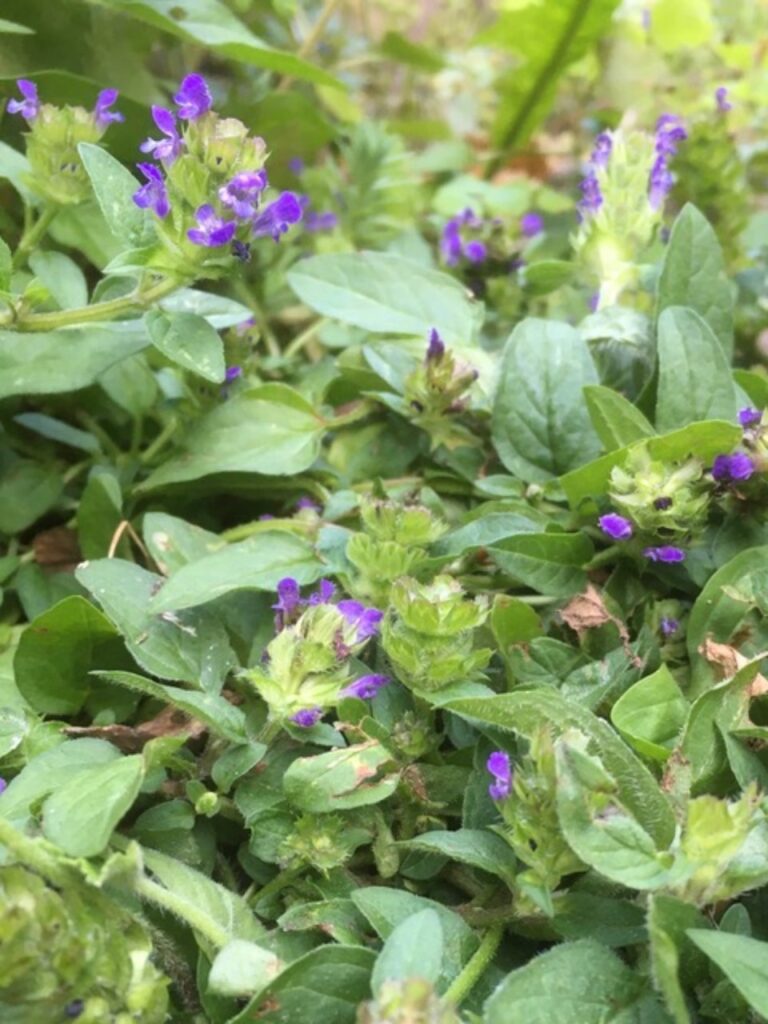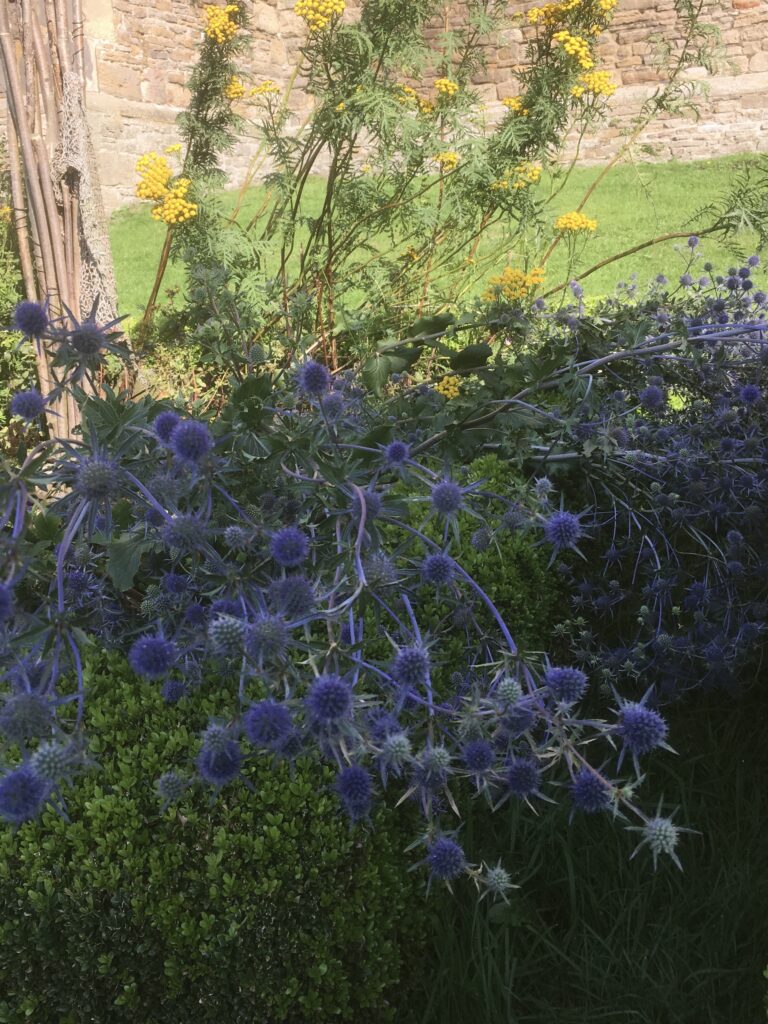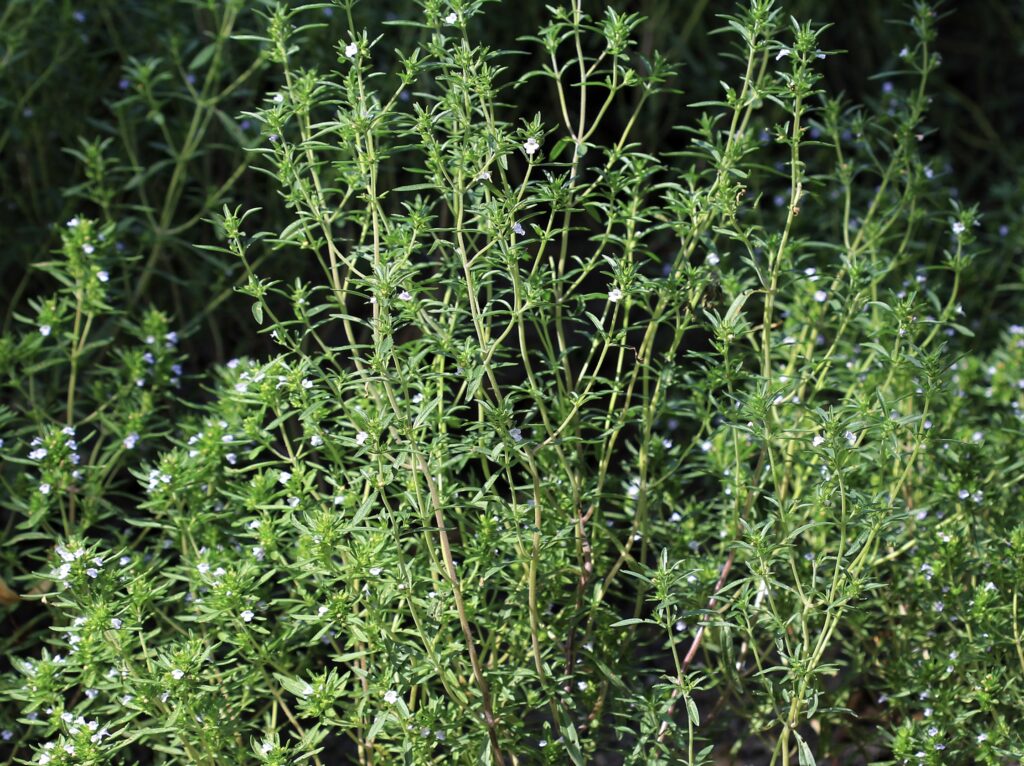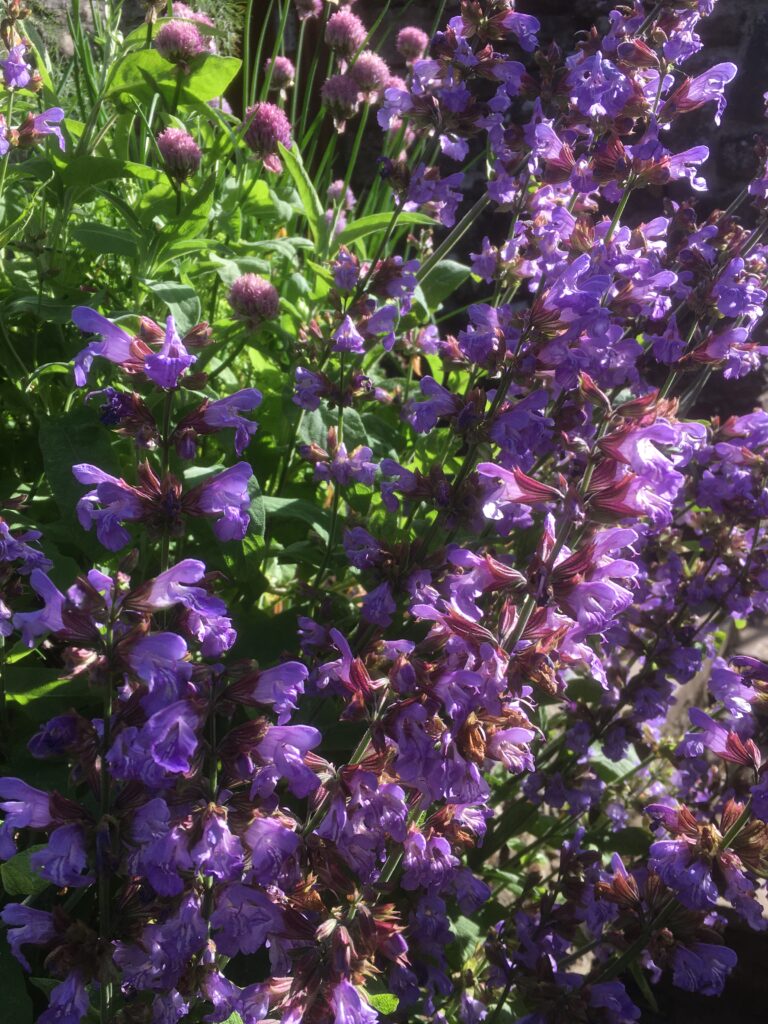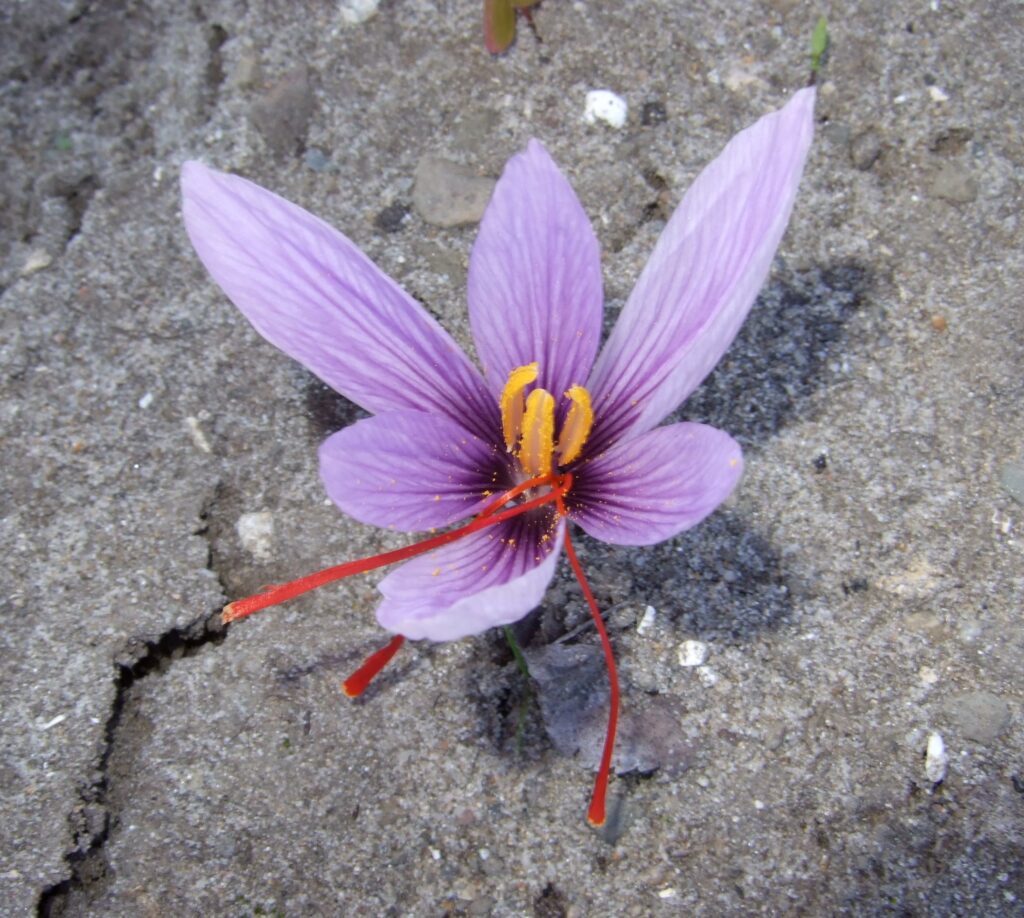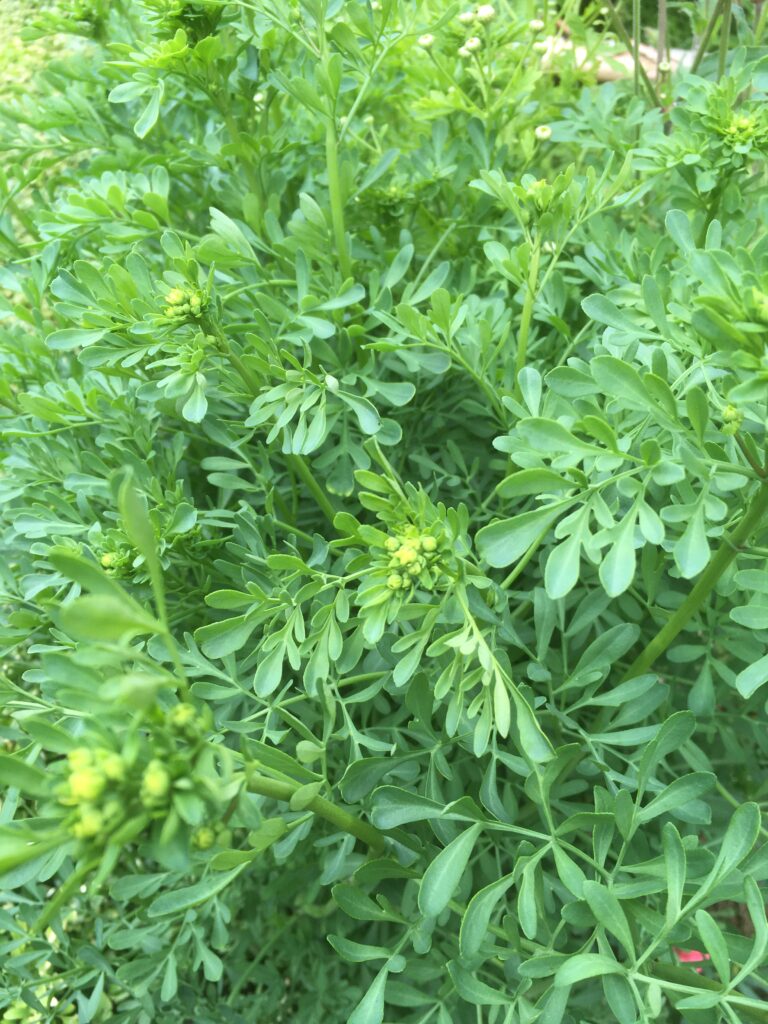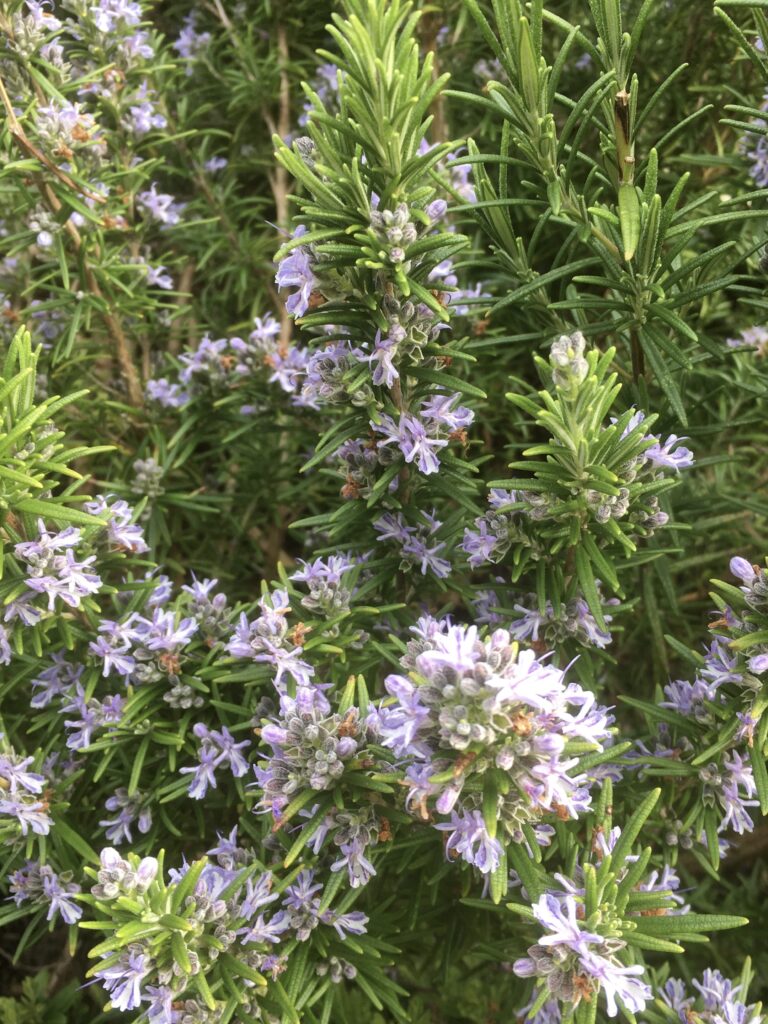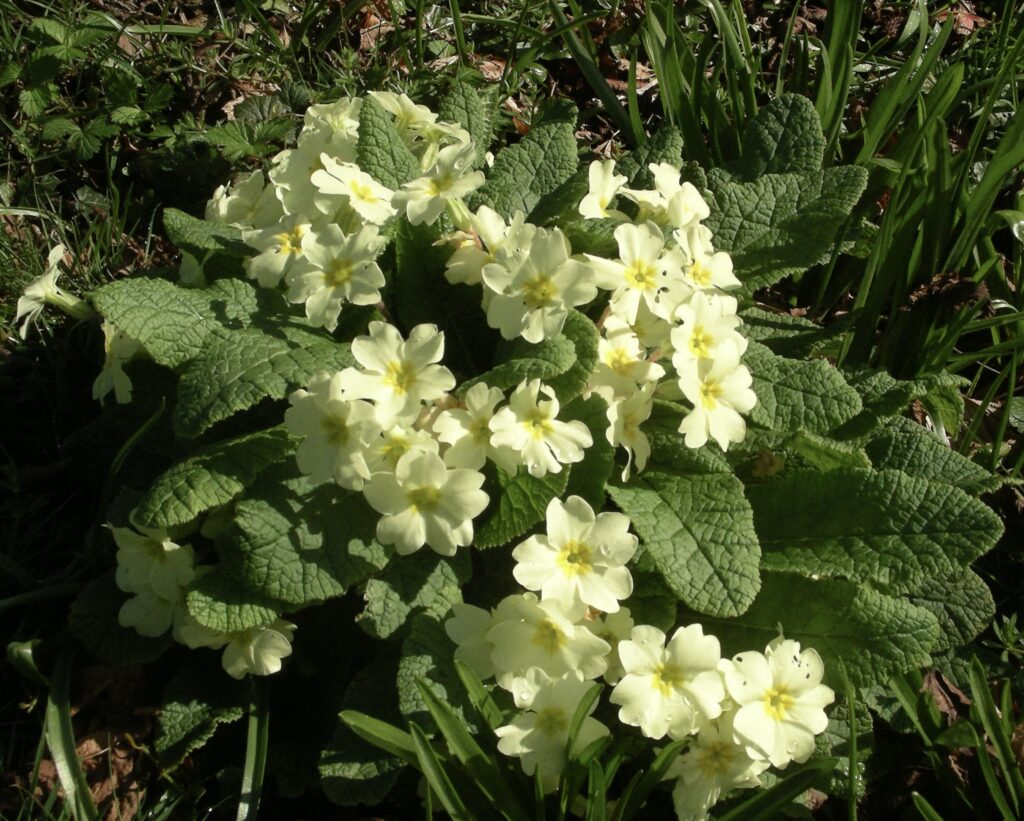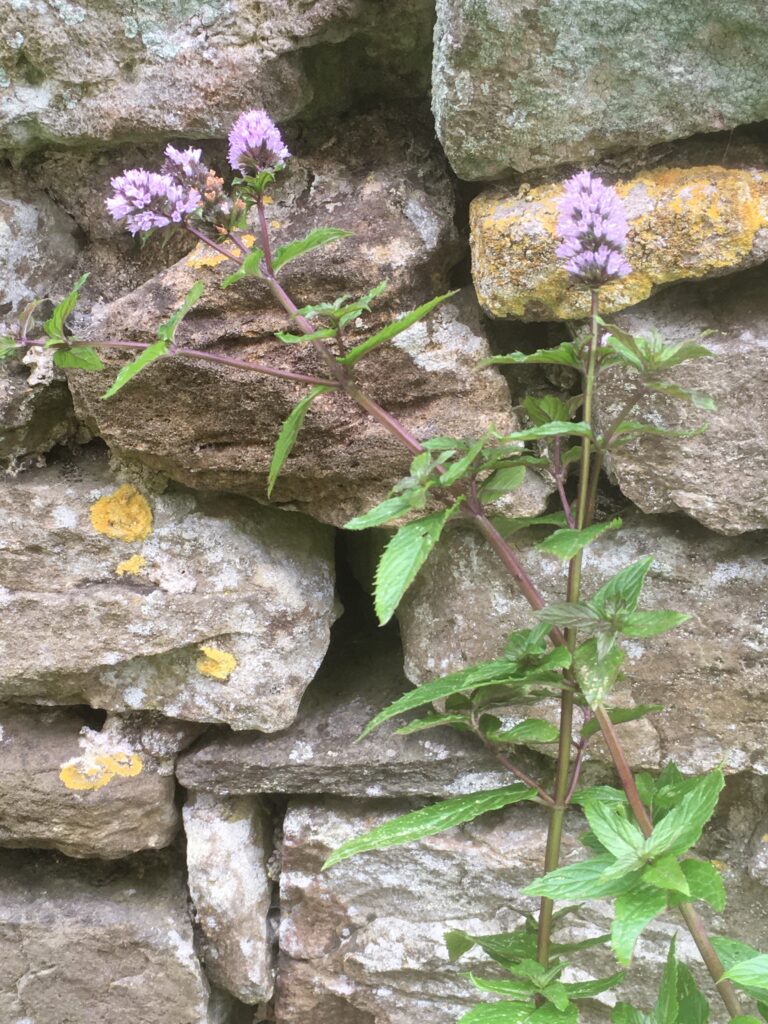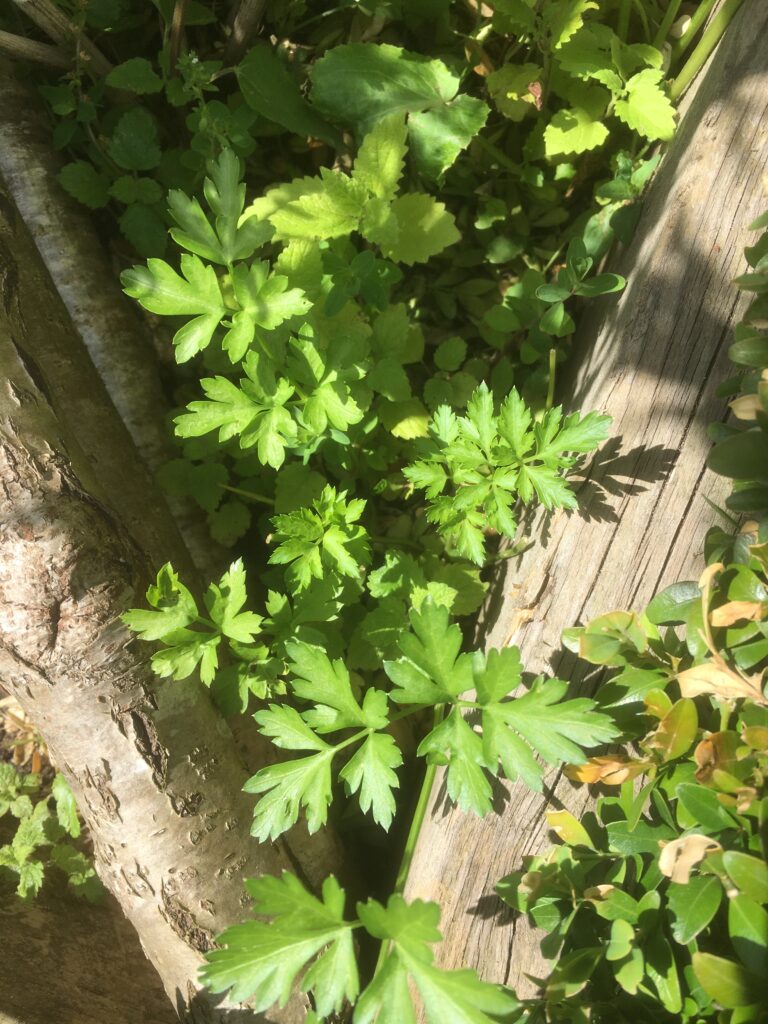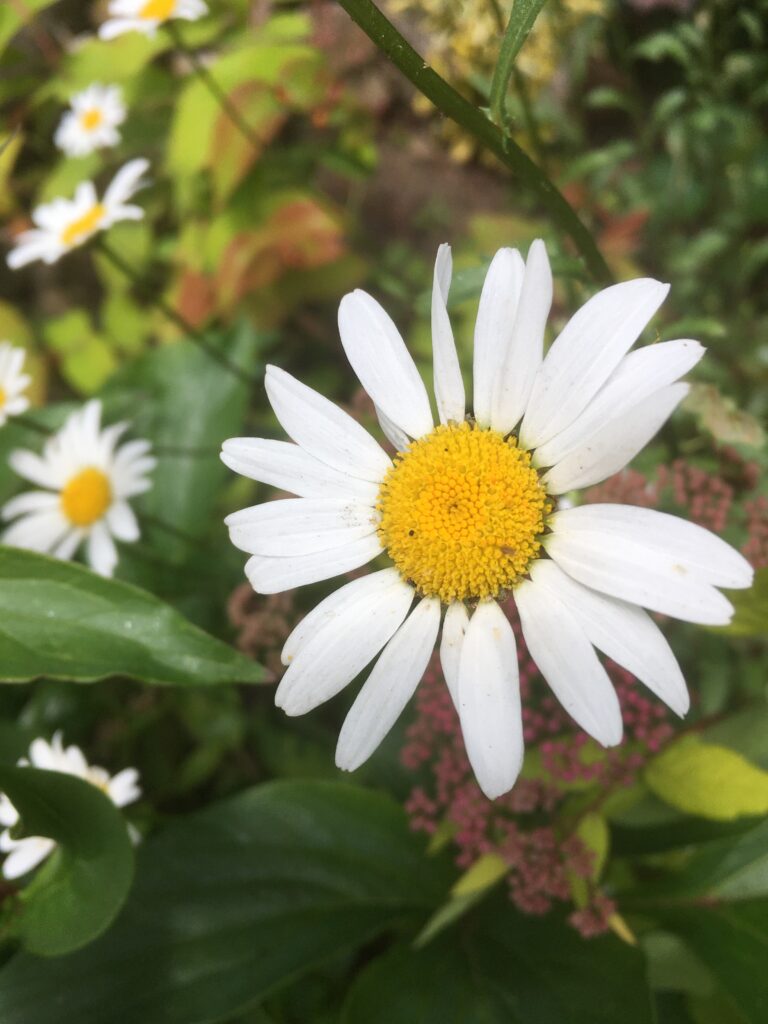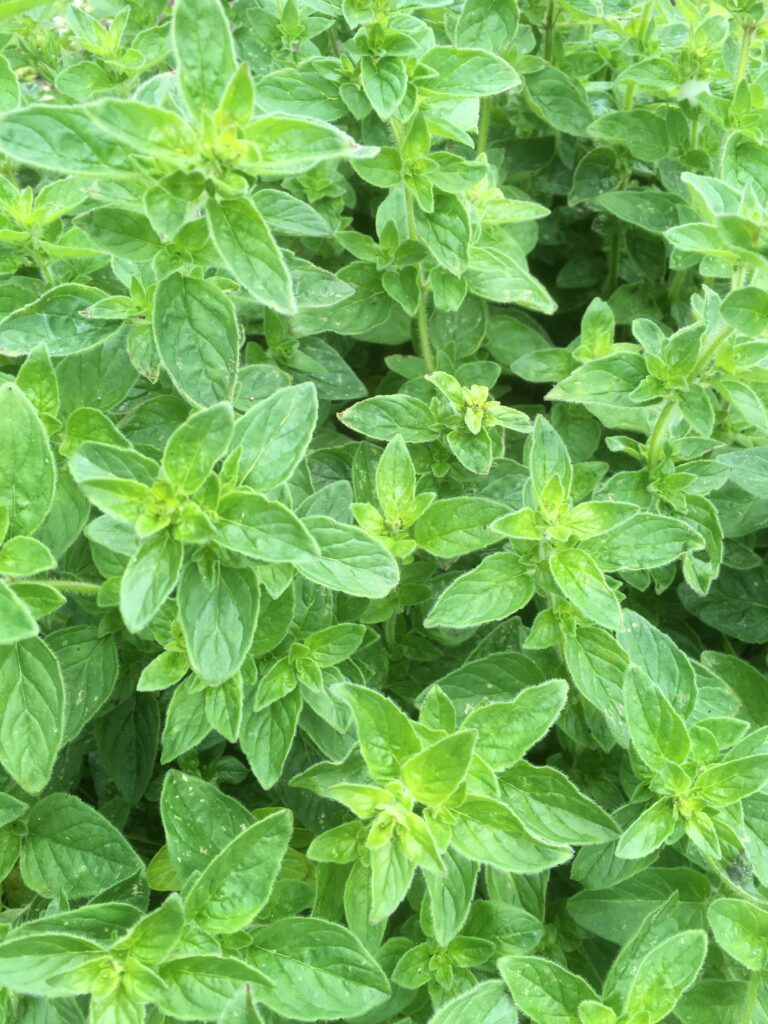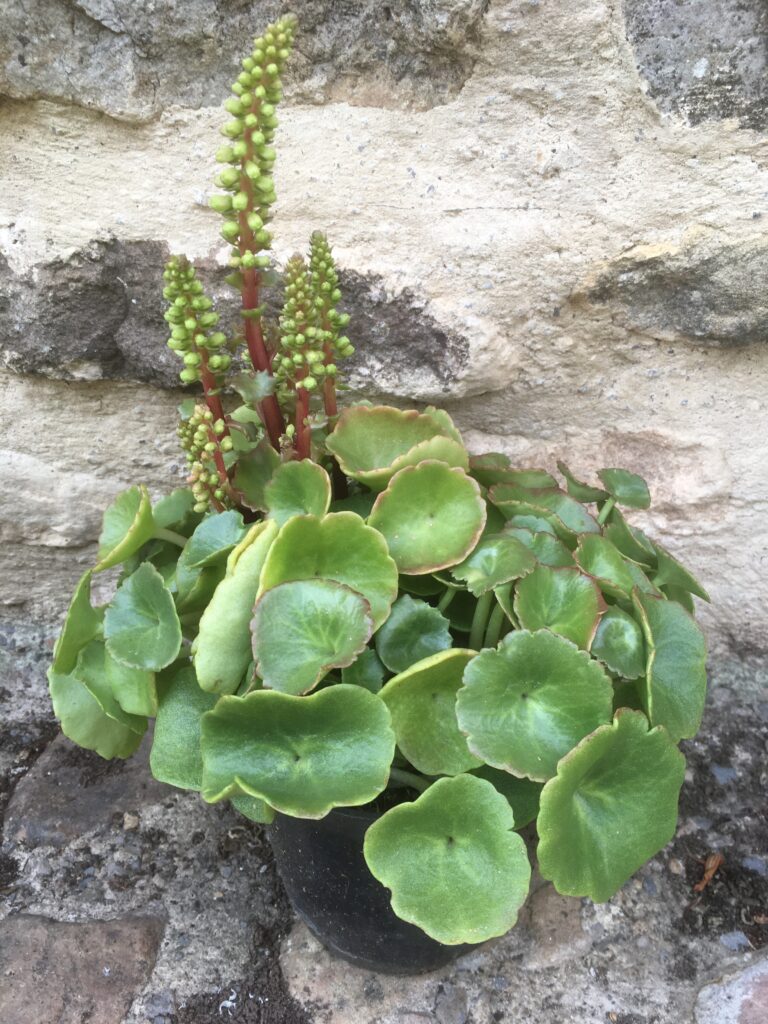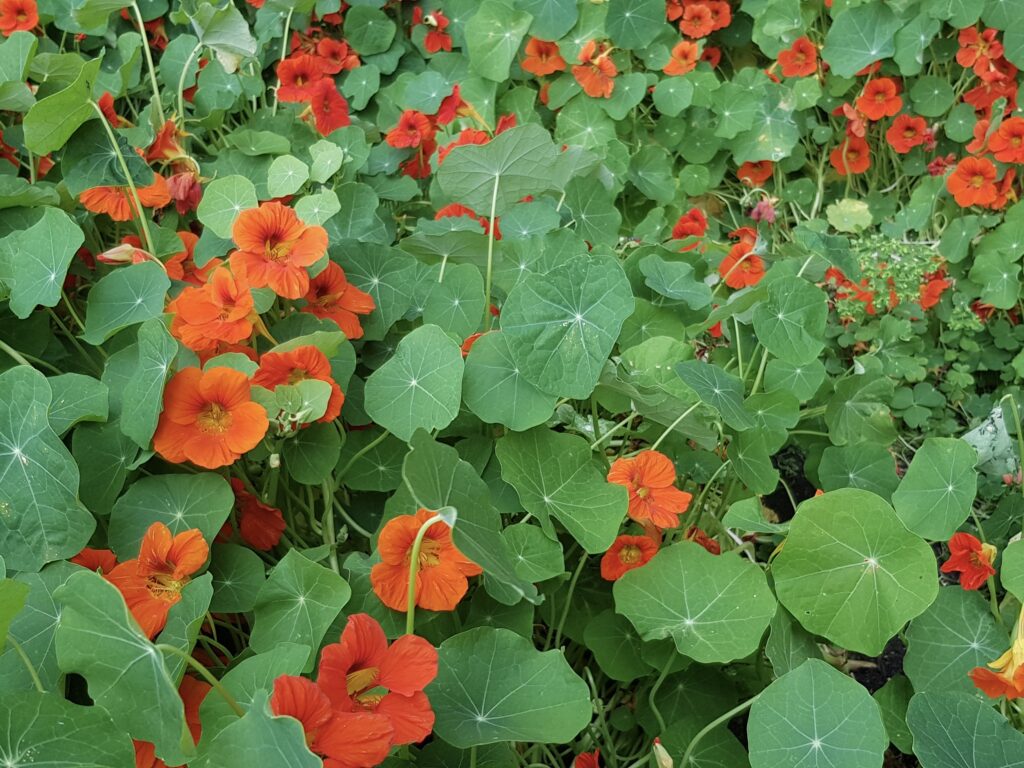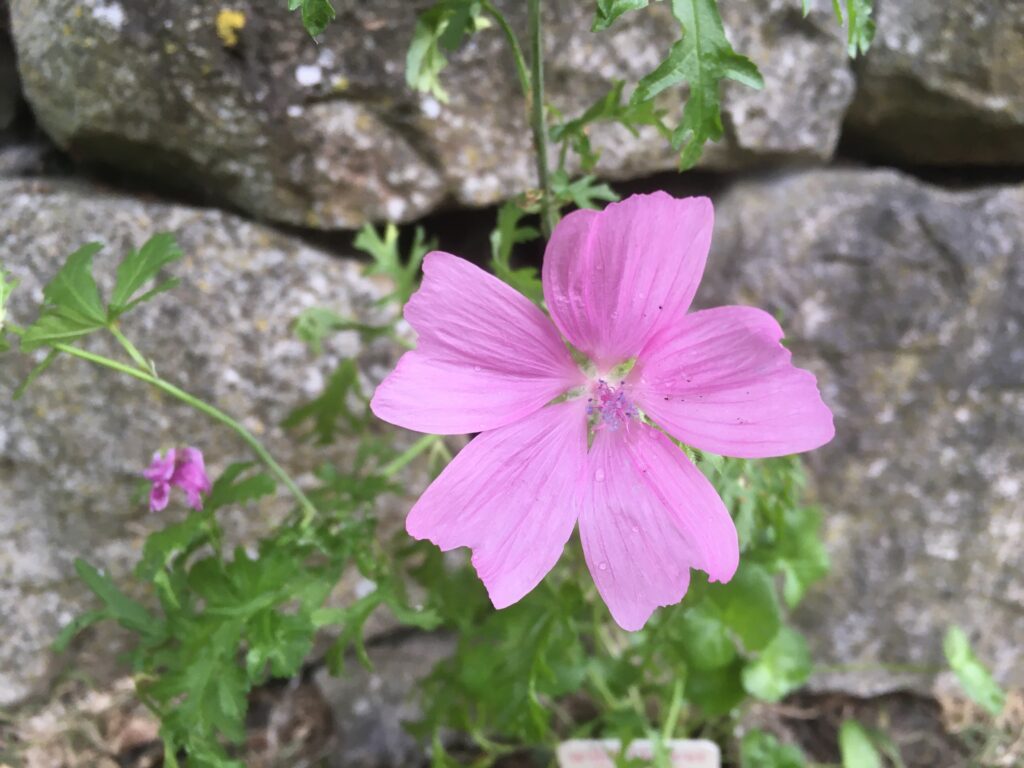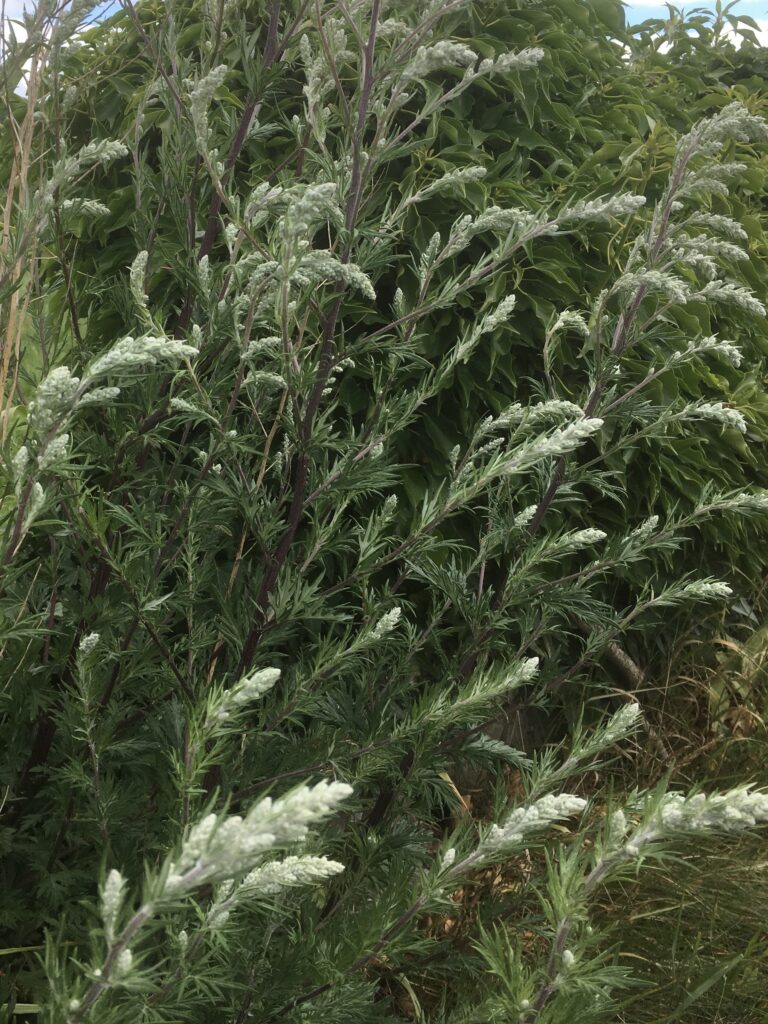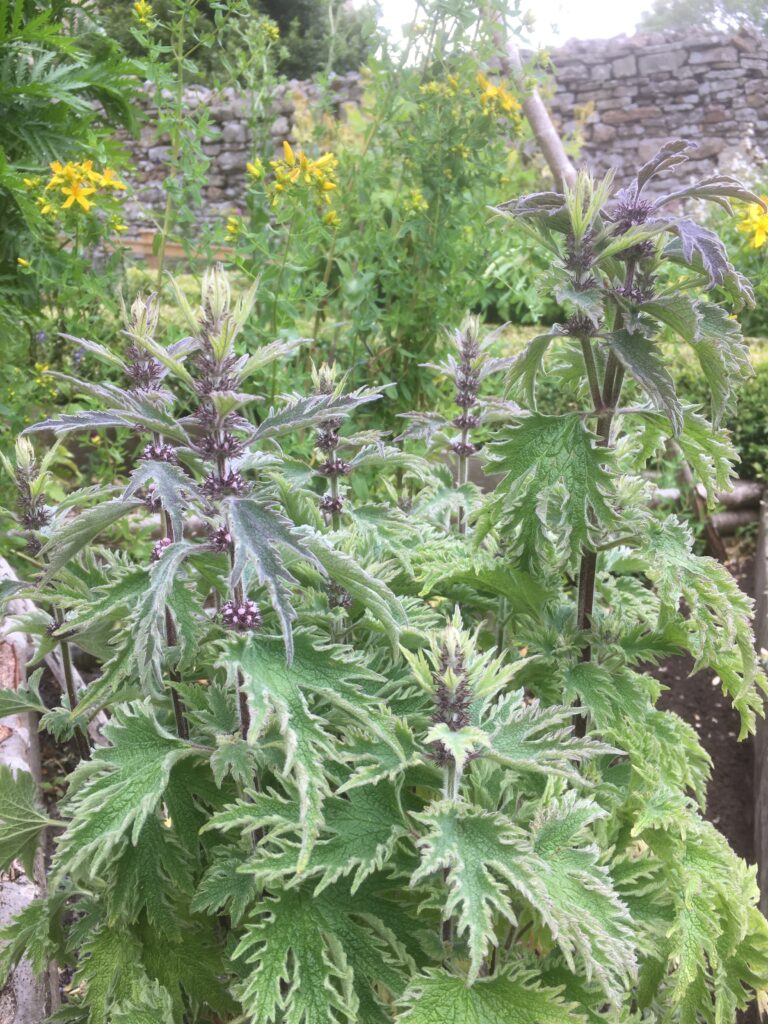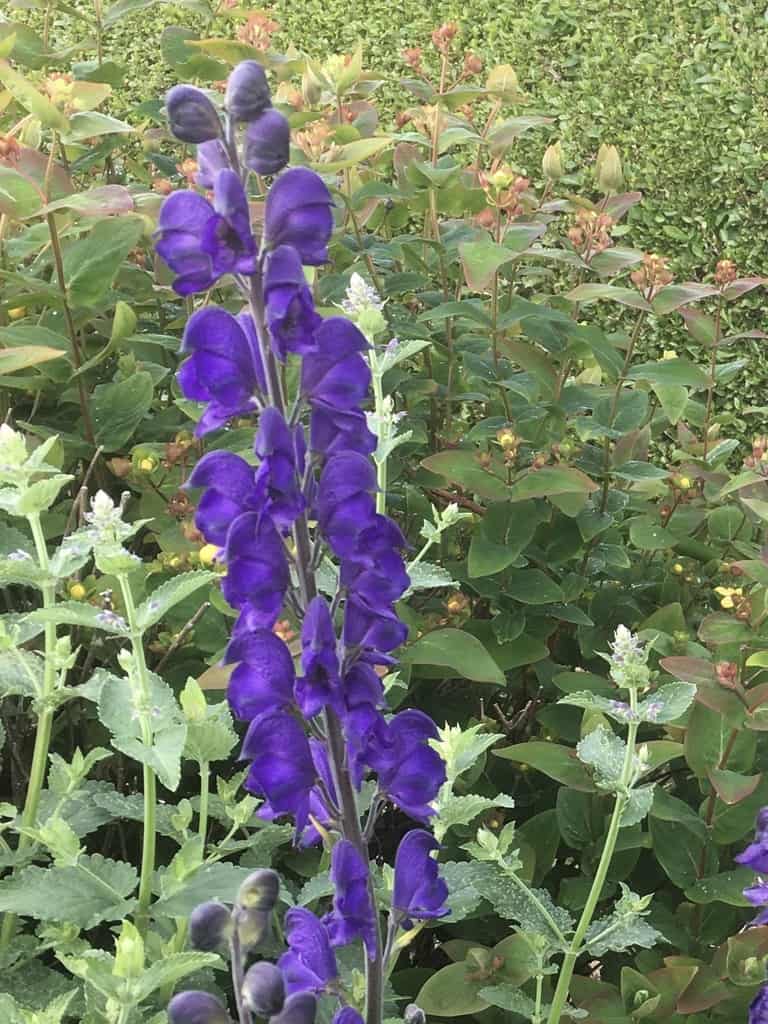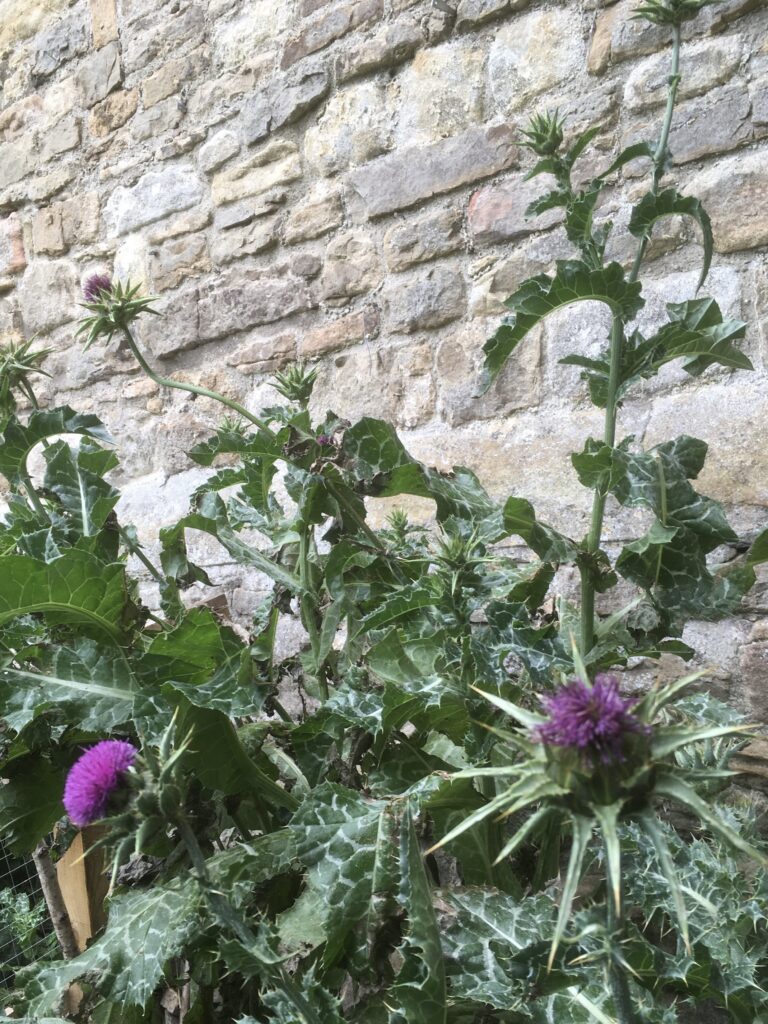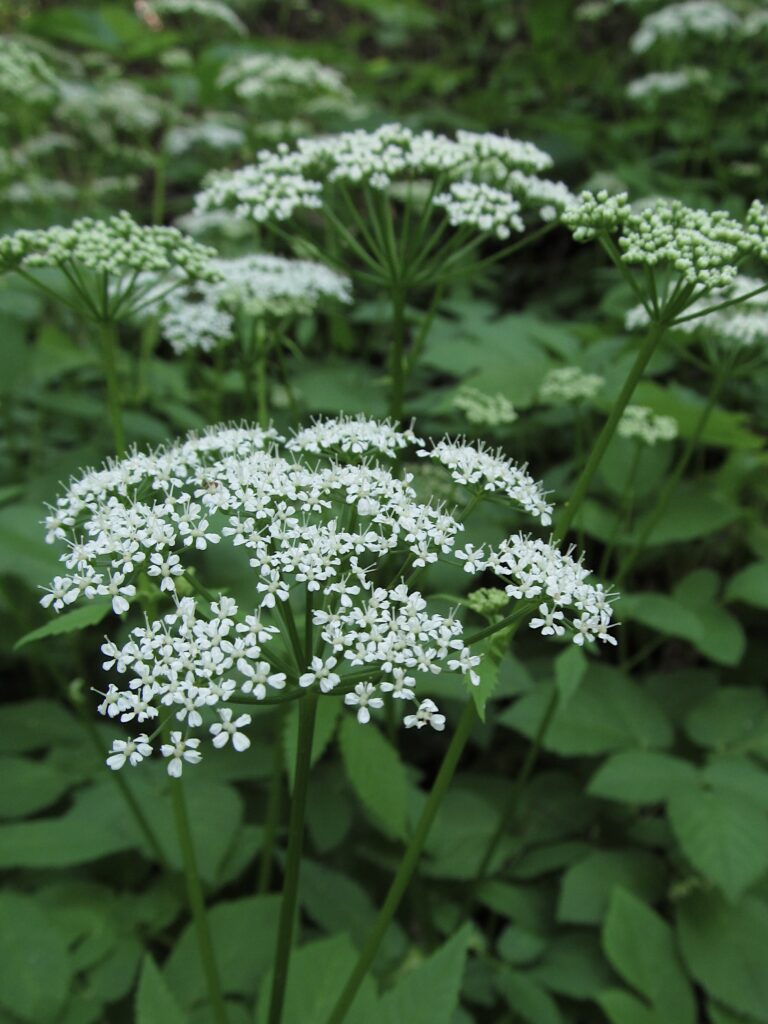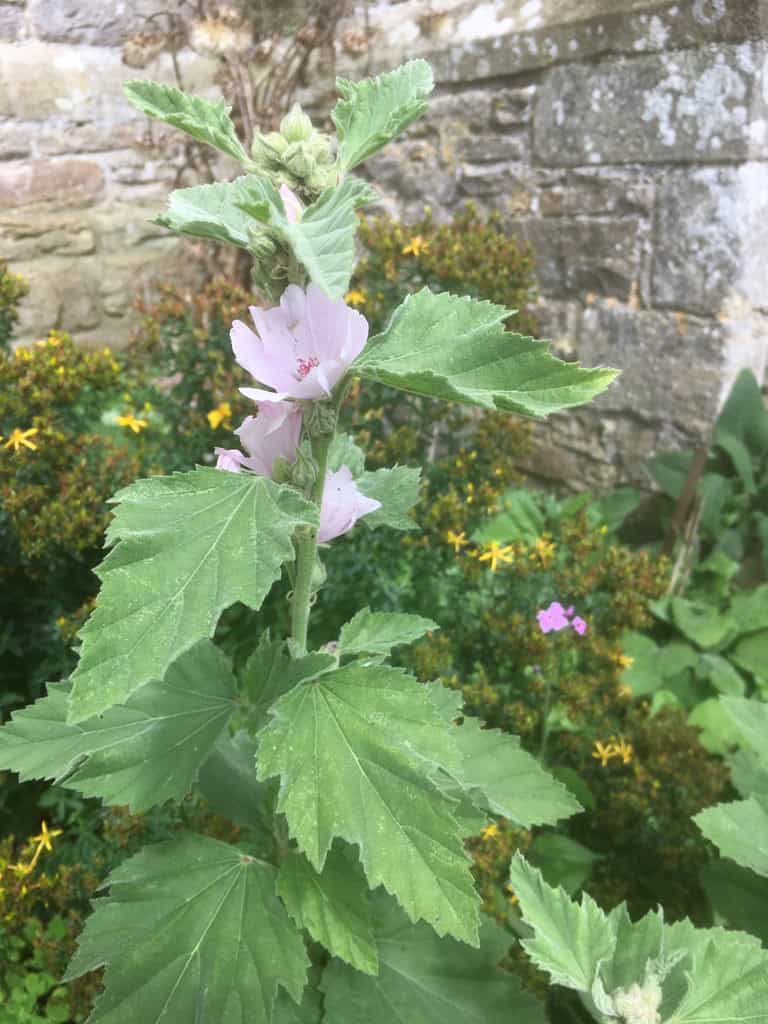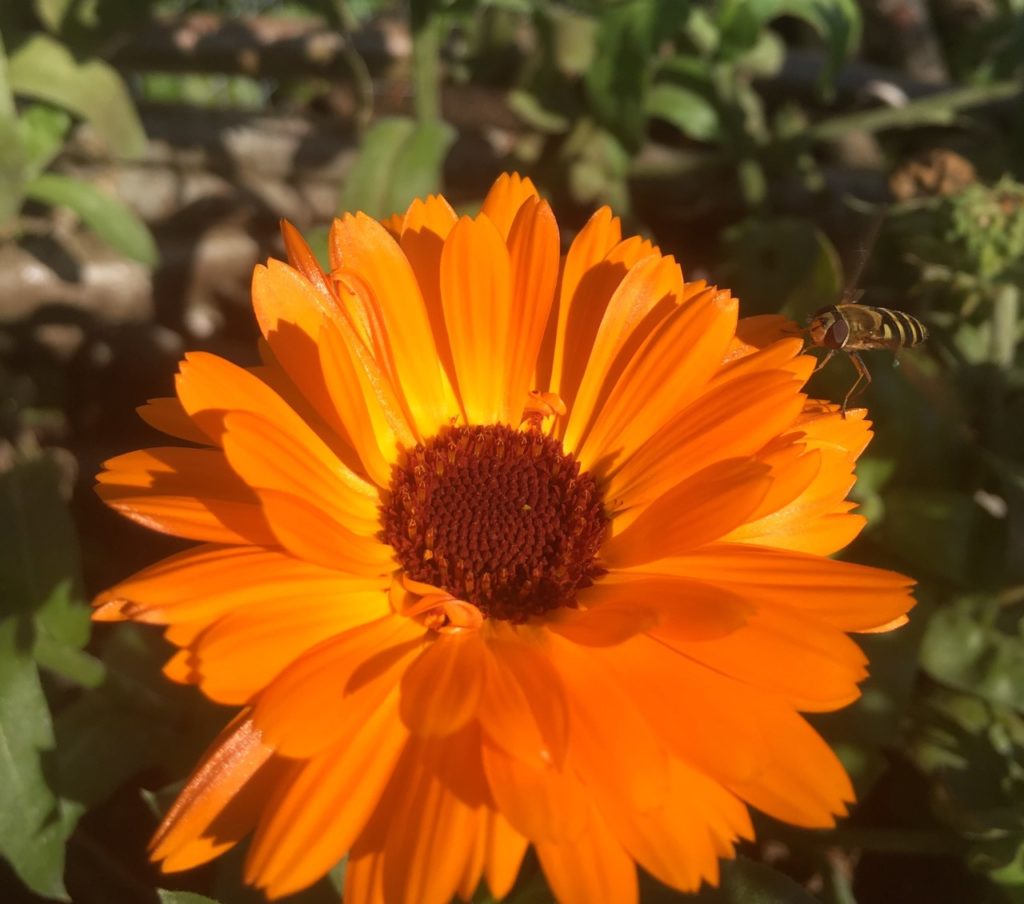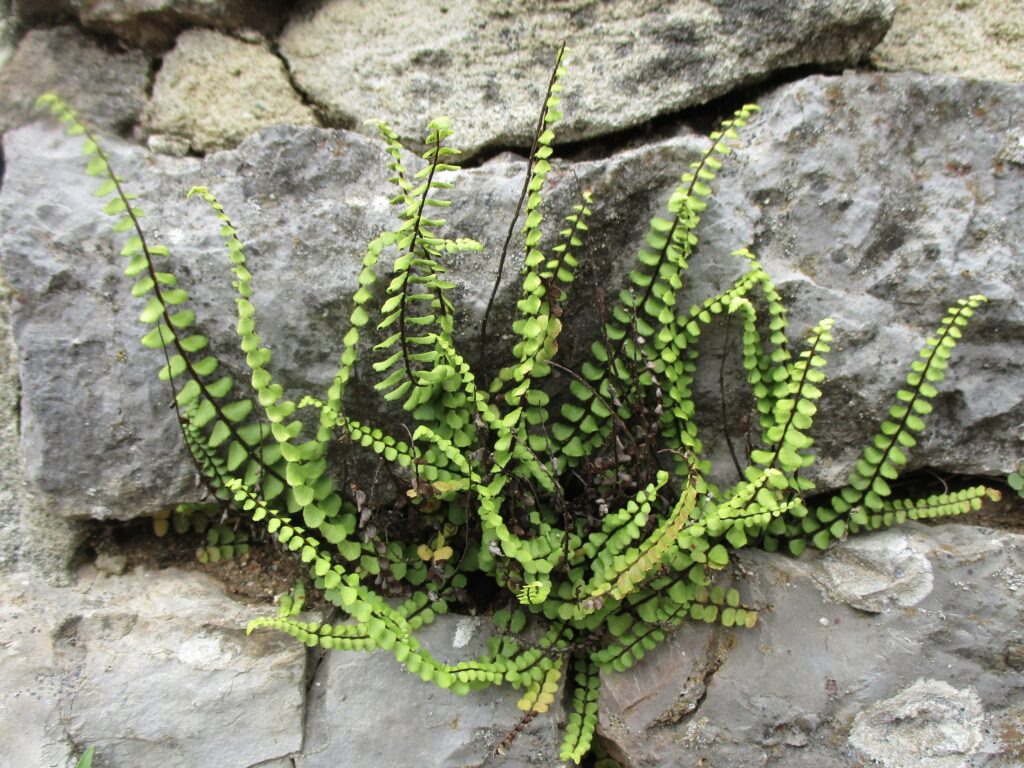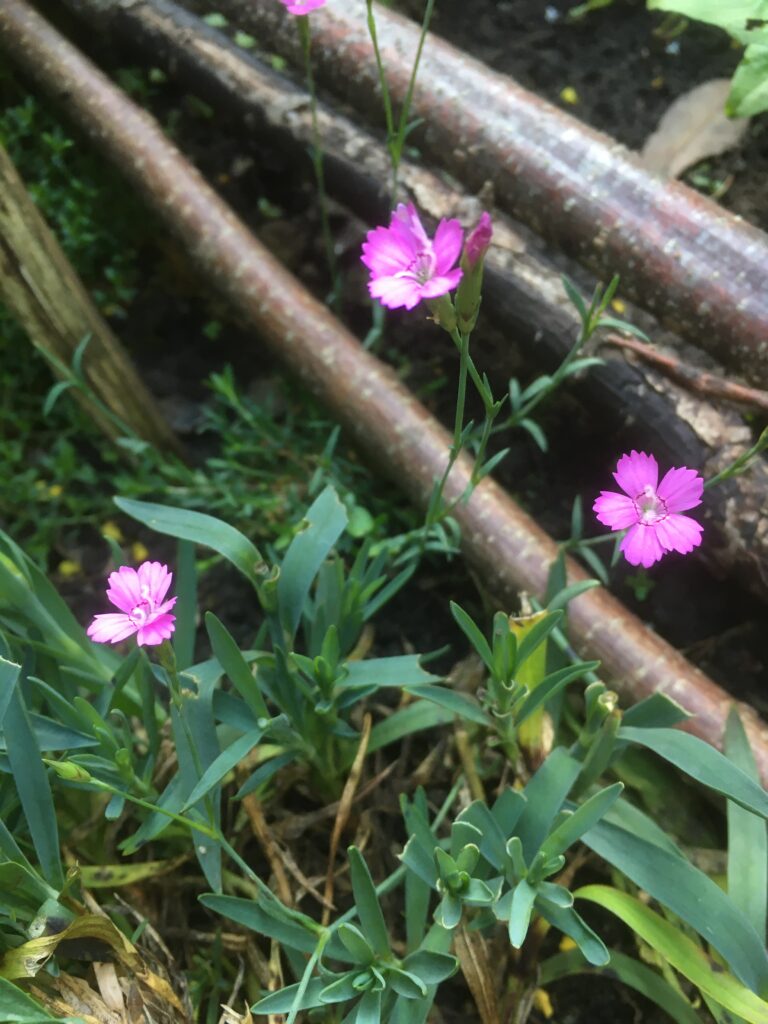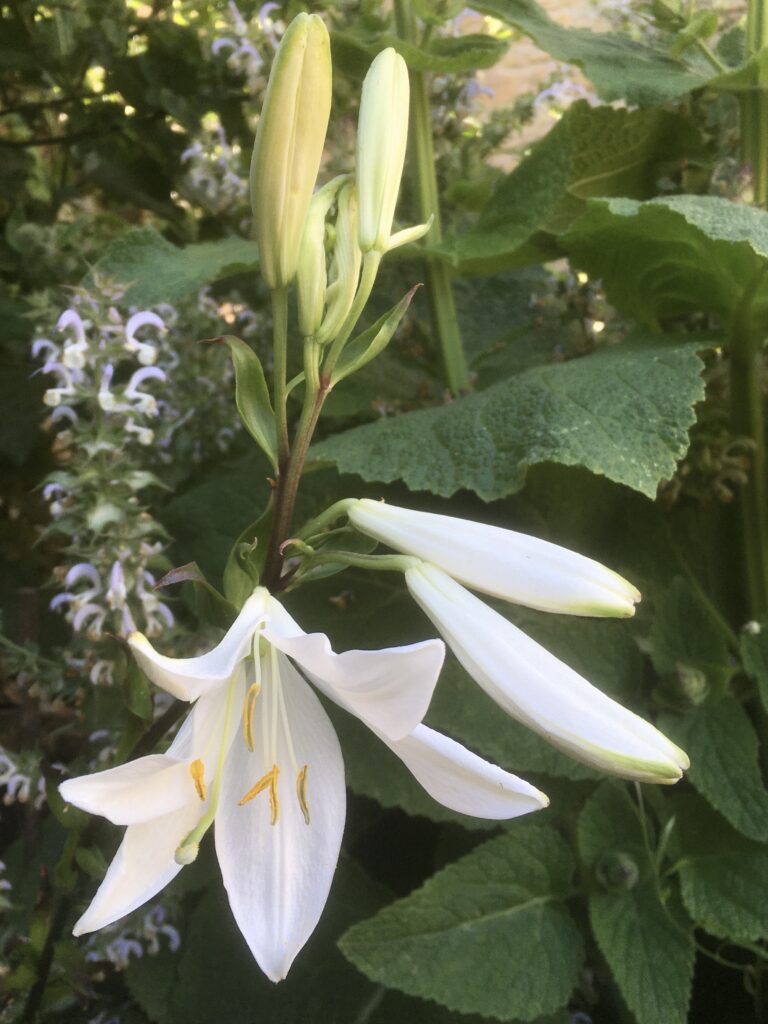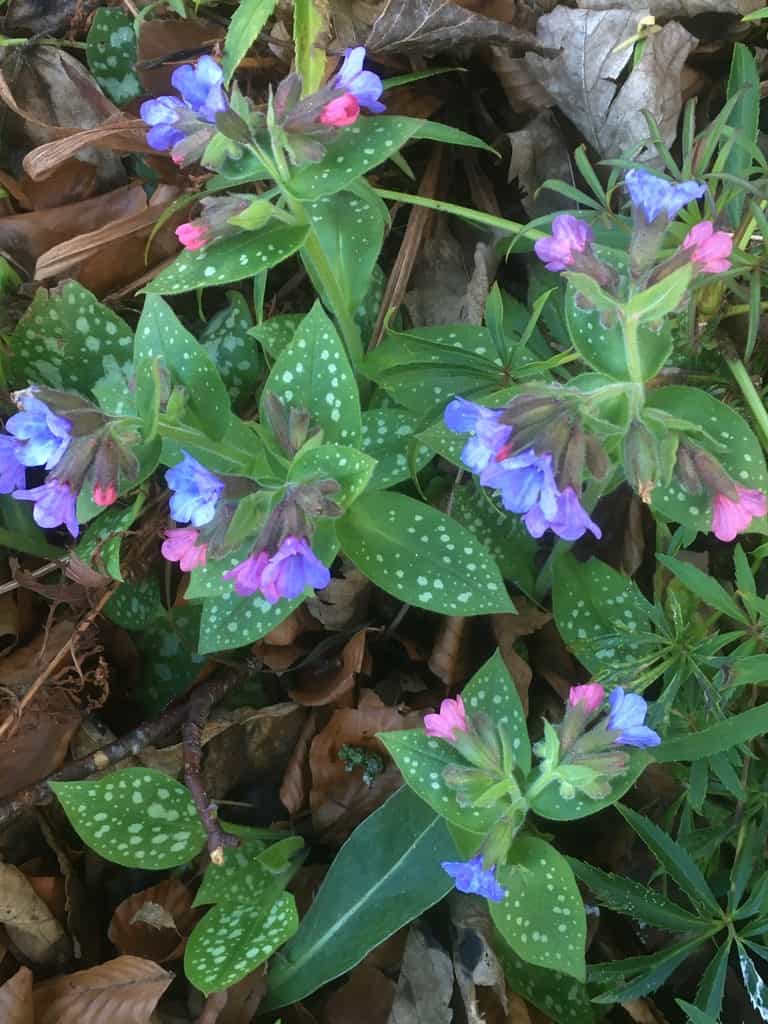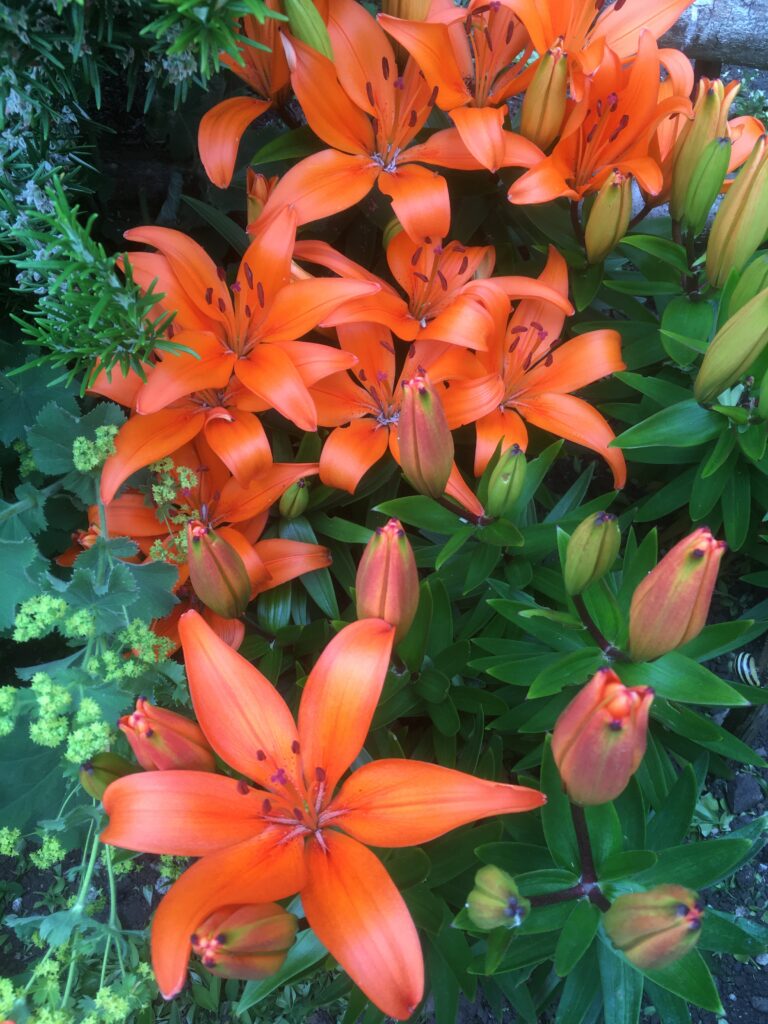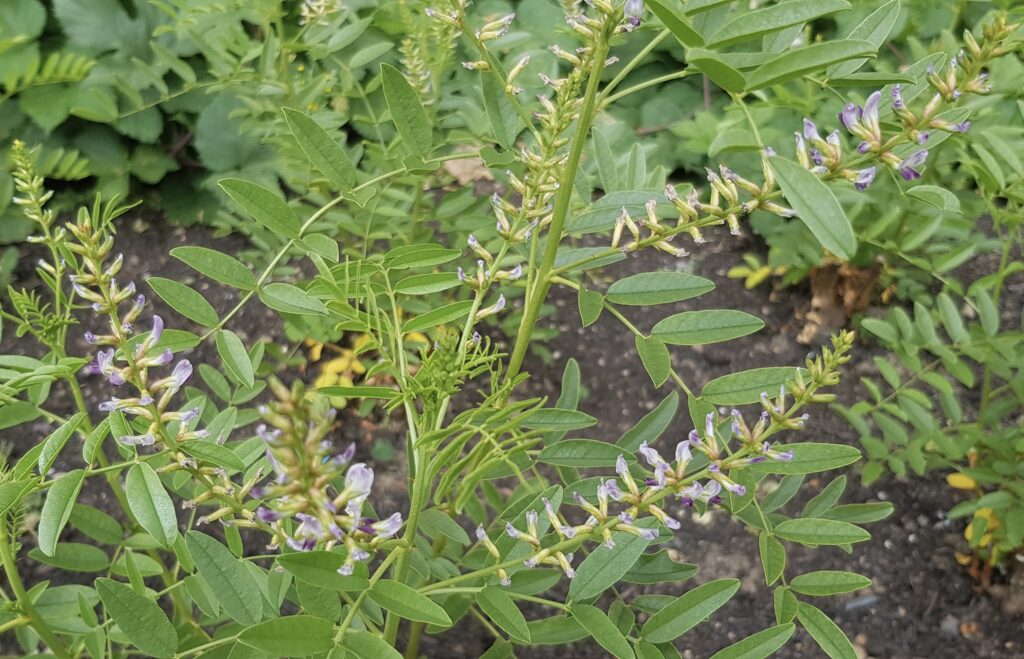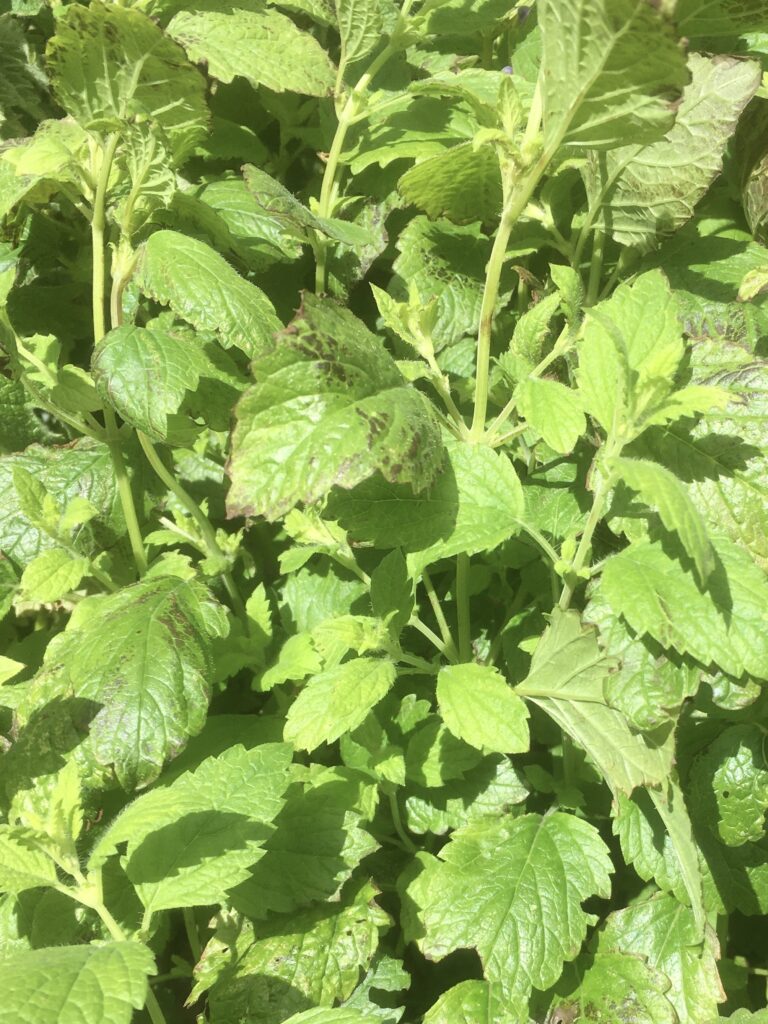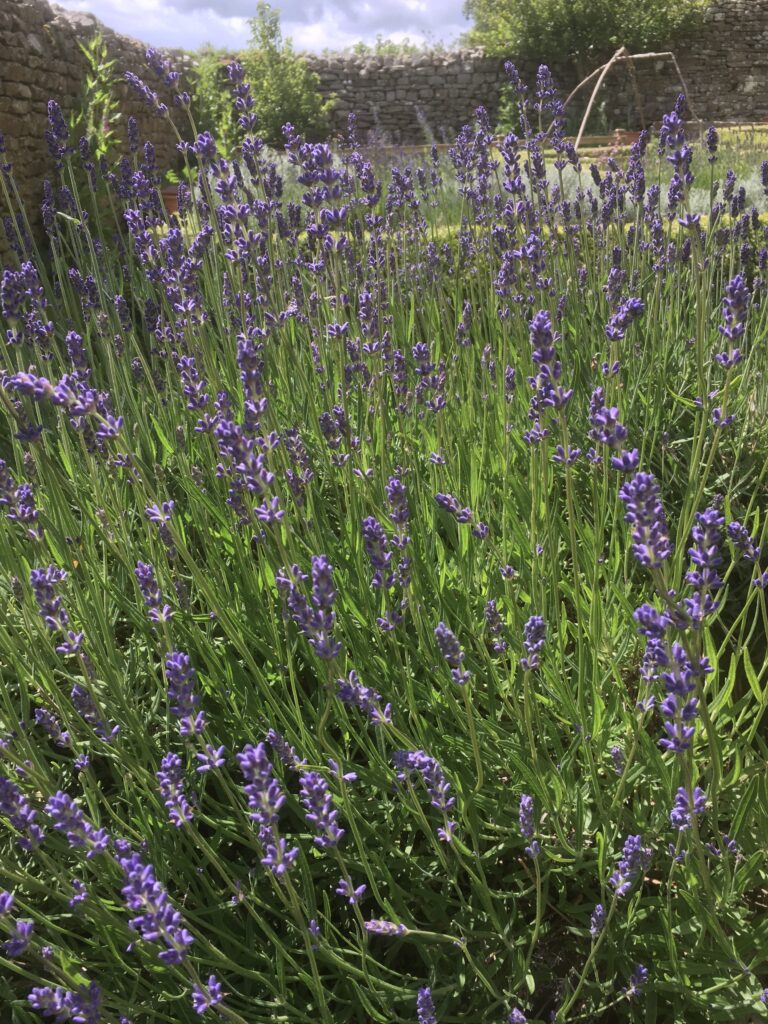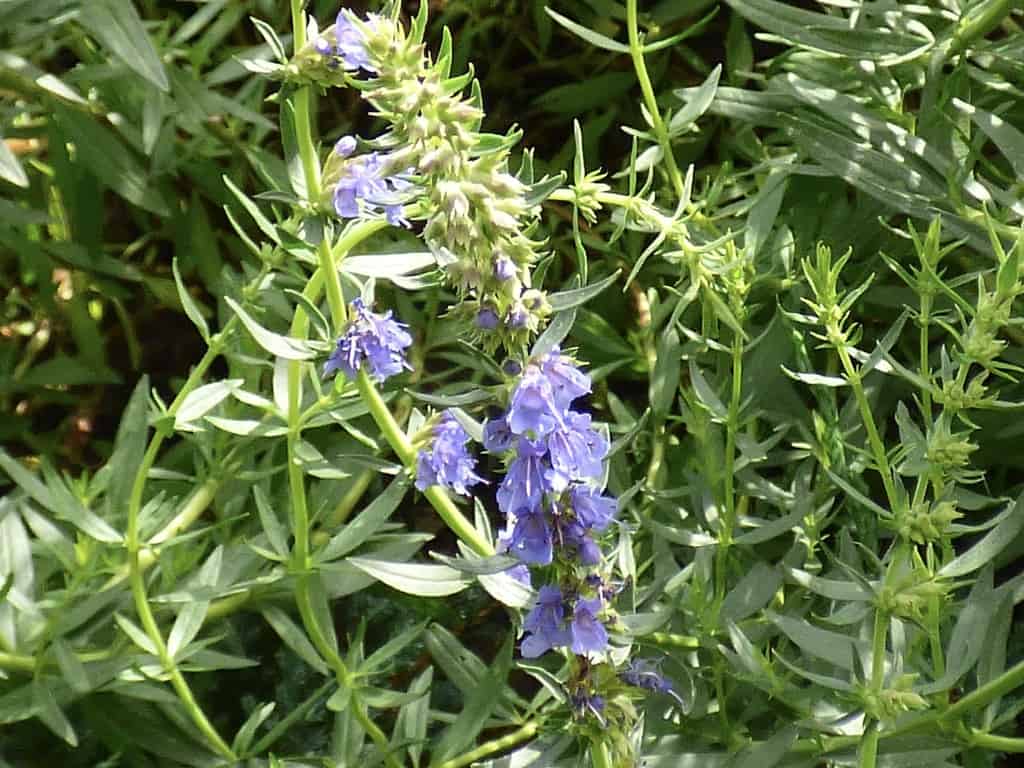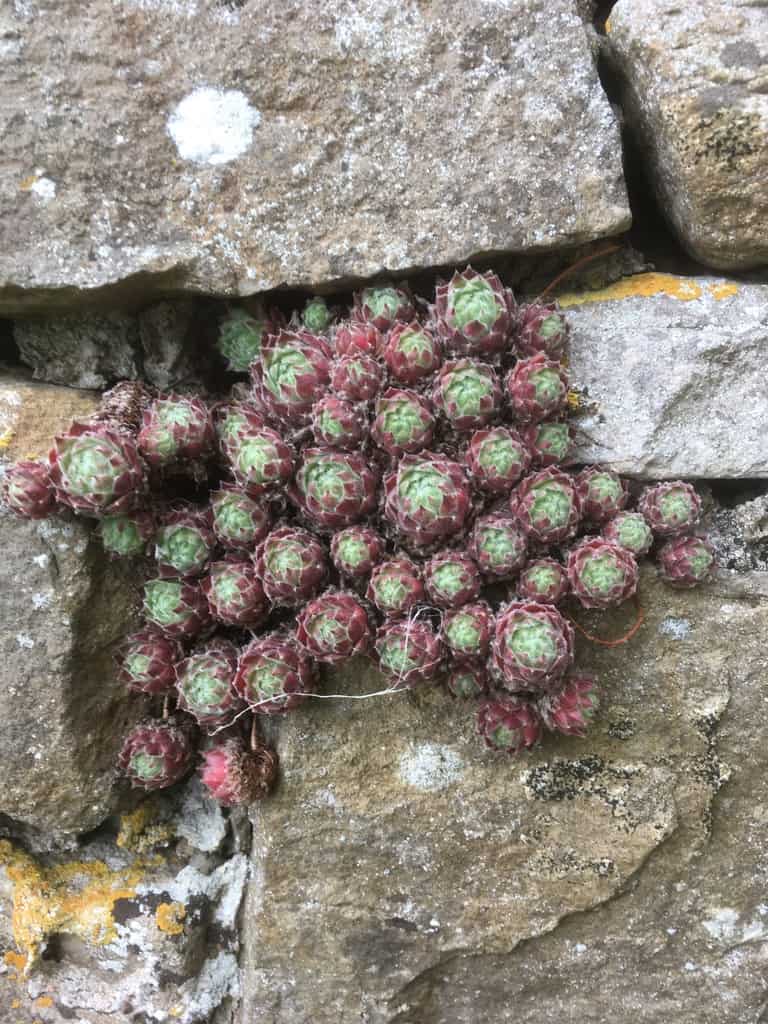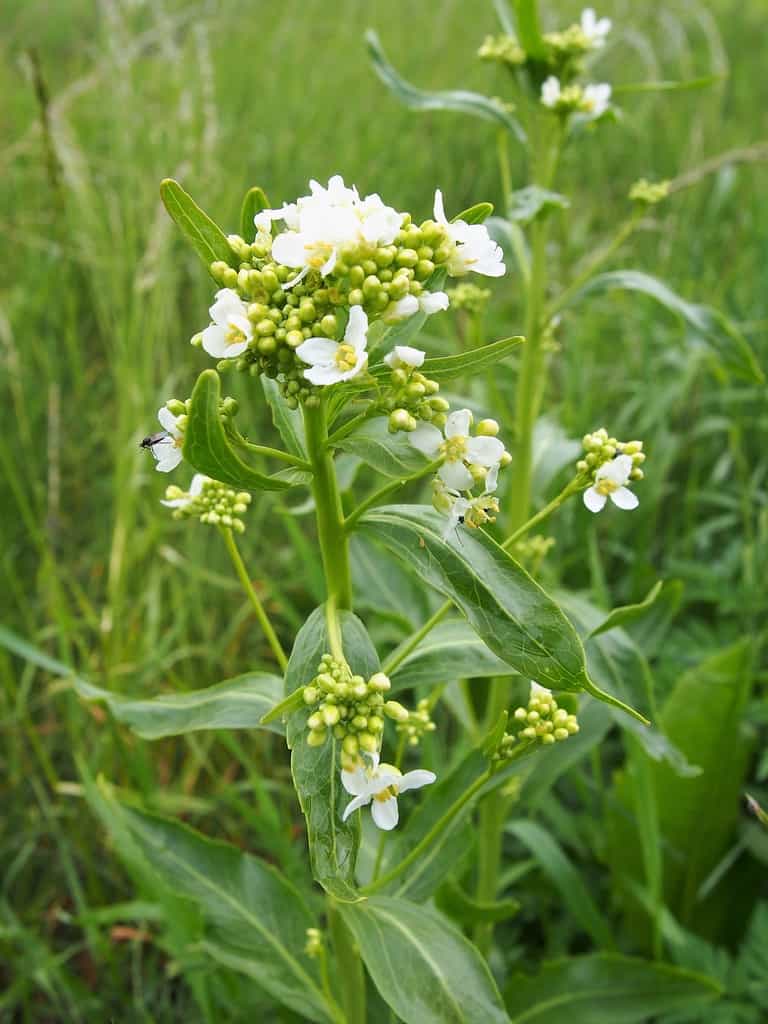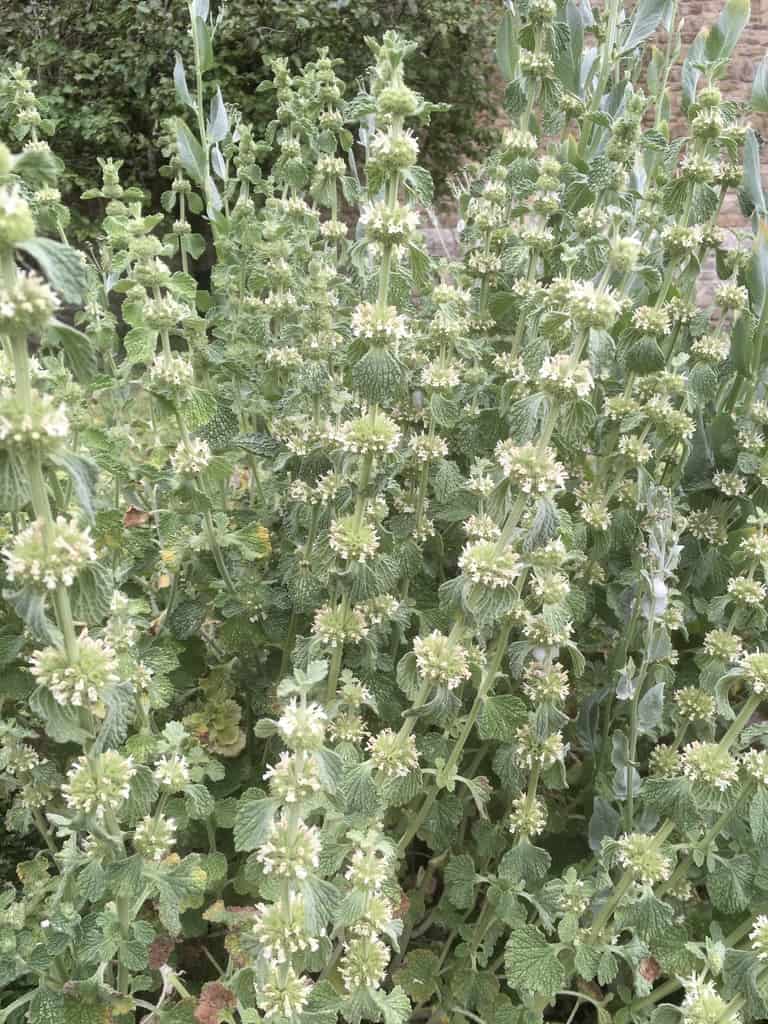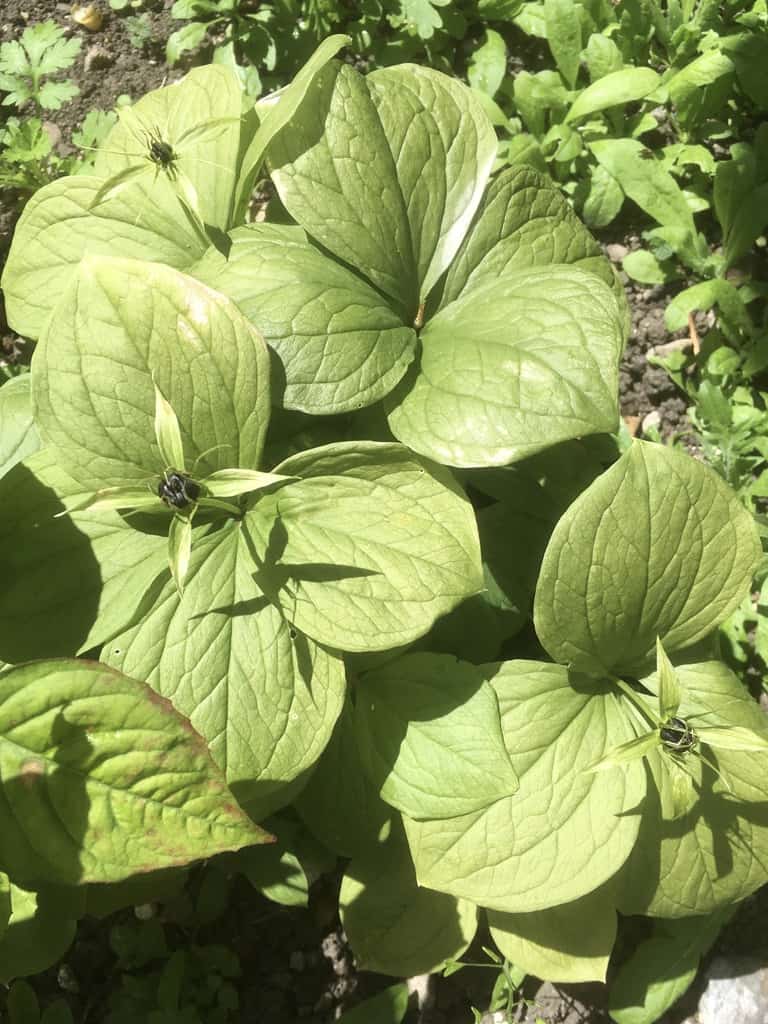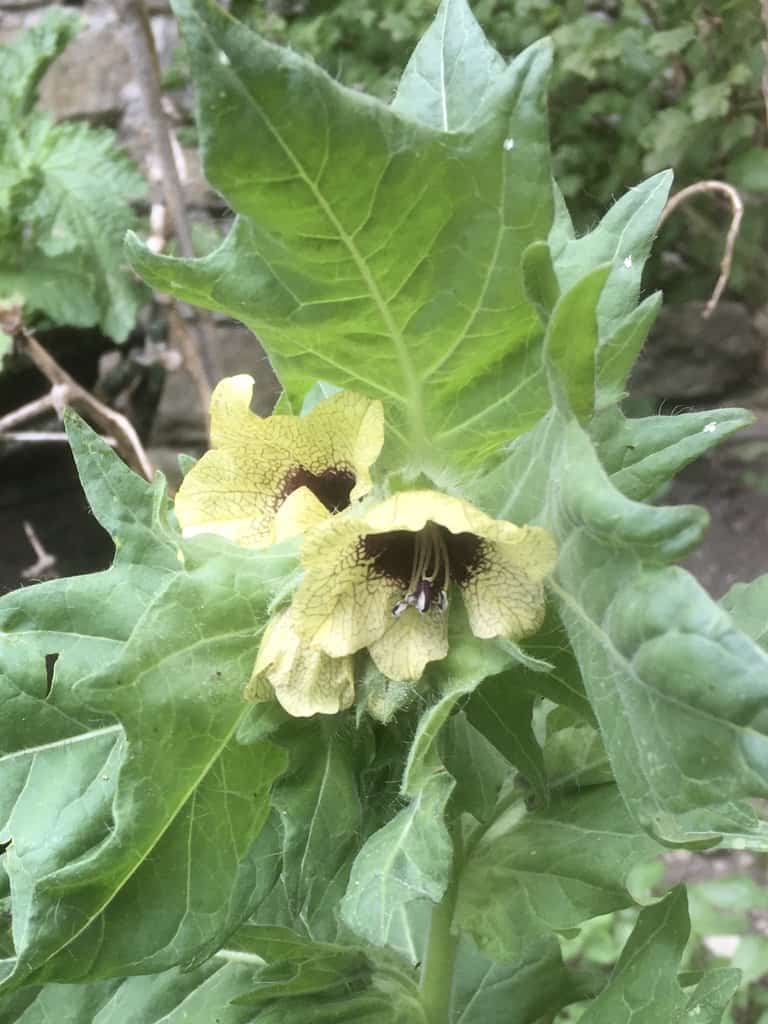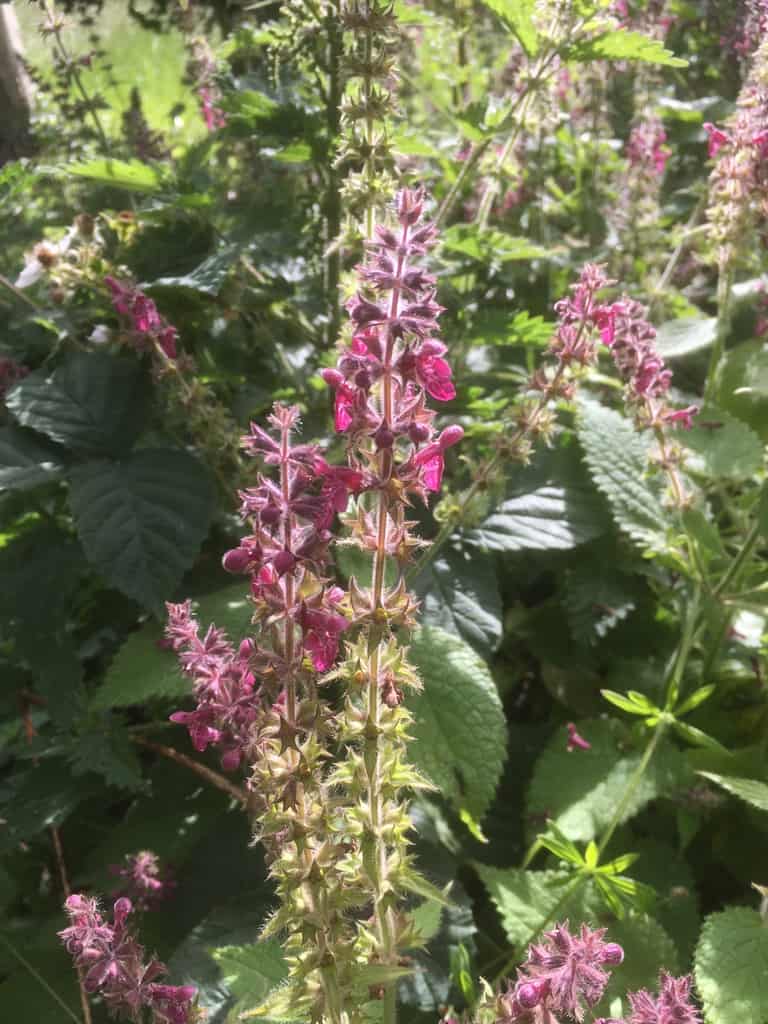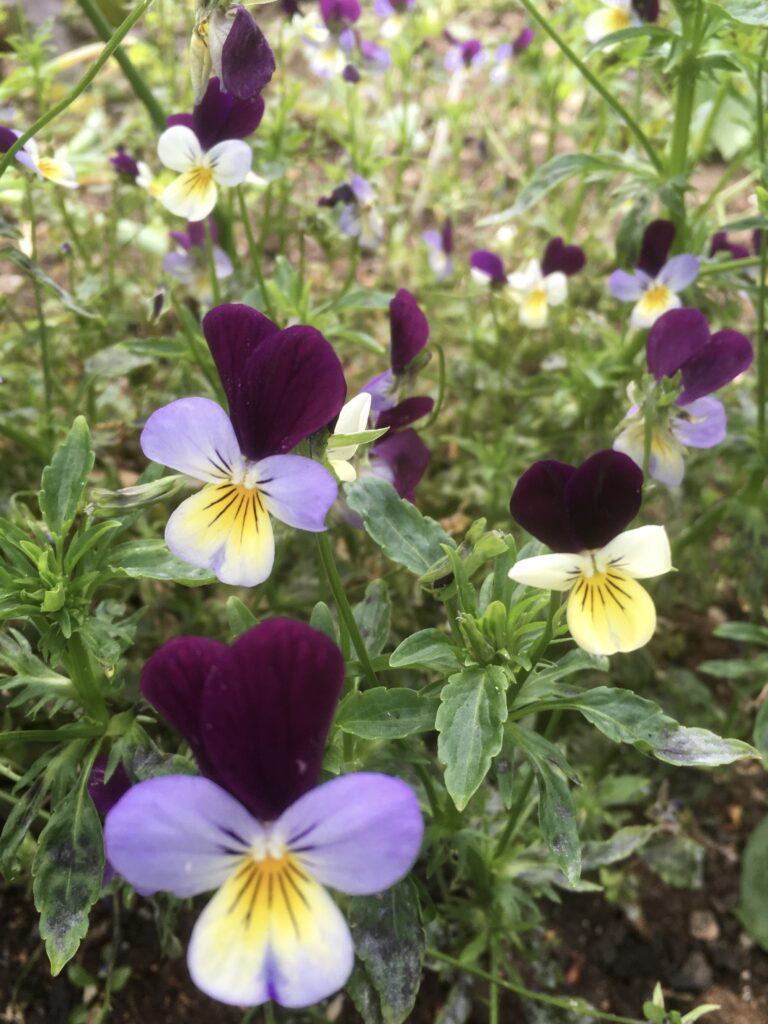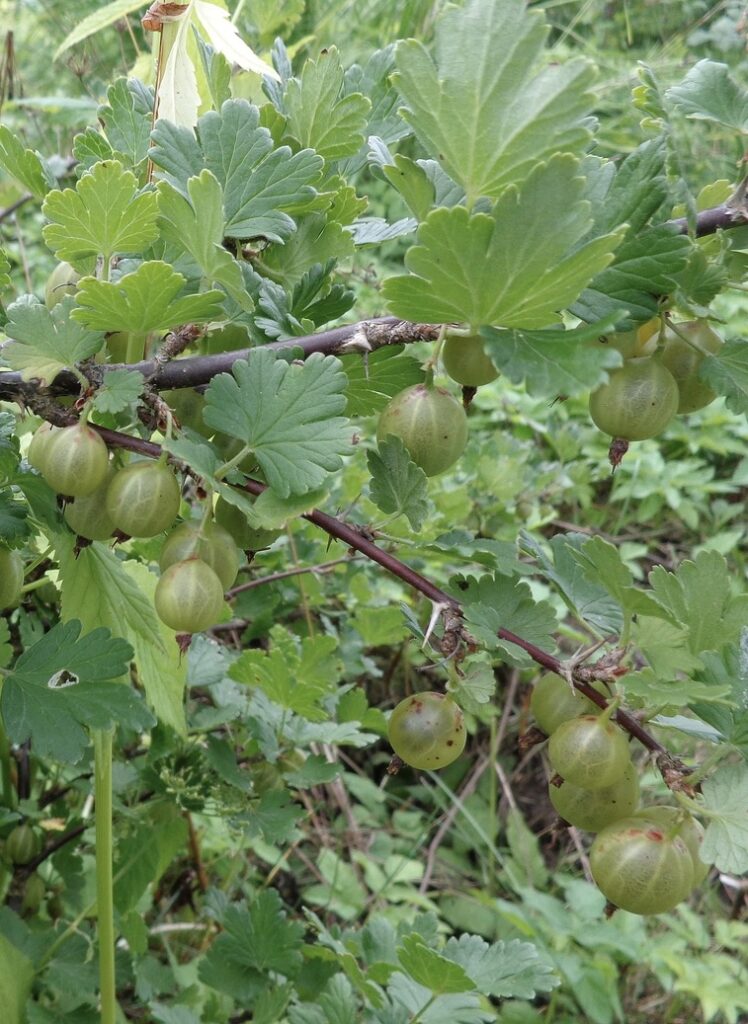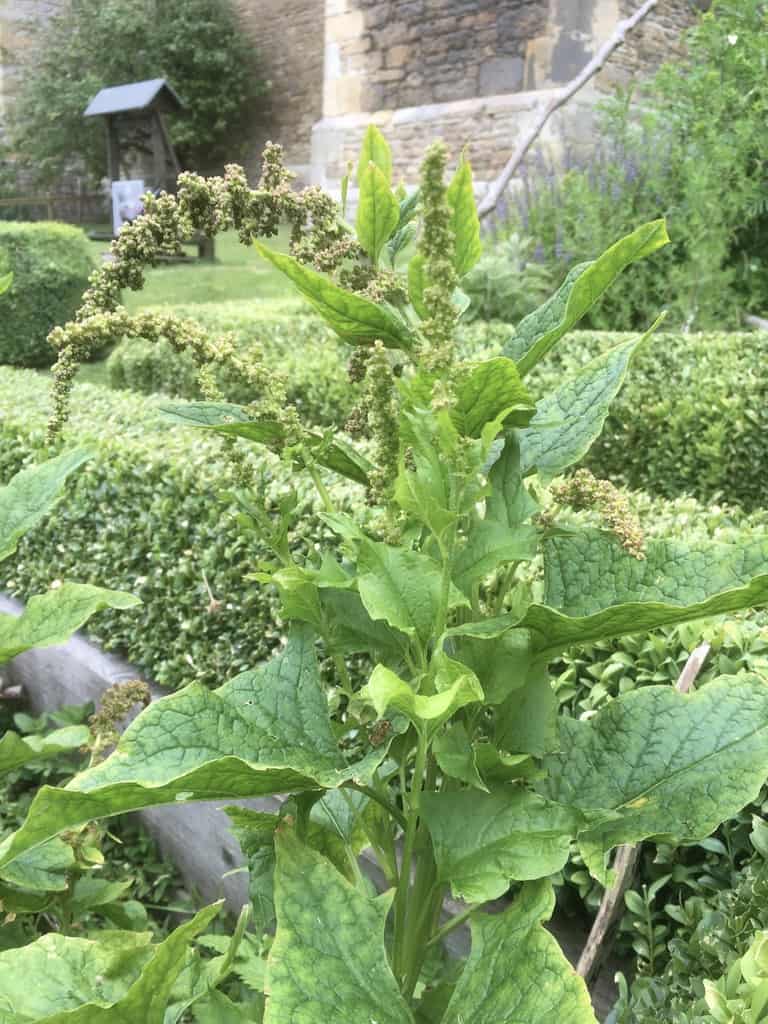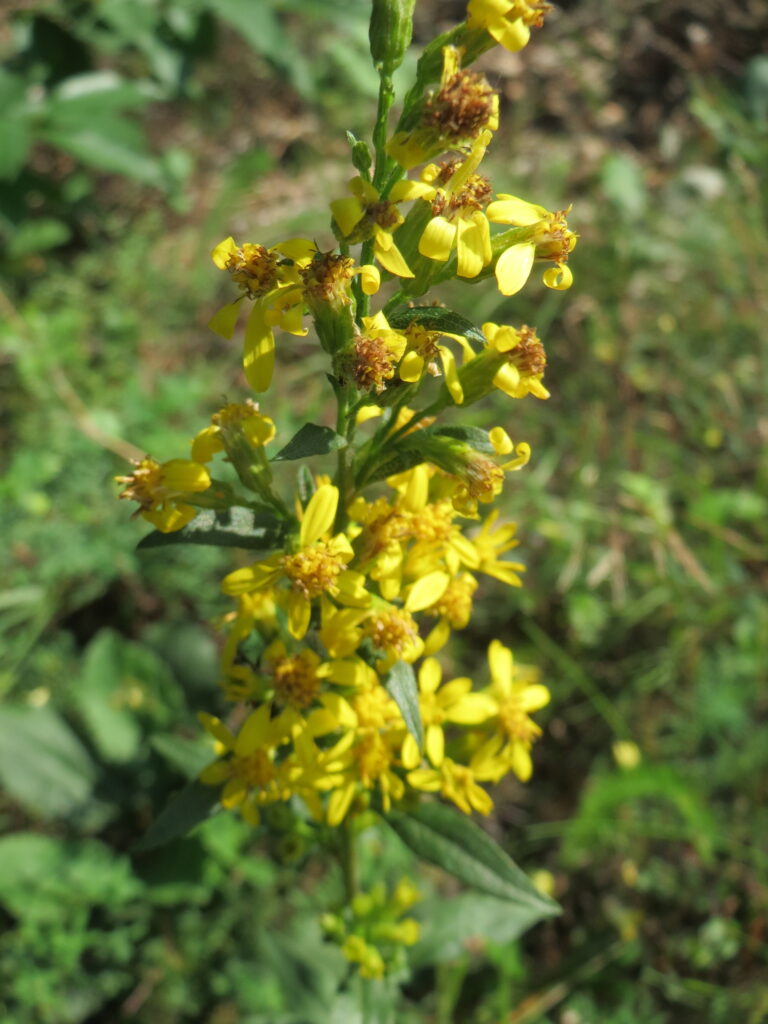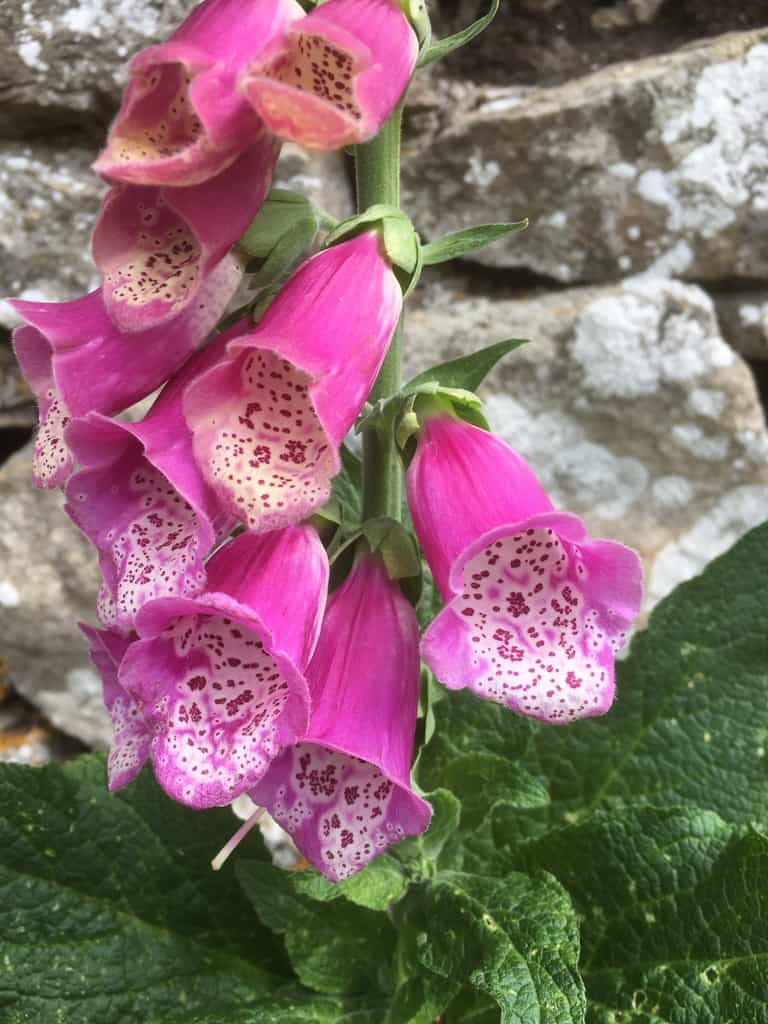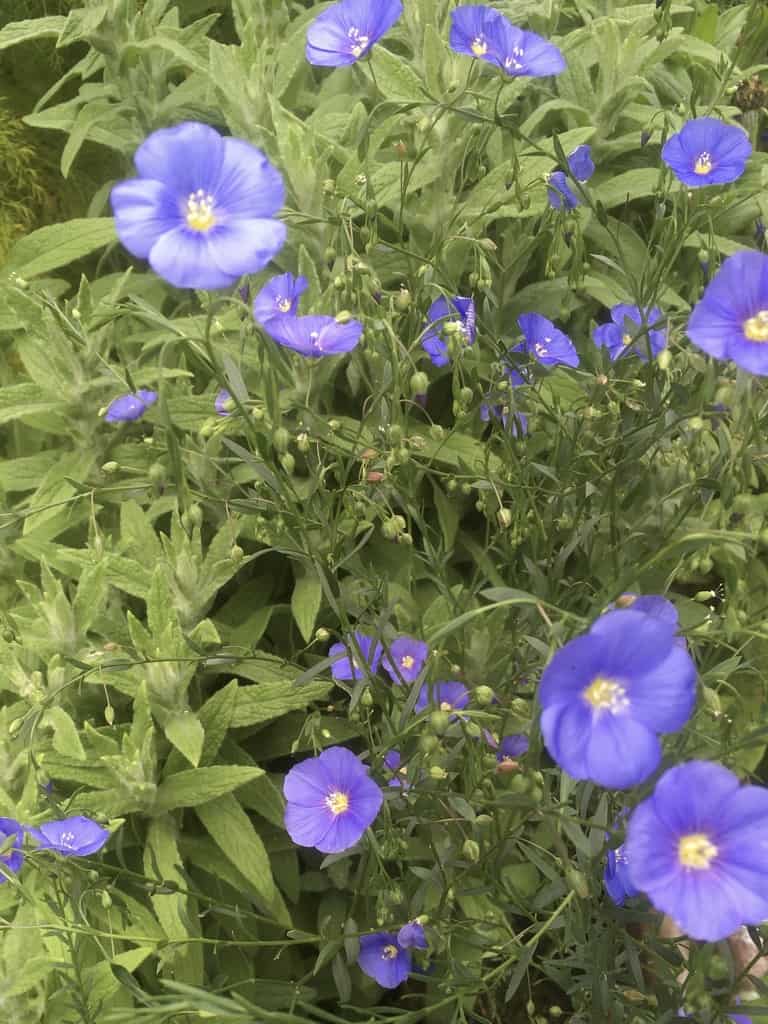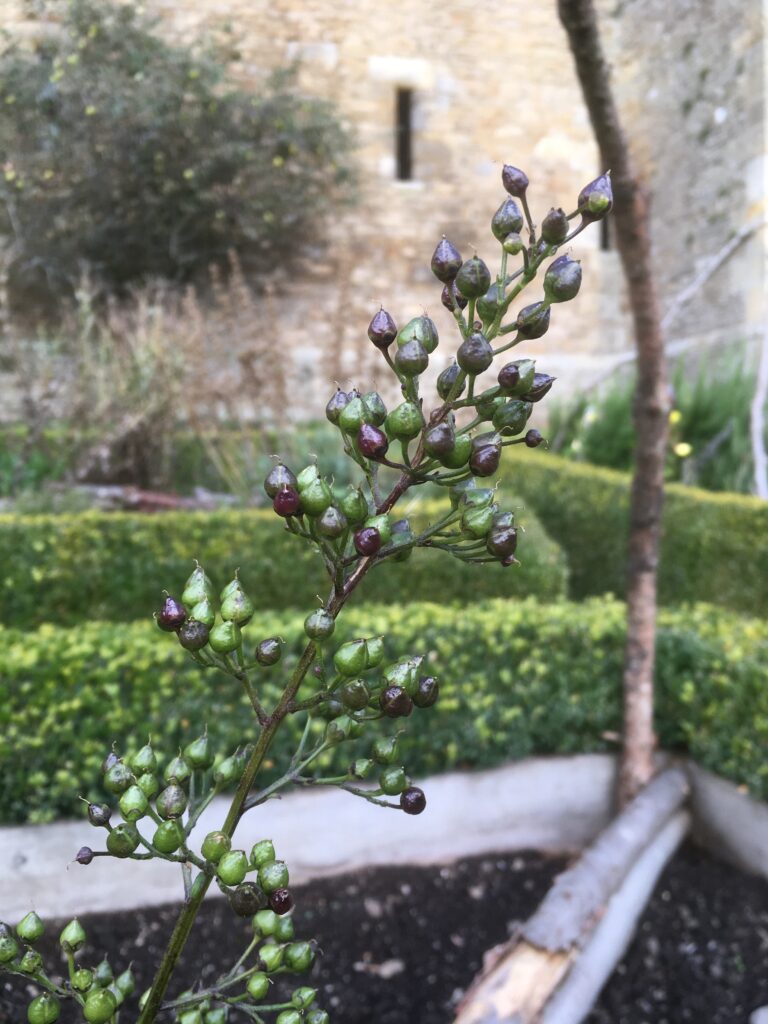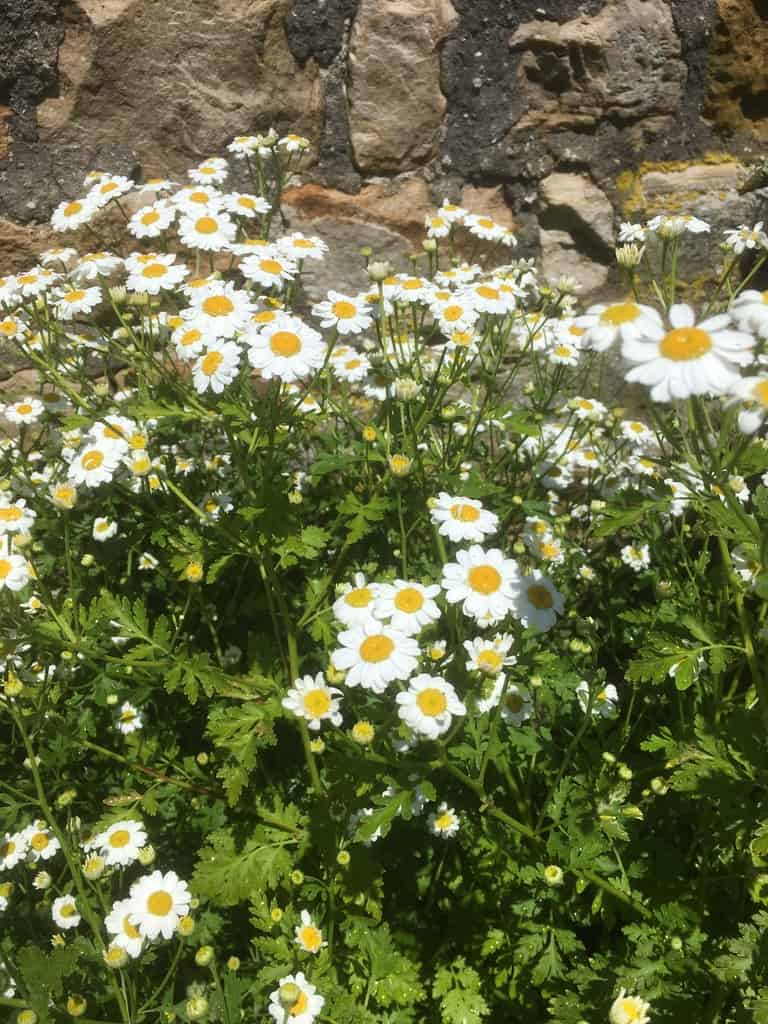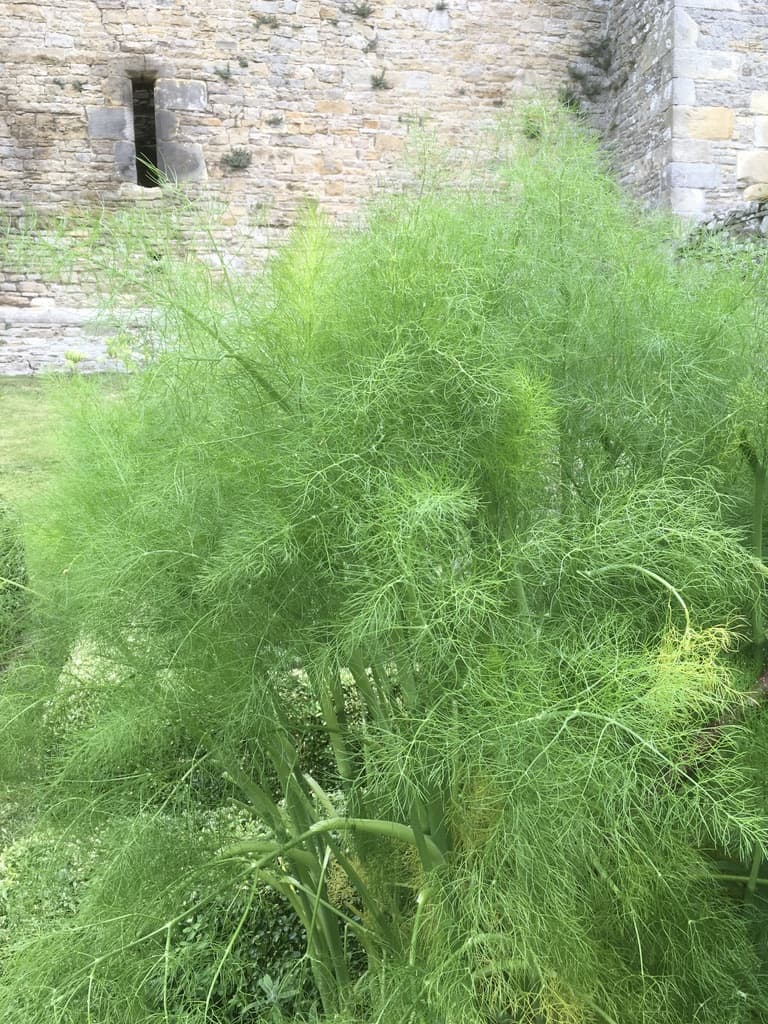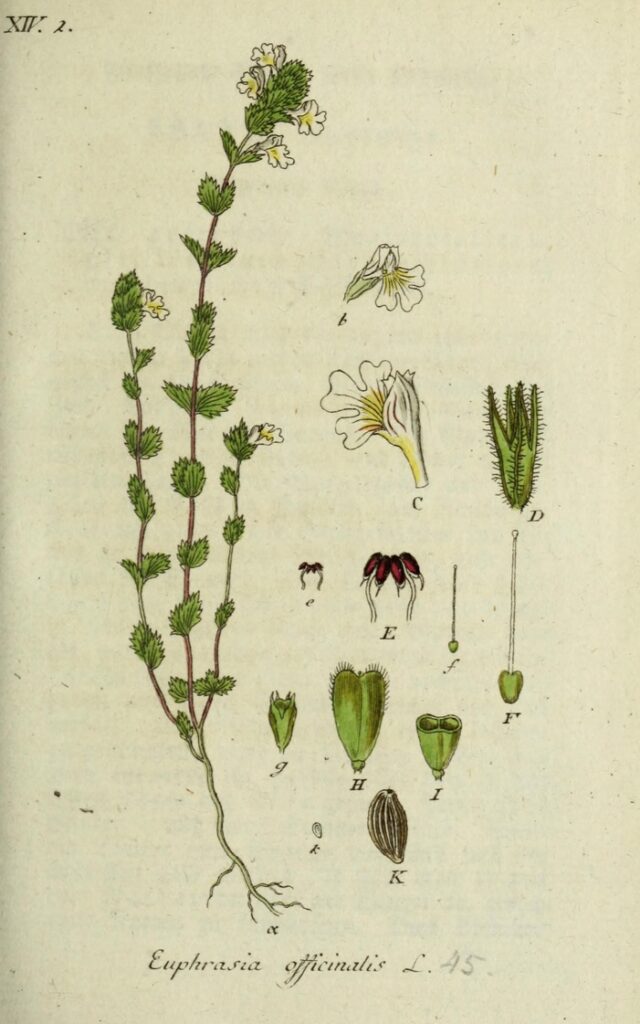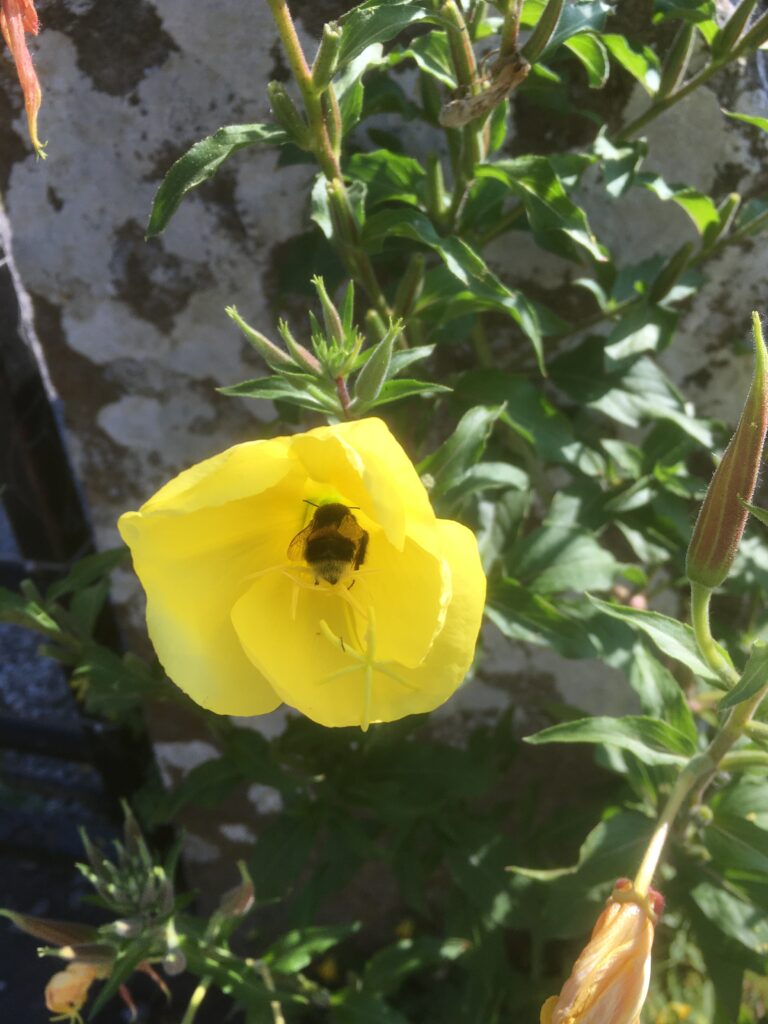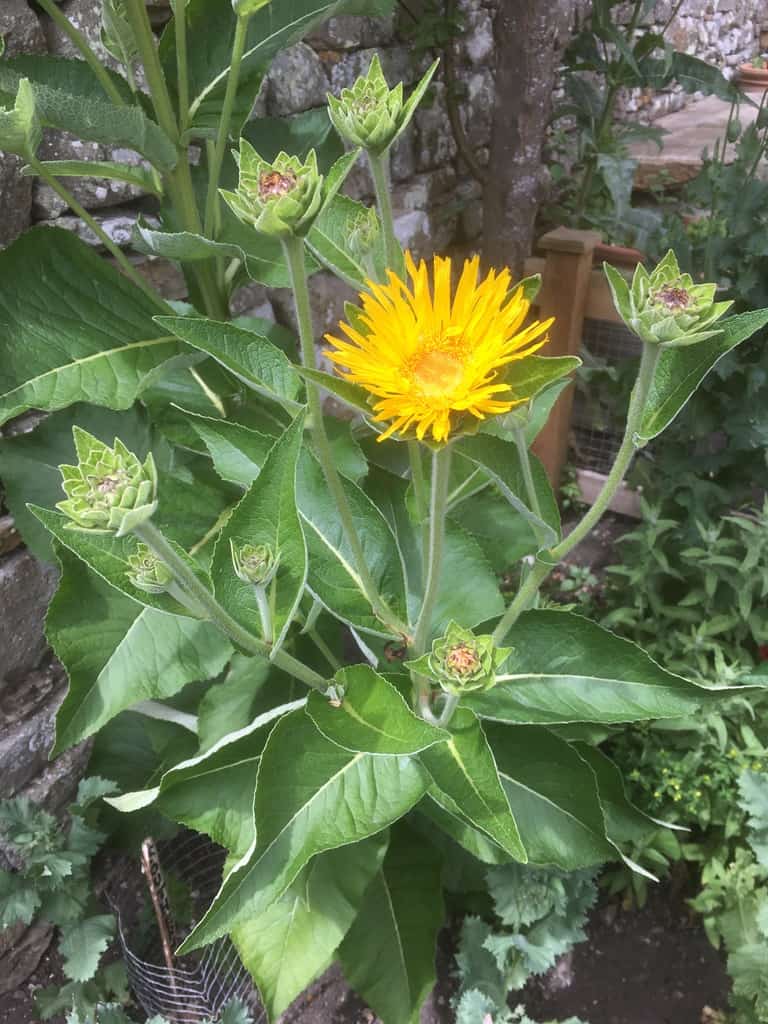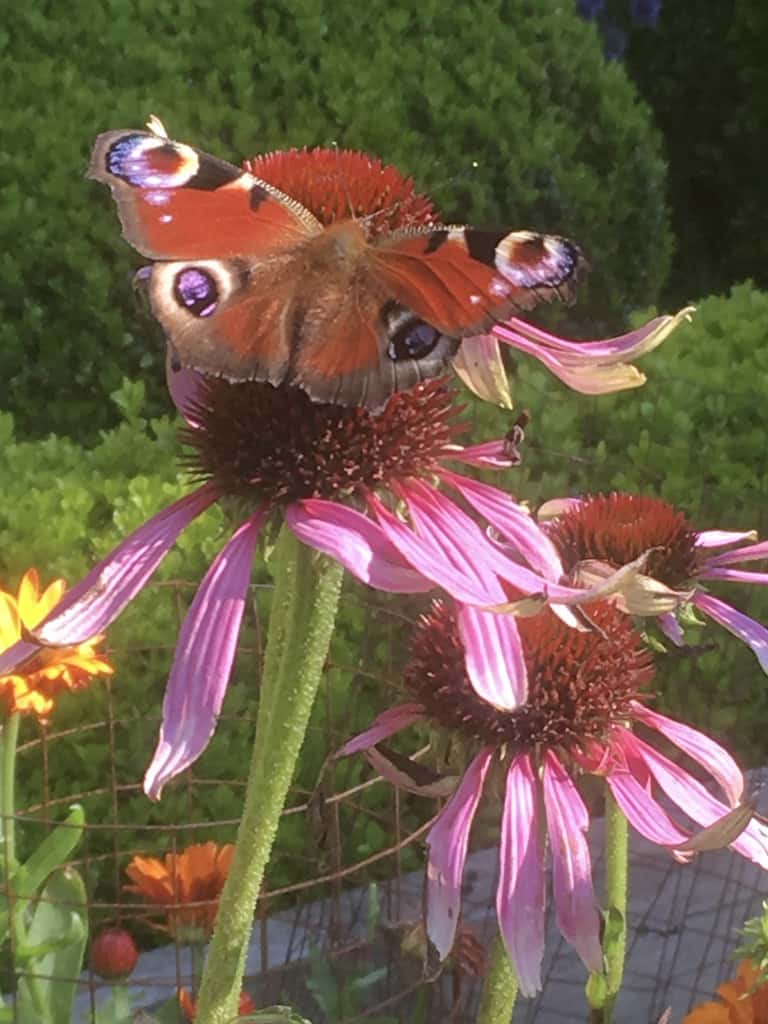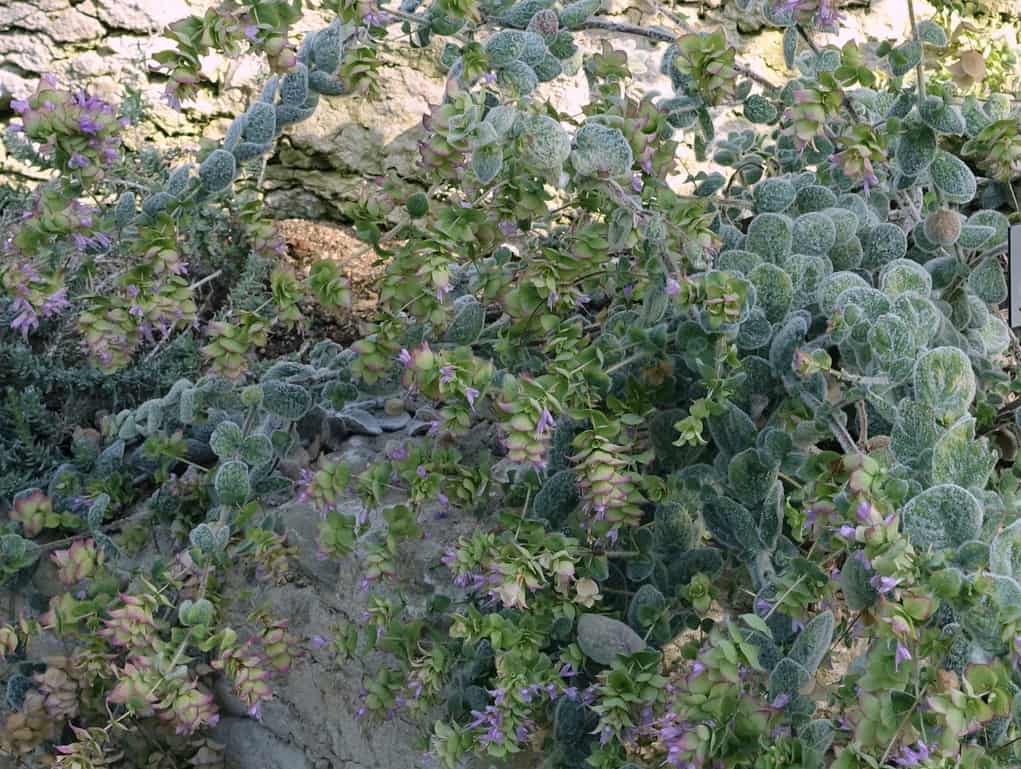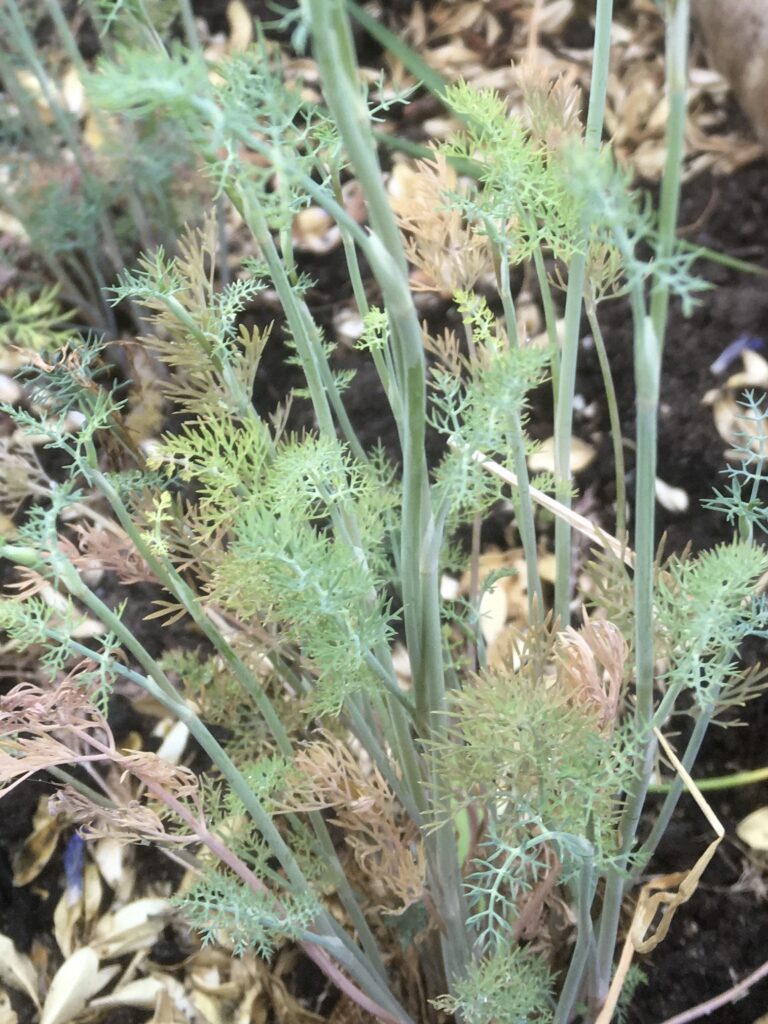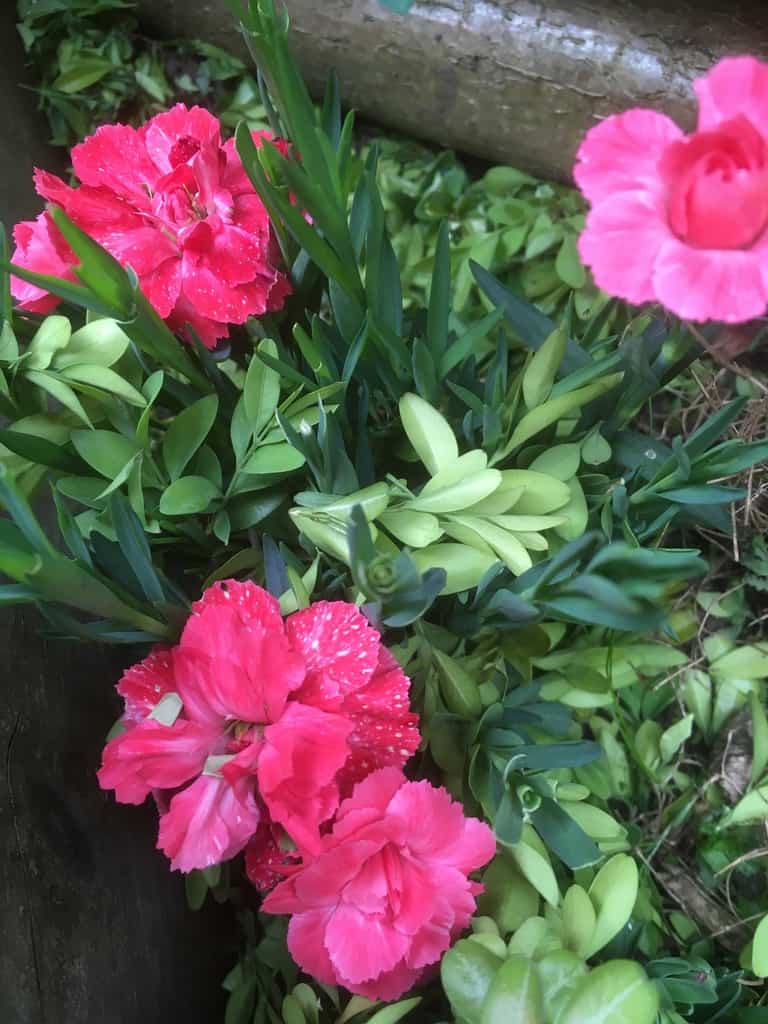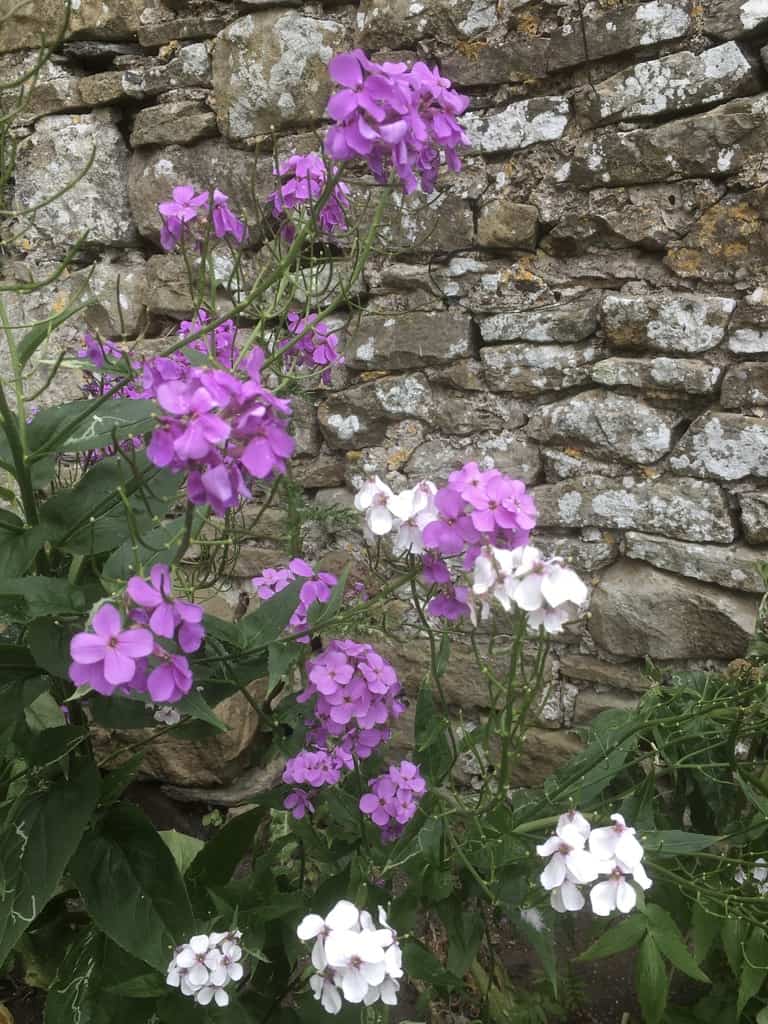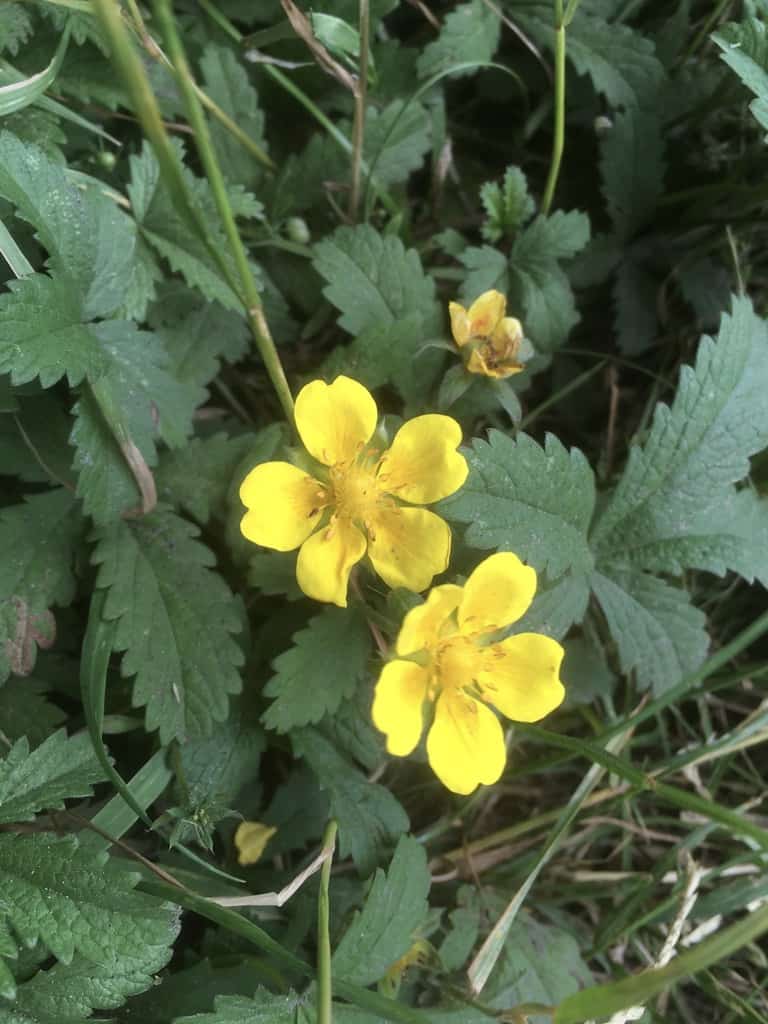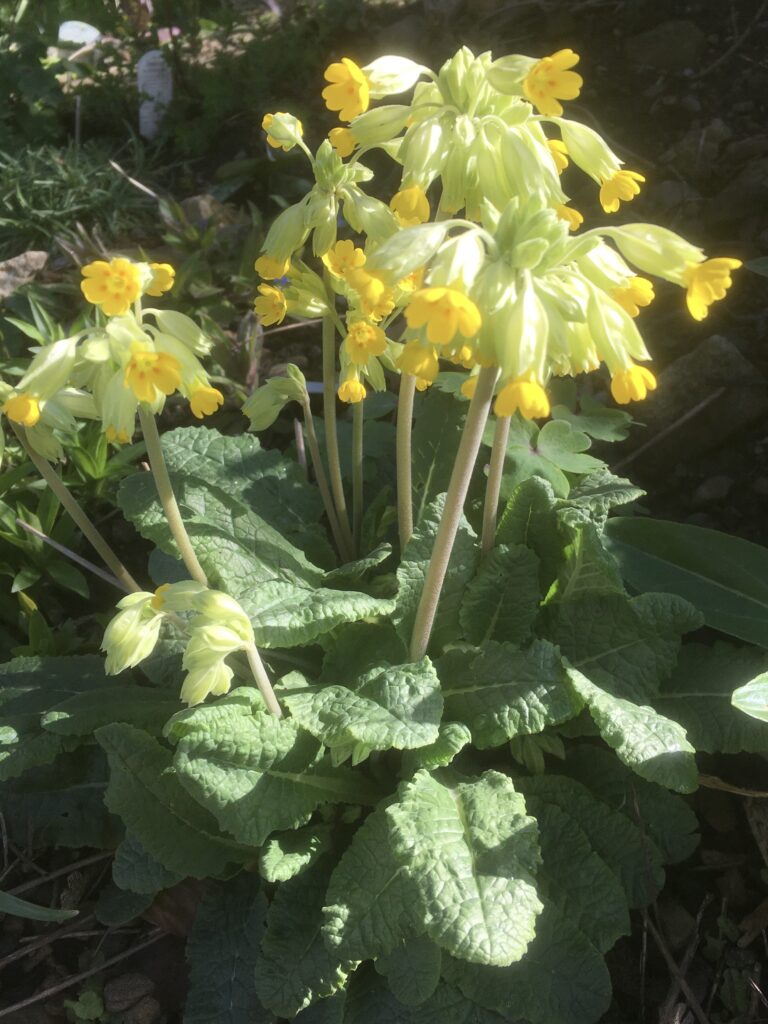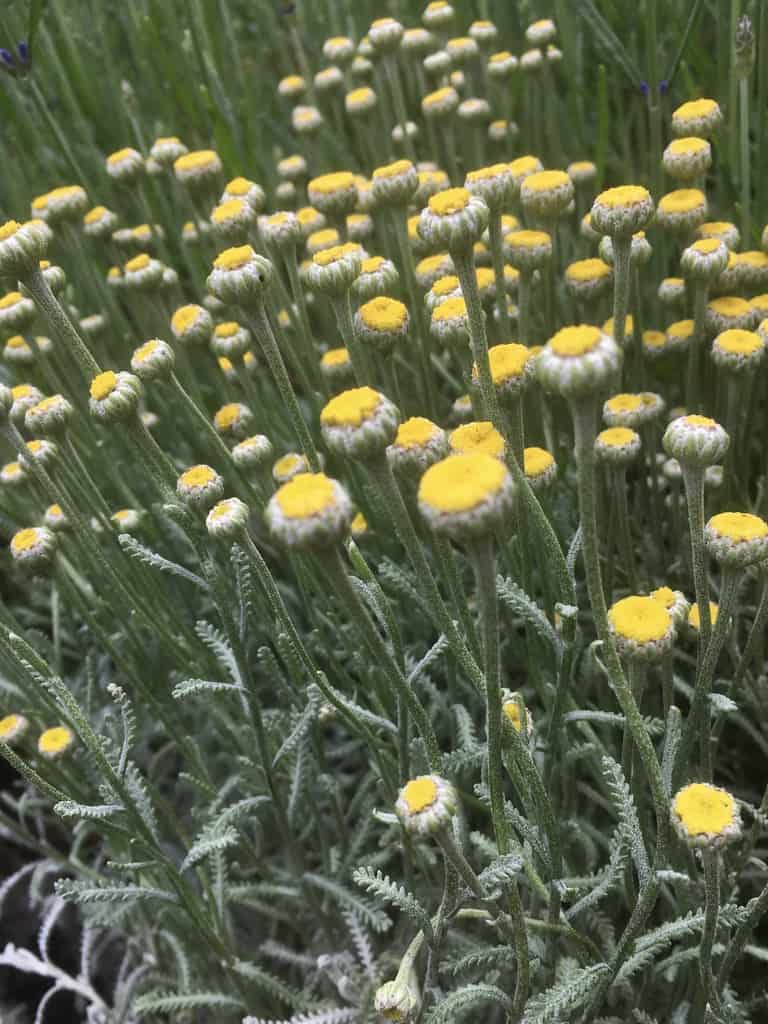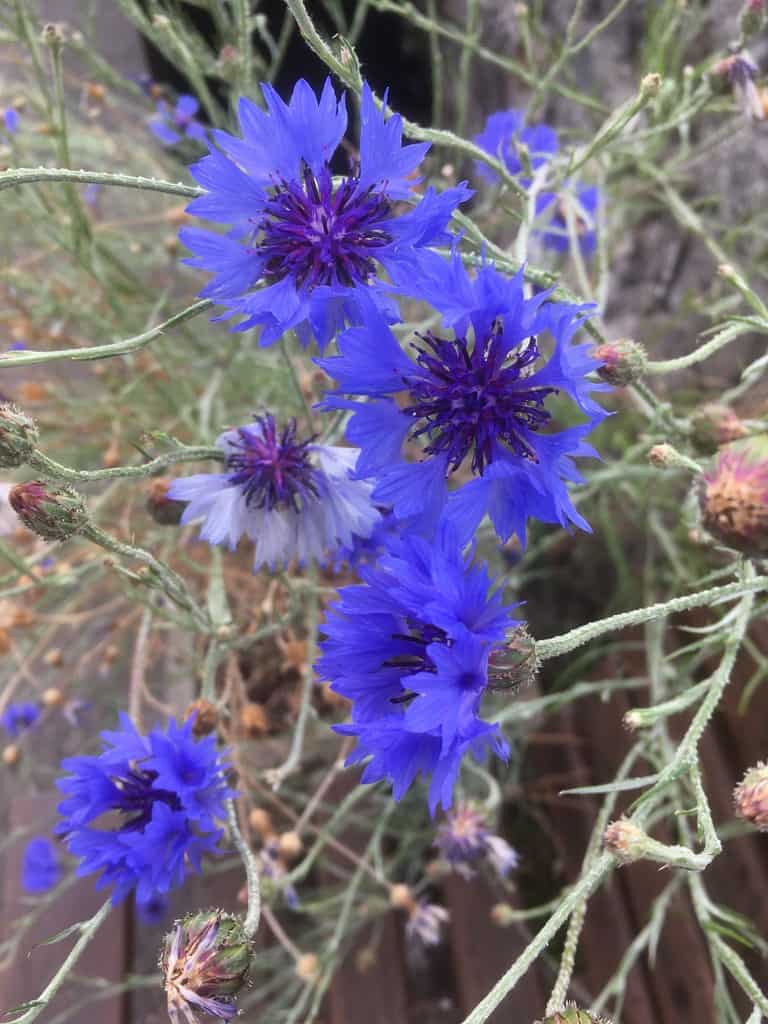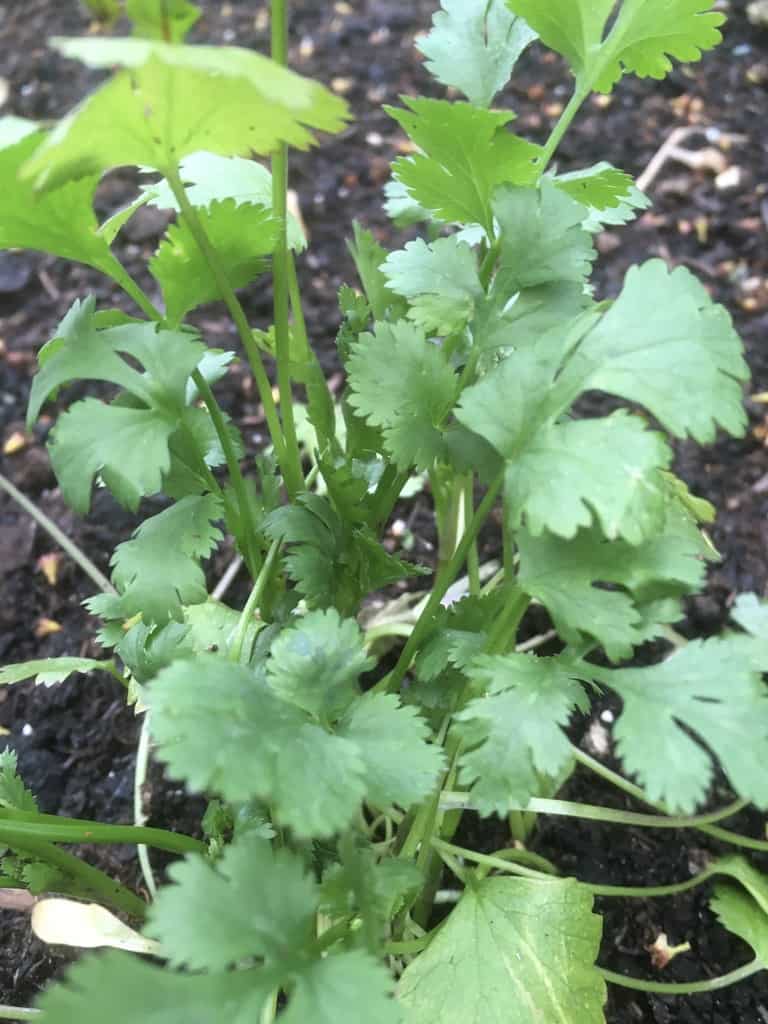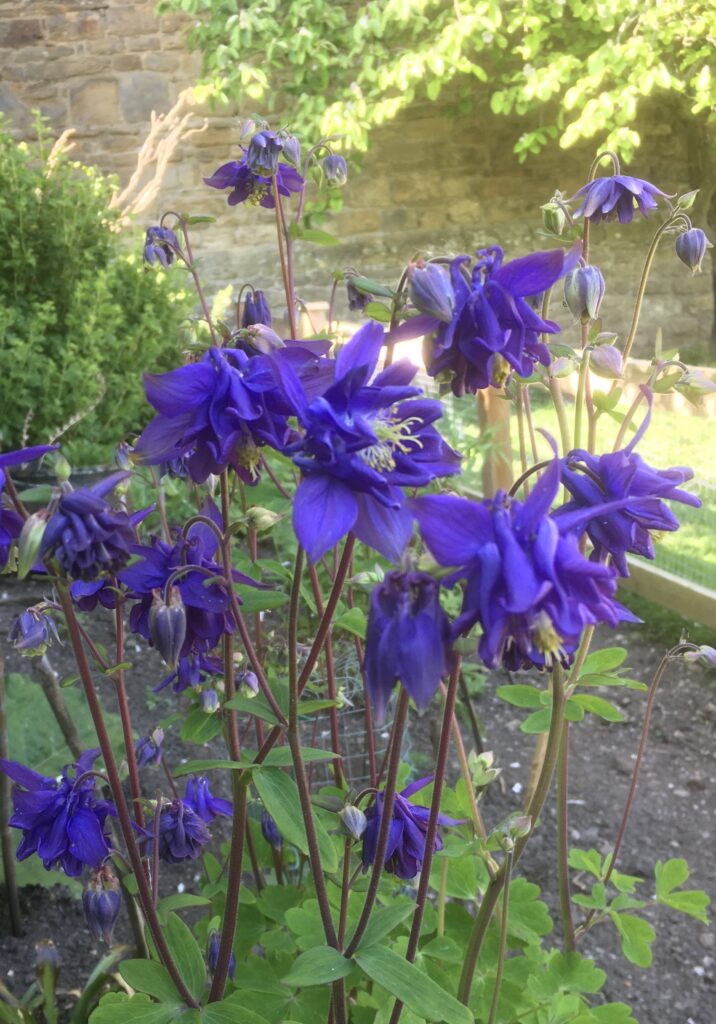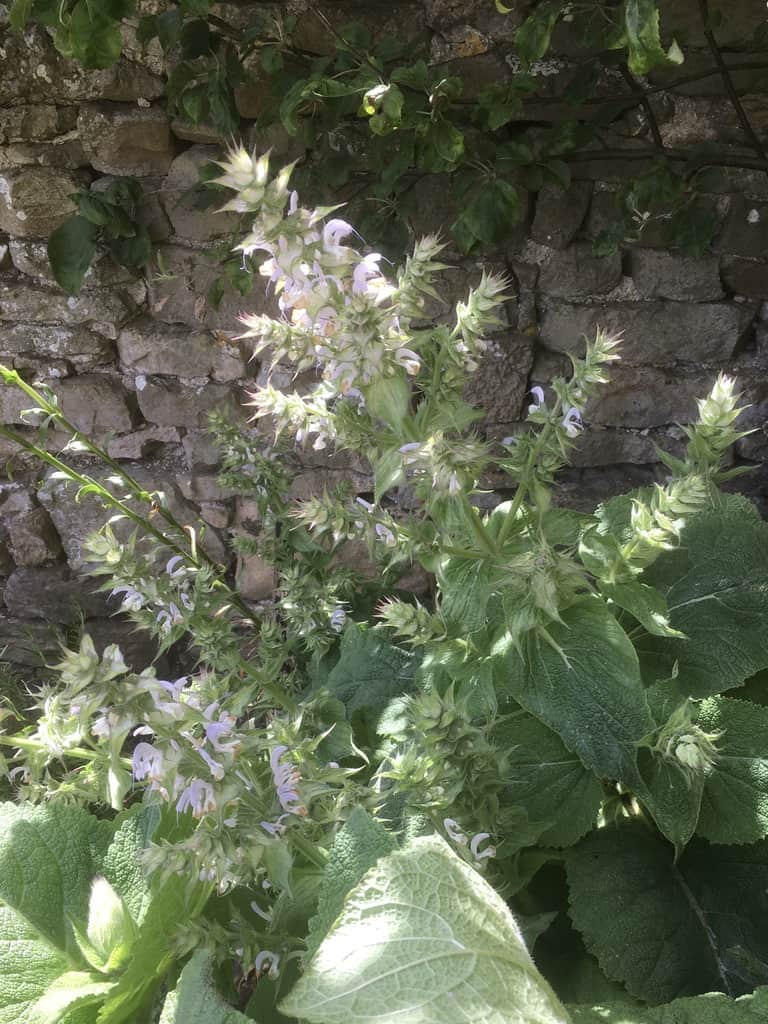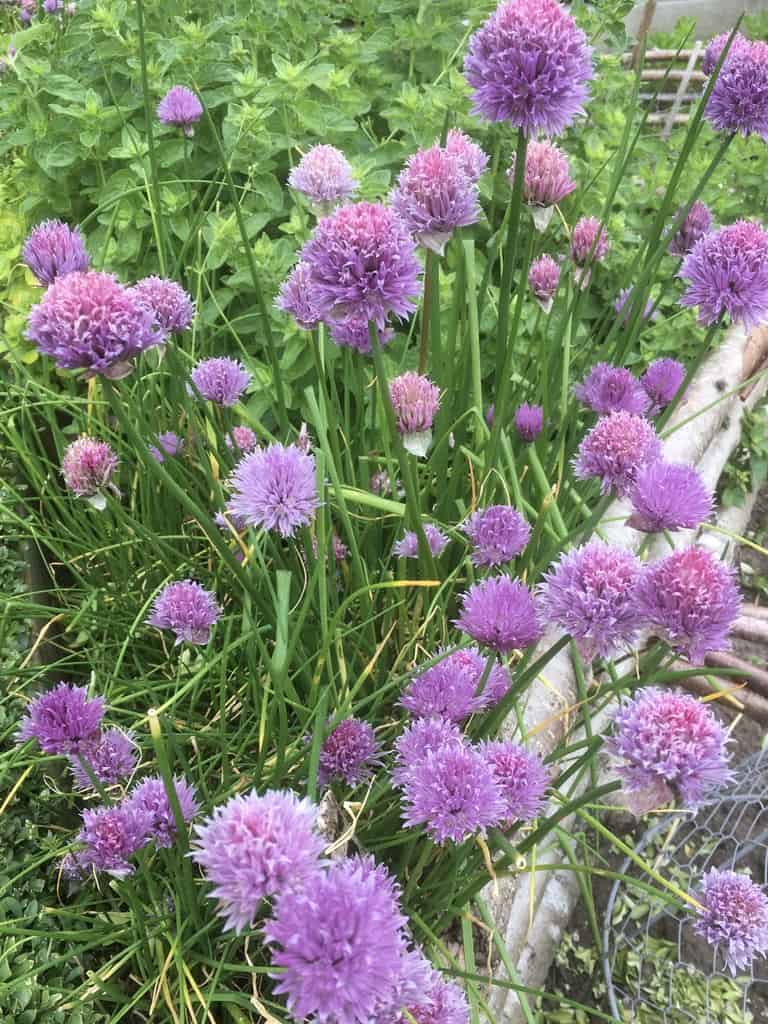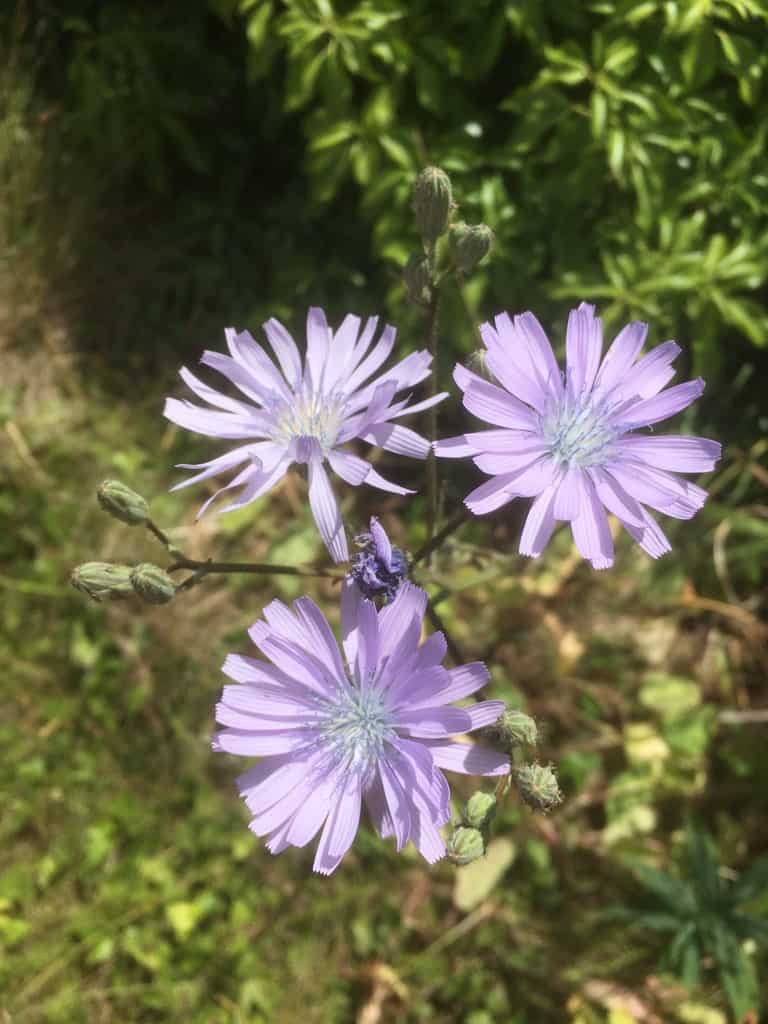Lady’s Mantle
Lady's Mantle (Alchemilla vulgaris) Flowers: June to August. Height: Up to 45cm (18in). The leaves’ scalloped edges are reputed to have given Lady's Mantle its name due to the resemblance to a cloak worn by English women in medieval times. The family name Alchemilla stems from the word alchemy, and refers to the belief in medieval times that water droplets forming on its leaves could turn...
Common Fleabane
Common Fleabane (Pulicaria dysenterica) Flowers: August to October. Height: 60cm (24in). The Latin name Pulicaria comes from Pulex meaning flea and the main use of this plant was as an insect repellent. The juice from the plant was used to drive away midges and fleas. Bunches of Common Fleabane were dried and burned as a fumigant or hung in rooms. Its other names include...
Mandrake
Mandrake (Mandragora officinarum) Flowers: June to August. Height: 10 - 50cm (4 - 20in). Also known as Satan's Apple, the mandrake may be the best known magical herb. Its root vaguely resembled a human with two arms and two legs and it was said that its scream, when pulled from the ground, could kill a man. Medicinal: Translated into Anglo Saxon around...
Celery – Wild
Celery - Wild (Apium graveolens) Flowers: Late summer. Height: Up to 100m (39in). Celery was also called Smallage which comes from 'small ache'. 'Ache' was an old French word for celery. Medicinal: Relieves aches and pains, cramp and aids digestion. Combined with Skullcap to calm nerves. Seeds were used as a diuretic, for gout and rheumatoid arthritis. Culinary: Used to form...
Saw-wort
Saw-wort (Serratula tinctoria) Flowers: July to September. Height: Up to 60cm (24in). It gets its name from the saw-like, serrated edges to its leaves. Medicinal: Helps to heal wounds and mends ruptures.
St John’s Wort
St John's Wort (Hypericum perforatum) Flowers: June to September. Height: Up to 90cm (36in). The common name is a reference to St. John, the youngest of Jesus' twelve apostles. Its earliest use dates back to the 6th century when, according to Gaelic tradition, the missionary St. Columba always carried a piece of St. John’s Wort because of his great regard for St. John....
Tansy
Tansy (Tanacetum vulgare) Flowers: June to August. Height: 120cm (48in). Tansy was a traditional Easter food in medieval times. Tansy cakes were made by baking a batter flavoured with green tansy juice. Used as a strewing plant. Medicinal: For nervousness and labour pains and to repel bugs, worms and insects. Culpeper's Complete Herbal (1653) said "Also it consumes the phlegmatic humours, the...
Yarrow
Yarrow (Achillea millifolium) Flowers: June to August. Height: 50cm (20in). Yarrow is linked to Achilles, one of legends’ greatest heroes, as it was said that he tended the wounds of his men. Hence, most of its common names are linked back to war - Soldier’s Woundwort, Bloodwort, Staunchweed and ‘Herbe Militaris’. It was also known to the Chinese in ancient times with 49...
Wormwood
Wormwood (Artemisia absinthium) Flowers: August to September. Height: 50 - 100cm (20 - 40in). Other commonly used names for this herb included Felon Herb, Naughty Man and Old Uncle Henry. It was also called Sailor’s Tobacco and smoked as a tobacco substitute. Wormwood (and Southernwood) contains an essential oil with powerful insect repellent properties. Bouquets or potpourris containing the herb were often placed...
Wood Sorrel
Wood Sorrel (Oxalis acetosella) Flowers: Mid to late spring. Height: 15cm (6in). Oxalis is derived from the Greek oxýs = acid, sharp, and hális = salt. Acetosella comes from the Latin acetum = vinegar or sour wine which also describes the plant's sour character. In the Middle Ages its flavour was so popular that it was even cultivated in England in the 15th...
Water Avens
Water Avens (Geum rivale) Also known as Cure all, Purple Avens and Throat Root. Medicinal: To help with many digestive issues and applied externally as a wash to various afflictions of the skin. A mixture of water avens’ flowers, leaves, and roots, combined with St.John’s wort was boiled in milk and mixed with butter to treat hoarseness. Magic & Myth: In folklore,...
Viper’s Bugloss
Viper's Bugloss (Echium vulgare) Flowers: June to September. Height: 75cm (30in). Medicinal: Culpeper's Complete Herbal (1653) stated that the root or seed made into a syrup was “very effectual for the comforting of the heart and expelling sadness and melancholy”. It was recommended to be eaten after blood letting due to its high vitamin content. It was good for treating inflammations and made...
Vervain
Vervain (Verbena officinalis) Flowers: June to October. Height: 90cm (36in). Known as a 'holy herb' and 'cure-all' to the Greeks and Romans and this reputation was undiminished throughout medieval times. Medicinal: For fever, tumours, blood infections, toothache, mouth ulcers, acne, piles and as an antidote to poisons. Culinary: Used to flavour salt and to drink as a tea. Magic &...
Valerian
Valerian (Valeriana officinalis) Flowers: June to August. Height: 120cm (48in). Medicinal: Recorded as a medicinal herb as early as the 4th century BC and recommended by the Greek physician Hippocrates, it was used as an antidote to poisons and the plague, to treat rickets and stomach upsets and was a good decongestant. By medieval times it was held in such esteem it was...
Thyme
Thyme (Thymus vulgaris) Flowers: May to October. Height: 30 - 45cm (12 - 18in). The herb was put among the household linens to repel insects. Ladies embroidered a thyme sprig in flower, along with a bee, on 'favours' for their favourite knights as it was believed to bring vigour and courage to the bearer. Thyme was also used as incense and placed on...
Tarragon
Tarragon (Artemisia dracunculus) Flowers: July to August. Height: 60cm (24 in). Also known as Dragonwort, the botanical names come from Greek and Latin: 'artemisia' for Artemis, the Greek virgin goddess of the hunt and the moon and 'dracunculus' from the Latin for ‘little dragon’. There was an old superstition that it could keep dragons and snakes at bay, reinforced by the serpent-like appearance...
Sweet Woodruff
Sweet Woodruff (Galium odoratum) Flowers: May to July. Height: 20cm (8in). Popular as a strewing herb. Medicinal: Applied to cuts and wounds and a herb regularly used on the battlefield. Culinary: Its sweet-scented leaves were used to infuse summer drinks and wine.
Sweet Violet
Sweet Violet (Viola odorata) Flowers: Late March to April. Height: 15cm (6in) In Greek mythology, Zeus had a lover named Io. In a fit of jealousy, his wife Hera turned her into a white heifer so Zeus created violets to give her something lovely to graze upon. The Ancient Greeks were obsessed with violets and wore crowns of them to relieve headaches and...
Sweet Marjoram
Sweet Marjoram (Origanum majorana) Flowers: June to August. Height: 30cm (12in). Introduced to England in the 14th century. Marjoram has long been prized for its many culinary, medicinal, aromatic uses and as a strewing herb. Fragrant Marjoram wreaths were used by Greeks for weddings and by Ancient Egyptians to adorn mummies. The Greek goddess Aphrodite was said to gift the herb its scent...
Sweet Cicely
Sweet Cicely (Myrrhis odorata) Flowers: June to September. Height: 150cm (60in). Also called Garden Myrrh and Sweet Chervil. Sweet Cicely is famously used by Carthusian monks in the 18th century to make the liqueur Chartreuse. Medicinal: It has has been used in medicine for centuries, with all parts of the herb used. It was used to purify the blood, improve appetite, and as...
Spearmint
Spearmint (Mentha spicata) Flowers: July to September. Height: 60cm (24in). Used as a strewing plant. Medicinal: Used for stomach problems, as an appetite stimulant, to improve mental powers and for Paget's Disease (pain, soft bones, fractures, swollen skull). Culpeper's Complete Herbal (1653) advised that it was "useful in all disorders of the stomach, as weakness, squeamishness, loss of appetite, pain and vomiting"....
Southernwood
Southernwood (Artemisia abrotanum) Flowers: July to August. Height: 120cm (48in). Also called Lad's Love or Southern Wormwood. It was used as a strewing plant and in many Catholic churches the herb is still used as incense. It was thought to promote beard and hair growth. Medicinal: Highly valued in the Middle Ages, fresh or dried leaves were used to improve digestion and...
Sorrel – Common
Sorrel - Common (Rumex acetosa) Flowers: May to August. Height: Up to 60cm (24in). Also known as Herb Patience, Garden Patience, Monk's Rhubarb and Patience Dock, in medieval times it was simply known as 'alleluyia' because it was one of the first green herbs of the new growing season to appear. The Latin name for the sorrel family is Rumex meaning 'I suck',...
Skullcap
Skullcap (Scutellaria galericulata) Flowers: July to September. Height: 60cm (24in). Sometimes spelled Scullcap, the name is derived from the Latin word scutella, which means little dish, as the small flowers of these plants have a dish, or helmet-like shape reminiscent of the skullcaps or helmets worn in medieval times. Medicinal: Acting as a mild sedative, it was used to relieve anxiety and...
Self-Heal
Self-Heal (Prunella vulgaris) Flowers: June to September. Height: 20cm (8in). Also called Woundwort, All-heal, Heart of the Earth, Cure-all and Carpenter's Weed. Medicinal: An ancient medicinal herb with some proven antibacterial and astringent properties. Fresh leaves of Self-Heal were commonly made into a poultice or compress for wounds, sores or other skin afflictions, due to its ability to stop bleeding and speed...
Sea Holly
Sea Holly (Eryngium maritimum) Flowers: June to September. Height: 90cm (36in). Medicinal: The bark was ground for use as an antiseptic. The leaves used to treat rheumatism, neuralgia, poison arrow wounds and kidney stones. When drunk as a tea, it relieved pain and calmed the nervous system. Culinary: Medieval herbalists made preserves and candied the stems which were valued as aphrodisiacs.
Savory – Summer & Winter
Savory - Summer (Satureja hortensis) & Winter (Satureja montana) Flowers: June to September. Height: 20cm - 30cm (8 - 12in). Medicinal: Used for asthma, coughs and chest infections, intestinal disorders including cramps and applied as a poultice for sciatica. It could improve the digestive system by "expelling wind in the stomach and bowels, and is a present help for the rising of the...
Sage
Sage (Salvia officinalis) Flowers: July to September. Height: 60cm (24in). Thought to have been introduced to Britain by the Romans. The name Salvia comes from the Latin salvere meaning 'to heal' and its strong aroma made it popular as a strewing herb. Medicinal: Sage was known as a 'cure-all' and valued for centuries in this country for its antibacterial properties. It had...
Saffron Crocus
Saffron Crocus (Crocus sativus) Flowers: Autumn. Height: Up to 10cm (4in). Saffron comes from the three stigma in the flower which must be harvested by hand in the autumn and then dried. Often referred to as 'red gold', it can take thousands of flowers to produce a few ounces of dried saffron which is what makes it so expensive. It was very popular...
Rue
Rue (Ruta graveolens) Flowers: June to July. Height: 75cm (30in). Rue was popular enough to be named the Herb of Grace while the shape and blue-green colour of its leaves were admired for their beauty in the Middle Ages. Used as a strewing herb and as a medieval disinfectant for cleaning. Medicinal: A treatment for headaches, eye problems, bites, plague, poisons, infections...
Rosemary
Rosemary (Rosmarinus officinalis) Flowers: March to May. Height: 50 - 100cm (20 - 40in). Queen Philippa, wife of King Edward III, is believed to have introduced the herb to England from the Mediterranean in the 14th century when her mother sent her some cuttings. John Harvey, a 20th century authority on English medieval gardens, suggested that these cuttings were first planted in the...
Primrose
Primrose (Primula vulgaris) Flowers: March to June. Height: 20cm (8in). Common names include Golden rose, Lent rose, Easter rose, and Butter rose. The name comes from prima rosa, meaning first rose in medieval Latin as it was one of the first flowers to appear in the spring. The Romans held that primroses were given to the earth in memory of a son of...
Peppermint
Peppermint (Mentha piperita) Flowers: July to August. Height: Up to 90cm (35in). Peppermint is a natural hybrid of water mint and spearmint and was first cultivated in England in the late 17th century. Monks were known to use peppermint as a tooth polisher while cheese makers used its strong smell to keep rats and mice out of the storeroom. The Roman philosopher Pliny...
Pennyroyal
Pennyroyal (Mentha pulegium) Flowers: July to September. Height: 23cm (9in). Greek mythology and the Mentha (Mint) family are said to be connected. Minthe was a river nymph in the Cocytus River (one of the five rivers of Hades). Persephone caught her husband Hades about to seduce her and in her revenge she turned Minthe into a lowly mint plant that people would walk...
Parsley – Flat-leaved
Parsley - Flat-leaved (Petroselinum hortense) Flowers: June. Height: Up to 60cm (24in). A 13th century herbalist wrote that Petroselinum comes from the Latin 'petrosus' meaning 'stony' because “it grows in or near stones and stony places”. This perhaps referred to the fact that it could be grown in poorer soil. In Rome it was associated with the goddess Persephone, queen of the underworld,...
Oxeye Daisy
Oxeye Daisy (Leucanthemum vulgare) Flowers: June to September. Height: 60cm (24in). Also known as Day's Eye, this plant relates the flower to an eye. The Oxeye Daisy was originally dedicated to Diana, the goddess of the moon and called Moonpenny. In Christianity the flower was associated with Mary Magdalen and called Maudelyn or Maudlin Daisy after her. Also called Bruisewort, Dog Daisy, Horse...
Oregano
Oregano (Origanum vulgare) Flowers: Late summer. Height: 30 - 60cm (12 - 24in). Oregano is native to Britain and known as Wild Marjoram. Its sweet aroma also meant that it was commonly used as a strewing herb in churches. It was often found growing in graveyards and if it was found growing on a grave, folk tradition says that the departed person was...
Navelwort
Navelwort (Umbilicus rupestris) Flowers: May to August. Height: Up to 25cm (10in) So named after the dimple in the middle of each leaf which was thought to resemble a navel or tummy button. Also called Pennywort, possibly referring to the larger copper coins from an earlier time, and also Wall Pennywort due to its abundance on walls and stony hedge banks. It is...
Nasturtium (Tropaeolum majus)
Nasturtium (Tropaeolum majus) Flowers: July to October. Height: 30cm (12in). Brought from Peru to France in 1684 and then on to Britain. Nasturtium was a valued plant and called Indian Cress because of its similarity in flavour to watercress. Medicinal: It was known as an antiseptic, anti inflammatory, and good for treating scurvy and influenza due to its high vitamin C content....
Musk Mallow
Musk Mallow (Malva moschata) Flowers: July and August. Height: Up to 90cm (36in). Musk mallow is so-called because it is scented and is said to have been used by the Ancient Greeks to decorate graves, a custom also employed by the Anglo-Saxons. It is also known as St Simeon’s herb. St Simeon is said to have cured his blindness by bathing his eyes...
Mugwort
Mugwort (Artemisia vulgaris) Flowers: July to September. Height: Up to 150cm (60in). Used as a strewing plant and to repel moths. Medicinal: Mugwort was believed to have many medicinal properties, to be effective against poisons and fevers, used as a sedative, and for treating flu, parasites, foot problems (made into a foot ointment), stress, asthma, epilepsy and for hastening and easing labour...
Motherwort
Motherwort (Leonurus cardiaca) Flowers: June to September. Height: Up to 150cm (60in). Known as Throw-wort, Lion's Ear, and Lion's Tail, it is a member of the mint family. Medicinal: Used to treat heart palpitations, depression, melancholy, cramps and convulsions and later used by midwives to stimulate contractions during childbirth. Culpeper's Complete Herbal (1653) wrote ”There is no better herb to drive melancholy...
Monkshood – purple & yellow
Monkshood (Aconitum napellus - purple & Aconitum lycoctonum - yellow) Flowers: June to September. Height: Up to 100cm (40in). Also known as Aconite, Devil's Helmet and Queen of Poisons, Monkshood refers to the shape of its flower, which resembles a hood worn by medieval monks. Its flowers were worn by early Christian hermits as protection from insects and small animals due to their...
Milk Thistle
Milk Thistle (Silybum marianum) Flowers: June to August. Height: Up to 200cm (80in). Also known as the Marian or Mary Thistle, the species name Marianum comes from the Latin and refers to a legend that the milky white streaks on the spiny leaves of this species of thistle came from the milk of the Virgin Mary nursing her child whilst fleeing to Egypt....
Masterwort
Masterwort (Peucadanum - or Imperatoria - ostruthium) Flowering: June to August. Height: 60cm (24in). Also known as Felon-grass and Felonwort, very little is actually known about the plant's history but archaeological findings show that it might have been introduced into the British Isles from Central Europe. The oldest evidence as a cultivated plant was from the early Middle Ages when it was known...
Marsh Mallow
Marsh Mallow (Althaea officinalis) Flowers: Summer. Height: 120cm (48in). Althaea comes from the Latin word 'Altheo', meaning 'I cure' and the Greek 'Altho' meaning ‘to heal’. Medicinal: The plant's medicinal use has a long history dating back over 2,000 years. Beginning around 9th century BC, the Greeks used Marsh Mallow to heal wounds and soothe sore throats. Roman doctors made a balm...
Marigold
Marigold (Calendula officinalis) Flowers: June to September. Height: Up to 60cm (24in). Medicinal: In medieval times, the Marigold, or Maryegold, was seen as one of the main 'plague herbs'. The flowers were used to heal wounds, headaches and toothache while Culpeper's Complete Herbal (1653) recommended the leaves be mixed with a little vinegar, for "any hot swelling bathed with it, instantly gives ease,...
Maidenhair spleenwort
Maidenhair spleenwort (Asplenium trichomanes) Flowers: Evergreen. Height: 8cm (3in). Medicinal: The plant has long been used to treat spleen and blood disorders. Doctrine of Signatures: The elongated, spore-bearing structures on the backs of the leaves were thought to bear a resemblance to the human spleen and so the plant became known as Spleen-wort.
Maiden Pink
Maiden Pink (Dianthus deltoides) Flowers: May to June. Height: 8cm (3in). Also known as Lady's Cushion, Meadow Pink, Carnation and Gillyflowers (known as 'pinks'), different types of Dianthus were second only in popularity to roses during the Middle Ages. “The fairest flowers o' the season, Are our carnations and streaked gillyvors.” - William Shakespeare from The Winter's Tale. According to tradition, pinks sprang...
Madonna Lily
Madonna Lily (Lilium candidum) Flowers: May to June. Height: Up to 120cm (48in). The Madonna Lily is one of the oldest cultivated plants and has been around for more than 4000 years. It became associated with the Virgin Mary, symbolizing innocence and purity, hence its common name, the Madonna Lily. It was seen in many works of art, often in medieval representations of...
Lungwort
Lungwort (Pulmonaria officinalis) Flowers: February to April. Height: 40cm (16in). Also called Jerusalem Cowslip and Bethlehem Sage, Pulmonaria was known in the Middle Ages as pulmo lupi - wolf’s lung. Medicinal: For all chest conditions, Culpeper's Complete Herbal (1653) stated that the plant be used "to help the diseases of the lungs, and for coughs, wheezings, and shortness of breath, which it...
Lily
Lily (Lilium) Flowers: Summer Height: 120cm (48in). In the Middle Ages, a red lily seems to have been a symbol of the Virgin Mary although this was replaced in popularity by the white lily which was to become a symbol of her purity of soul and chastity. In later Greek and Roman times, the lily was regarded as the symbol of sublime love, procreation, and glory and was...
Liquorice
Liquorice (Glycyrrhiza glabra) Flowers: June to July. Height: 120cm (48in). Liquorice root has been used in Europe since prehistoric times and was introduced to Britain by monks or crusaders as a medicinal herb in the Middle Ages. More than 30-50 times sweeter than sugar, it derives its name from the Greek words glycys (sweet) and rhiza (root). Medicinal: Anti-inflammatory and used for...
Lemon Balm
Lemon Balm (Melissa officinalis) Flowers: Summer. Height: 80cm (32in). A popular strewing herb. Medicinal: A very old herb, Lemon Balm was used to treat sleeplessness, heart disease, stress-related stomach and digestive ailments, leprosy and used as an anti viral. Known as a good remedy for depression, Culpeper's Complete Herbal (1653) stated: "it causes the mind and heart to become merry". The Roman...
Lavender
Lavender (Lavendula angustifolia - formally Lavendula officinalis) Flowers: June to July. Height: 80cm (32in). We know this plant as English Lavender although Lavender comes from the Old French word Lavandre which literally means 'to wash' highlighting its properties as a disinfectant. It was used as a strewing plant to deter fleas and moths. Medicinal: For hundreds of years, it was used alone...
Hyssop
Hyssop (Hyssopus officinalis) Flowers: July to September. Height: 60 - 90cm (24 - 36in). Hyssop is a native of southern Europe. It is not clear when hyssop was brought to England but it may have been as early as the 13th century. The name comes from the Greek word hyssopos and the Hebrew word for Azob, a holy herb, used for cleaning sacred...
Houseleek
Houseleek (Sempervivum tectorum) Flowers: Spring to summer. Height: Up to 15cm (6in). Its association with lighting is a long one and the plant was also called Jupiter's Beard and Thor's Beard (referring to Jupiter, King of the gods and Thor, the Norse god of Thunder). Charlemagne (720-814), first Holy Roman Emperor, actually ordered that all his subjects in his kingdom grow houseleeks on...
Horseradish
Horseradish (Armoracia rusticana) Flowers: May to June. Height: Up to 90cm (36in). Horseradish has been cultivated since antiquity. According to Greek mythology, the Delphic Oracle told Apollo that the horseradish was worth its weight in gold. It arrived in England from western Asia sometime before the 16th century. Medicinal: Culpeper's Complete Herbal (1653) reported that for chronic rheumatism “the bruised root laid...
Horehound – White & Horehound – Black
Horehound - White (Marrubium vulgare) & Horehound - Black (Ballota nigra) Flowers: June to September. Height: 30 - 90cm (23 - 36in). Black horehound has purple flowers and is also known as Black Stinking Horehound due to its strong smell. Medicinal: Horehound has been mentioned in conjunction with medicinal use dating back to the 1st century BC, where it appeared as a...
Herb Paris
Herb Paris (Paris quadrifolia) Flowers: May to June. Height: 40cm (16in). Also known as Herb True-love and One-berry. Medicinal: John Gerard's Herball (1597) described it as “an extremely cold herb whereby it represses the rage and force of poison,” both the fresh berries and the dried and powdered herb being administered over the course of twenty days as antidotes to such highly...
Henbane
Henbane (Hyoscyamus niger) Flowers: Summer. Height: Up to 60cm (24in). Also called Stinking Nightshade, Henbane it is a very poisonous plant which had to be used with care. Medicinal: Bald's Leechbook, an Anglo Saxon medical text, written in the 9th century, recommended Henbane root be boiled in vinegar or wine and the liquid used to treat toothache. The leaves would cool inflammations...
Hedge Woundwort
Hedge Woundwort (Stachys sylvatica) Flowers: June to October. Height: 80cm (32in). Commonly known as Whitespot, Red Archangel and Hedge Nettle. Medicinal: Known for its antiseptic qualities, it was widely used in the Middle Ages as a lint substitute for dressing wounds, especially those inflicted on the battlefield, as it was effective for pain, swelling and inflammation. The famous 16th century herbalist John...
Heartsease
Heartsease (Viola tricolour) Flowers: April to September. Height: 12cm (5in). The cheerful little blooms can appear in a variety of colours and other names include Johnny-jump-up, Wild Pansy and Love-lies-bleeding and it is associated with the love of Christ. Early Christians saw the three coloured petals as a symbol of the Holy Trinity while King Arthur and his knights at the round table...
Gooseberry
Gooseberry (Ribes uva-crispa) Flowers: Blossoms in spring, berries in midsummer Height: 150cm (60in). During the reign of Edward I, gooseberry bushes costing 3 old pence were planted at the Tower of London by the royal gardener in 1275. Medicinal: Used to aid appetite, quench the thirst and calm swellings. The young leaves were used to treat kidney and bladder stones. Plague sufferers...
Good King Henry
Good King Henry (Blitum bonus-henricus) Flowers: May to July. Height: 60cm (24in). Good King Henry comes from the German Guter Heinrich (Good Henry) to distinguish it from Böser Heinrich (Bad Henry) a name for the poisonous plant Mercurialis perennis. Native to Southern Europe, it was brought to Britain by the Romans. Medicinal: A poultice or ointment made from the leaves was used...
Golden Rod
Golden Rod (Solidago virgaurea) Flowers: Late summer. Height: Up to 90cm (36in). Also called Woundwort. Medicinal: Valued for its astringent and antiseptic properties, it was one of the main wound remedies of the Middle Ages. Culpeper's Complete Herbal (1653) stated it was long famous against inward hurts and bruises. Also known for its diuretic effect, it was a treatment for 'strangury' (cystitus)...
Foxglove
Foxglove (Digitalis purpurea) Flowers: Mid summer. Height: Up to 180cm (70in). The Latin name Digitalis comes from the word digitanus, meaning finger, possibly because a finger could fit inside the thimble-shaped flowers. Foxglove is an ancient name that goes back to at least the time of Edward III (1327-1377) and it has many other names including Witch's Gloves, Bloody Bells and Fairy Thimbles....
Flax
Flax (Linum usitatissimum) Flowers: June to July. Height: 70cm (28in). Linum was better known as linen as one of its primary uses was in the production of linen cloth made from flax stems. It was harvested before the seeds ripened then soaked in water (often rivers) to rot the core. Unfortunately this practice polluted the rivers, smelled dreadful, and made the water unfit...
Figwort
Figwort (Scrophularia nodosa) Flowers: June to August. Height: Up to 90cm (36in). Also known as Throatwort. Medicinal: The plant was applied to dissolve clotted and congealed blood coming from wounds, bruises and falls or any other “knobs, kernels, bunches or wens” growing from the flesh. In the Middle Ages, the herb was thought to be one of the best medicinal plants to...
Feverfew
Feverfew (Tanacetum parthenium) Flowers: June to September. Height: Up to 45cm (18in). A corruption of the Latin word Febrifugia - meaning something that drives away fevers. Known as Arsesmart in Yorkshire, the leaves were also used as a moth repellent. Medicinal: Brought to Britain by medieval herbalists, the leaves, fresh or dried, were used to reduce fevers and relieve headaches and migraine....
Fennel
Fennel (Foeniculum vulgare) Bronze Fennel (Foeniculum vulgare 'purpureum') Flowers: Early summer. Height: Up to 180cm (70in). Fennel was cultivated by the ancient Romans for its aromatic fruits and succulent, edible shoots. It was a popular herb in the household of King Edward I of England with his account books from 1281 listing “a purchase of 8 1/2 pounds of fennel seed” (a month’s...
Eyebright
Eyebright (Euphrasia officinalis) Flowers: July to September. Height: 20 cm (8in). The poet Milton mentions this plant in his book Paradise Lost (1667) in which Archangel Michael gives Eyebright to Adam to cure an eye infection. Medicinal: Used since the Middle Ages as an eyewash for infection or inflammation of the eye. The dried herb was often combined with tobacco and smoked...
Evening Primrose
Evening Primrose (Oenothera biennis) Flowers: Late spring to late summer. Height: 100cm (40in). Introduced to Britain in the late 1600s, its names of Evening Primrose or Evening Star alludes to its large, yellow, sun-like flowers that only open in the evening. Medicinal: Medieval practitioners used various parts of the plant to treat a number of common ailments, including pain, skin disorders and...
Elecampane
Elecampane (Inula helenium) Flowers: July to September. Height: 30 - 45cm (12 - 18in). There is a legend that says Helen of Troy had this plant in her hand when she was kidnapped by Paris who had fallen in love with her. As she left her homeland, the plant is said to have sprouted wherever her tears fell. From this legend, the plant...
Echinacea
Echinacea (Echinacea purpurea) Flowers: June to September. Height: 90cm (36in). Echinacea's name is derived from the Greek word for hedgehog, inspired by the appearance of the flower's central cone. Also known as Purple Coneflower, it was first sent to England in 1699 by the natural historian - Reverend John Banister. Medicinal: It was known for stimulating the immune system by speeding up...
Dittany of Crete
Dittany of Crete (Origanum dictamnus) Flowers: Summer. Height: Up to 30cm (12in). Medicinal: Best known as a wound herb and as an antidote to snakebite and poison due to strong antiseptics contained in the leaves which was made into a medicinal tea. The dried herb, rubbed between the hands and then mixed with a little wine, could be spread on the body to...
Dill
Dill (Anethum graveolens) Flowers: Late June to July. Height: 60cm (24in). Medicinal: Known for its calming effect on the digestive system, Culpeper wrote in his Complete Herbal (1653) “the decotion of Dill is a gallant expeller of wind”. Seeds were boiled and drunk to help swellings and cure hiccoughs or made into an oil to ease pain. Culinary: Salad dressings and sauces....
Dianthus
Dianthus (Dianthus caryophyllus) Flowers: July to August. Height: 30cm (12in). Probably introduced by Carthusian monks in the 15th century, its name translates as 'divine flower’ and they were beloved for their pretty, frilled flowers and scents. Medieval women liked to weave them into fragrant crowns and garlands. Also called Clove Pink, Carnation or Mary's Rose, they appeared in religious and secular art of...
Dame’s Rocket
Dame's Rocket (Hesperis matronalis) Flowers: May - June. Height: 60 - 90cm (24 - 36in). This plant has an interesting history in terms of its names. 'Dame' marks this flower as a favourite of women and mothers in medieval flower lore. It was called the Vesper-flower, because it emits its perfume in the evening and is scentless during the day. This is how...
Creeping Cinquefoil
Creeping Cinquefoil (Potentilla Reptans) Flowers: June to September. Height: 15cm (6in). In French, 'foil' means leaf. Also called Five Fingers, the five-petaled Cinquefoil flower was a popular feature in church architecture, often used in windows and arches in Normandy and Brittany through the 15th century. The word Potentilla comes from Latin for 'powerful' and as an emblem in heraldry, represented strength, power, honour...
Cowslip
Cowslip (Primula veris) Flowers: April to May. Height: 25cm (10in). Gathered since the Middle Ages it was known by various names including Peagle, Primerole, and Cowslyppe, a name thought to be derived from “cow slop” or dung possibly because it grew in meadows and pastures where cattle grazed. Other names were Lady's Keys, because it unlocked the treasures of spring, and St. Peter's...
Cotton Lavender
Cotton Lavender (Santolina chamaecyparissus) Flowers: June to August. Height: 30 - 90cm (12 - 36in). Leaves and flowers were added to pot-pouri and placed in linen chests and wardrobes to repel moths and fleas. Its dried foliage was mixed with chamomile and coltsfoot and used as herbal tobacco. Medicinal: For poisonous bites, stings and internal parasites. At Bolton Castle, yellow cotton lavender...
Cornflower
Cornflower (Centaurea cyanus and Centaurea montana) Flowers: June to September. Height: Up to 75cm (30in). The Latin name Centaurea came from the legend of the centaur Chiron, who was wounded by an arrow poisoned with the blood of the Hydra (a huge poisonous water snake), but his wound was healed by covering it with cornflowers. Commonly known as Bachelor's Button, Blue-bottle and Mary's...
Coriander
Coriander (Coriandrum sativum) Flowers: July. Height: 45 - 60cm (18 - 24in). Coriander was introduced into Britain by late Bronze Age invaders. Medicinal: Deters fever, cramps, sleeplessness and tuberculosis. Culinary: Used to flavour soups and salads or mixed with Cumin and vinegar to preserve meat. Magic & Myth: During the Middle Ages the seeds were considered a love potion.
Columbine
Columbine (Aquilegia vulgaris) Flowers: Early summer. Height: Up to 90cm (36in). Due to the shape of the flowers, it was also known as Granny's Bonnet. Columbine is derived from Columba meaning 'dove' as the petals were said to look like five doves sat in a ring and it was a popular choice to put in church carvings and in medieval paintings. Aquilegia is...
Clary Sage
Clary Sage (Salvia sclarea) Flowers: Mid to late summer. Height: 90cm (36in). Also known as Clear Eye Sage. Medicinal: Descriptions of its medicinal use date back to the 4th century BC and it was used throughout the Middle Ages in Europe. It was called Clear Eye Sage* as ancient herbalists used it as an eyewash to sooth and cleanse the eye due...
Chives
Chives (Allium schoenoprasum) Flowers: May to July. Height: Up to 38cm (15in). Sometimes referred to as 'rush leeks', this flavourful herb, tasting like mild onion, has been around for at least 5,000 years and has been cultivated in England since the Middle Ages. Medicinal: Chives were used to stimulate the appetite, promote digestion and improve blood circulation. Culpeper's Complete Herbal (1653) advised...
Chicory
Chicory (Cichorium intybus) Flowers: Late June to October. Height: 90cm (36in). Known as Succory, Blue Daisy and Wild Endive, the plant is one of the earliest cited in recorded literature by Horace, a leading Roman poet, at the time of Augustus, 1st emperor of the Roman empire. The plant’s ability to thrive along roadsides came to symbolize Christian perseverance and as such is...
Chervil
Chervil (Anthriscus cerefolium) Flowers: May to July. Height: Up to 60cm (24in). Known as Herb of Joy, Chervil was thought to make one merry, sharpen the wit, bestow youth upon the aged and to symbolise sincerity. In medieval times it was considered to be an important Lenten herb as its flavour and fragrance resembled the myrrh brought by the wise men to the...
Chamomile
Chamomile (Camaemelum nobile) Flowers: June to October. Height: Up to 30cm (12in). Associated with St Anne, mother of the Virgin Mary and was one of the nine sacred Anglo-Saxon herbs. Its oil was used to perfume baths and the gentle aroma of its leaves, when crushed, made it a popular strewing herb. Medicinal: With anti-inflammatory and antimicrobial properties, it has been used...
Centaury
Centaury (Centaurium erythraea) Flowers: June to September. Height: 30cm (12in). Centaurium is derived from the Latin Centaurus. This refers to the myth that Chiron, the legendary Centaur in Greek mythology who was believed to be an expert in herbal medicines, discovered the plant's medicinal properties. Erythraea too has been drawn from the Greek word denoting red and refers to the red coloured flowers...
Caraway
Caraway (Carum carvi) Flowers: May to July. Height: Up to 75cm (30in). Medicinal: For digestive problems bruises, colic, heartburn, bloating, gas, loss of appetite and mild spasms of the stomach and intestines. Culinary: Aniseed flavouring for soups and breads. Roots were cooked like carrots and parsnips. Magic & Myth: Used in Elizabethan love potions to prevent partners from straying.
Butterbur
Butterbur (Petasites albus) Flowers: March to May. Height: 60cm (24in). Its name is linked to the tradition of using its large leaves to wrap butter to stop it melting in warm weather. Medicinal: It can be traced back to the Middle Ages when it was used to fight plague and fever by provoking sweat, and in the 1600s for treating coughs, asthma...
Burdock
Burdock (Arctium lappa) Flowers: July to October. Height: Up to 200cm (80in). Medicinal: Known as one of the finest herbal blood purifiers, it was thought to be particularly good for snakebite. A diuretic and anti-inflammatory, it was good for sciatica and also used for skin problems. Culinary: Dandelion combined with burdock made a drink consumed in Britain since the Middle Ages. ...
Bugle
Bugle (Ajuga reptans) Flowers: May to July. Height: 15cm (6in). Also known as thundre-clovere because its light flowers and dark leaves were thought to resemble a changeable and stormy sky. Medicinal: One of the many plants that medieval herbalists regarded as a 'cure-all'. The flowers and leaves were mixed with wine to cure and staunch bleeding and treat stab wounds, ulcers and...
Buckler Leaf Sorrel
Buckler Leaf Sorrel (Rumex scutatus) Flowers: June to July. Height: Up to 60cm (24in). It was so named because the leaves look like a medieval buckler shield (a small shield used for hand to hand combat). Sorrel was prized by monks and was simply known as alleluyia because it was one of the first green herbs of the new growing season to appear....
Borage
Borage (Borago officinalis) Flowers: June to July. Height: Up to 90cm (36in). Also known as Starflower, it was referred to as the 'herb of courage' and its name may be derived from the Celtic word borrach meaning ‘glad courage’. Borage tea was given to competitors in tournaments, promoting bravery on the jousting field. Medicinal: Good for bronchial, chest and other respiratory complaints,...
Bluebell
Bluebell (Hyacinthoides non-scripta) Flowers: April to May. Height: 30cm (12in). The bulb's sticky sap made an ideal glue for fastening flight feathers to arrows fired by medieval archers as well as for bookbinding and starching ruffs. Other names include Cuckoo’s Boots, Wood Hyacinth, Lady’s Nightcap, Witches’ Thimbles and Fairy Flowers. Medicinal: Used as a diuretic and to aid kidney function. Magic...
Bittersweet
Bittersweet (Solanum dulcamara) Flowers: May to September followed by clusters of bright red berries. Height: Up to 200cm (80in). Also called Woody Nightshade, Poisonberry and Snakeberry. Valued by herbalists since ancient Greek times it was used with caution as all parts of the plant are poisonous. Medicinal: The stems and flowers were used to treat skin problems and rheumatism, warts and tumours....
Bistort
Bistort (Bistorta officinalis) Flowers: June to July. Height: Up to 90cm (36in). Also known as Dragon-wort and Snakeweed. Medicinal: Rich in tannin, it was one of the strongest astringents available to medieval herbalists and used for the treatment of infectious diseases, small burns and wounds and to stop bleeding. Water distilled from its leaves and roots would be used to wash any...

